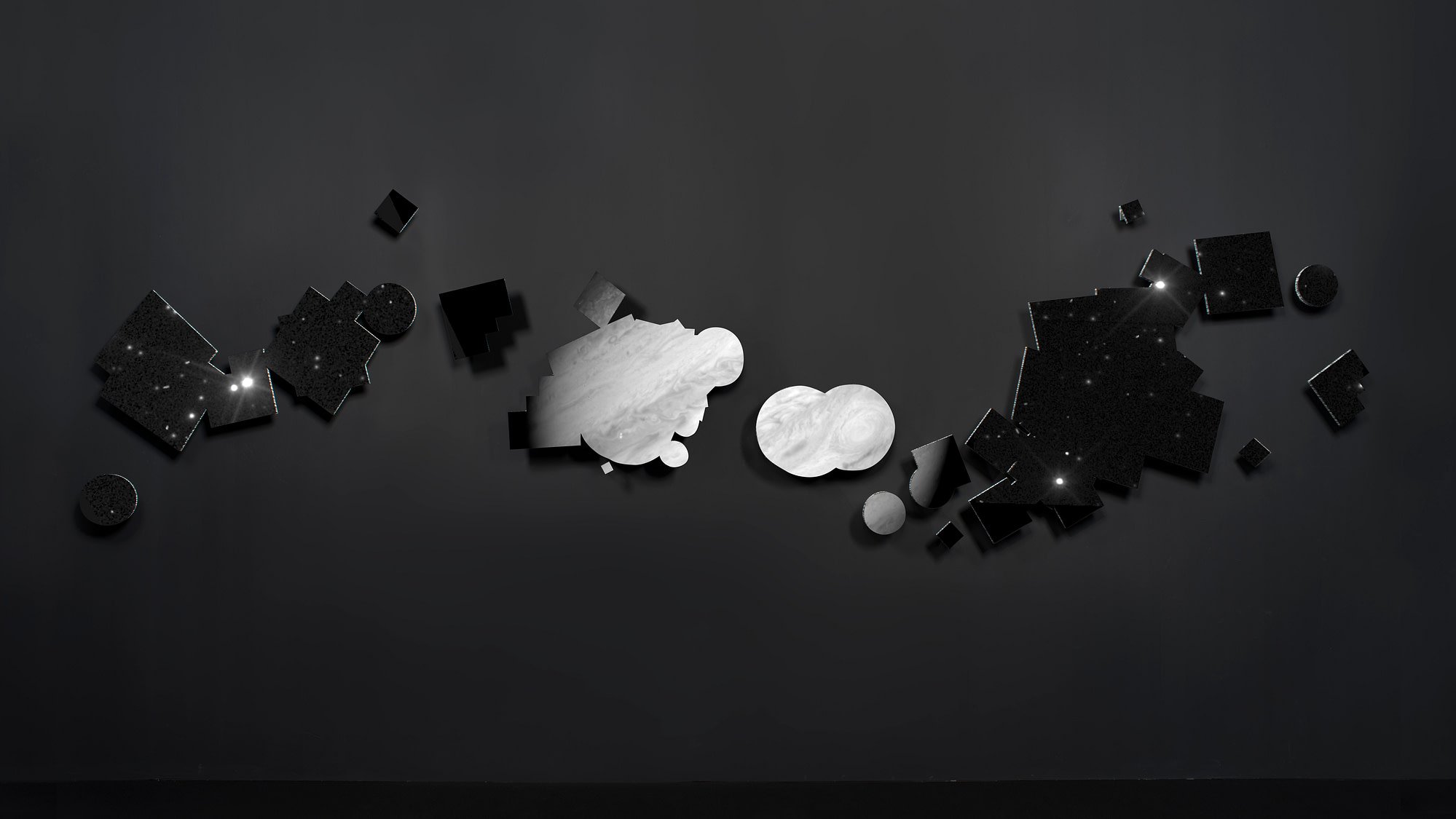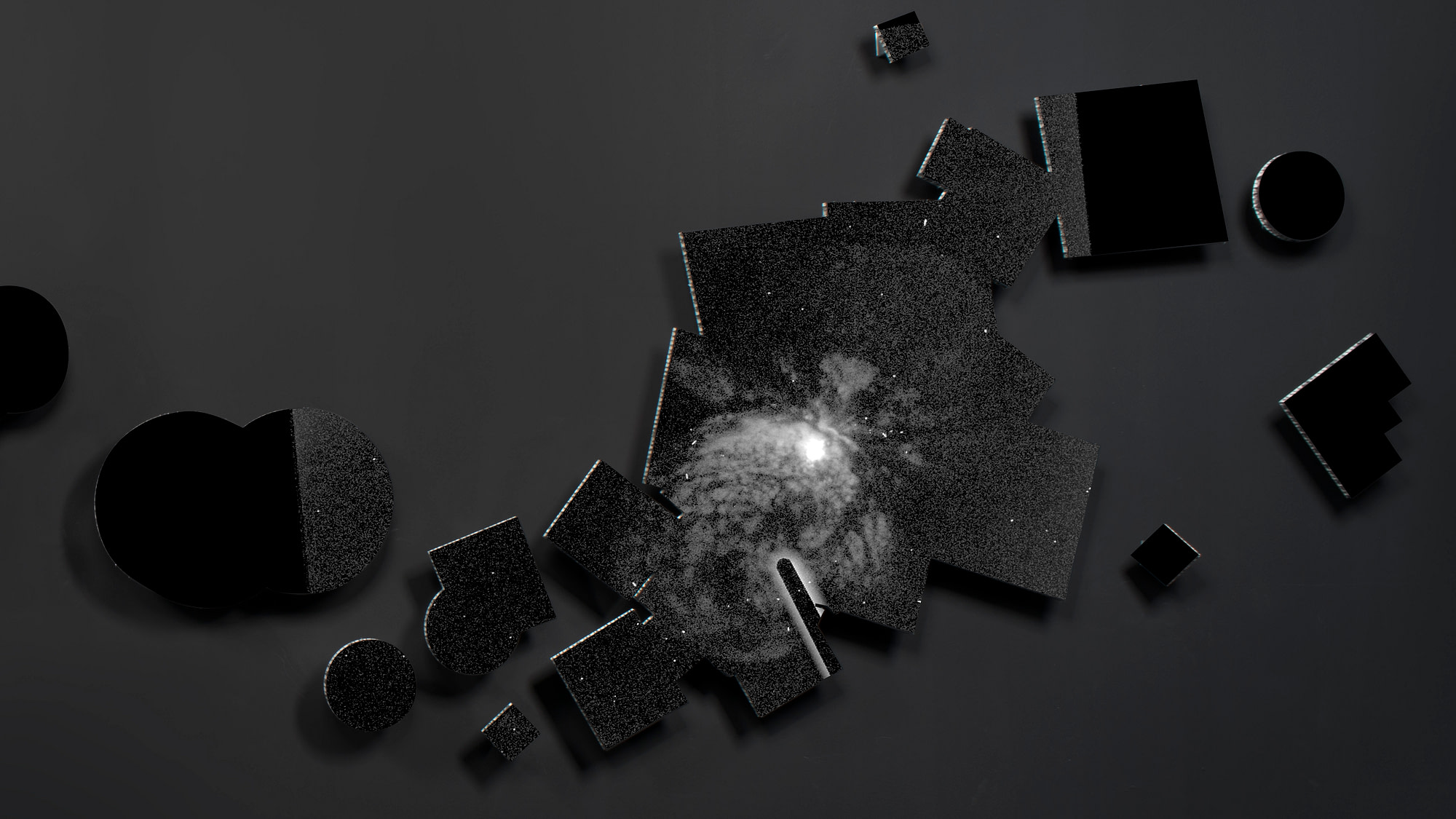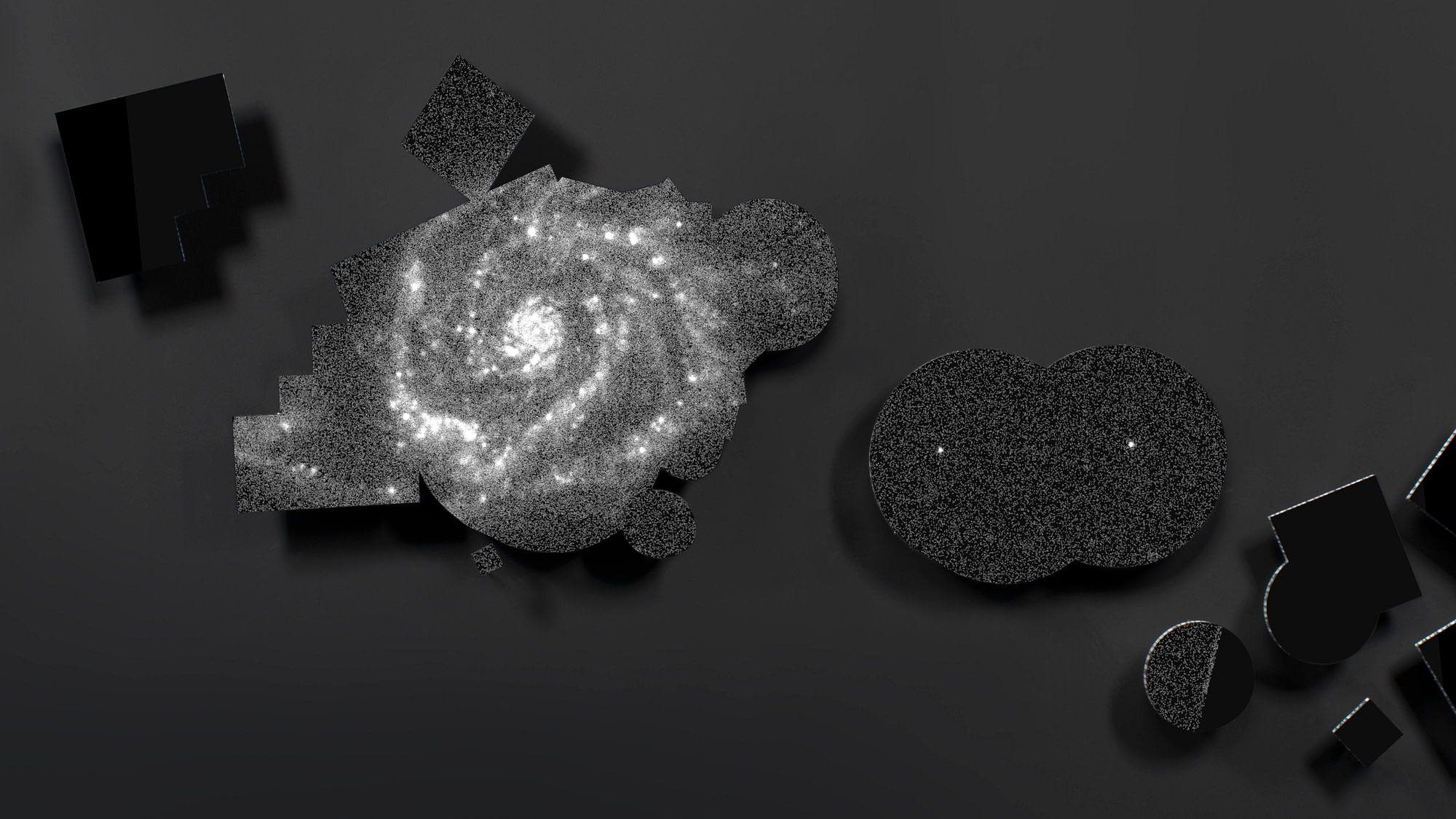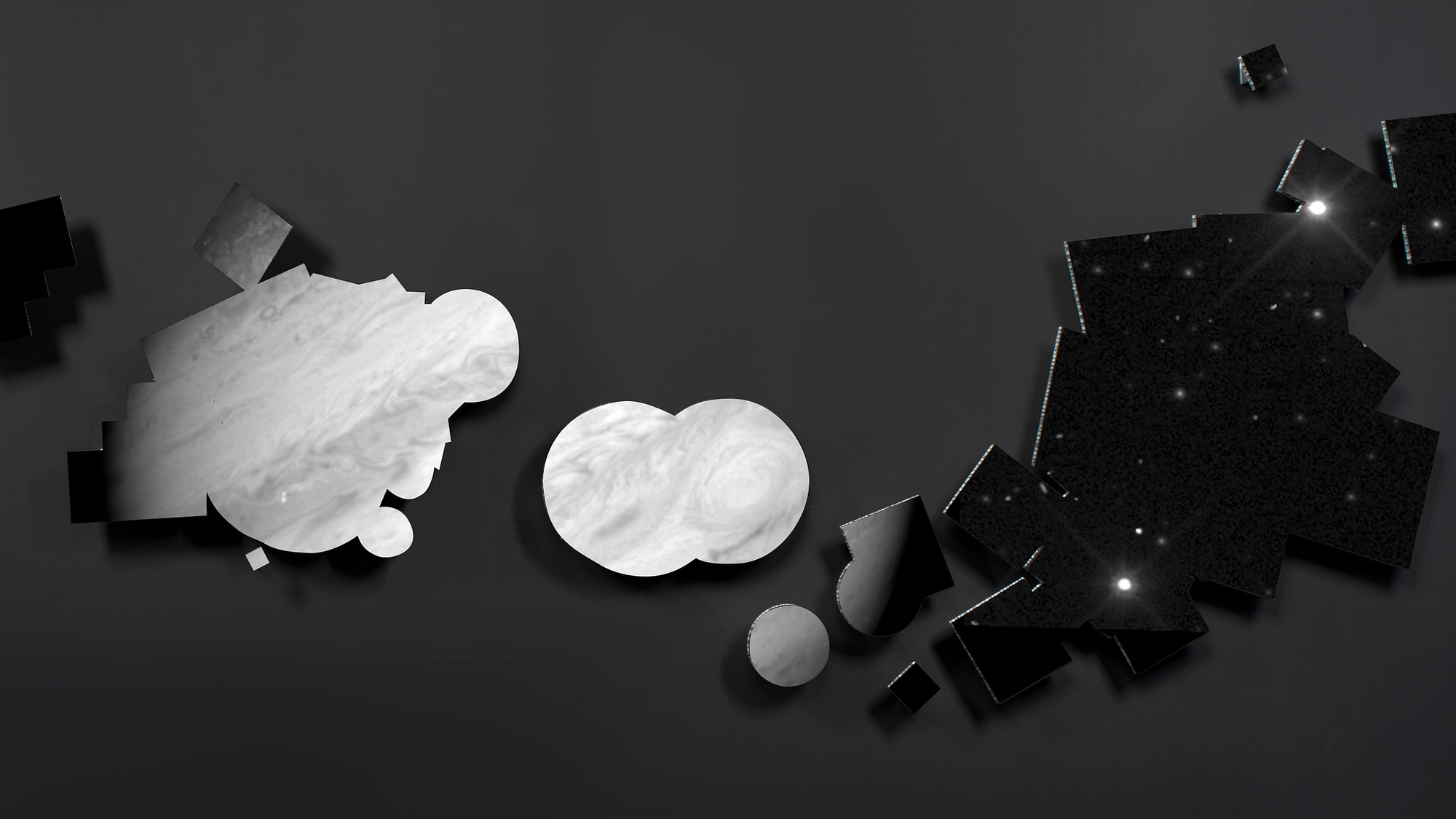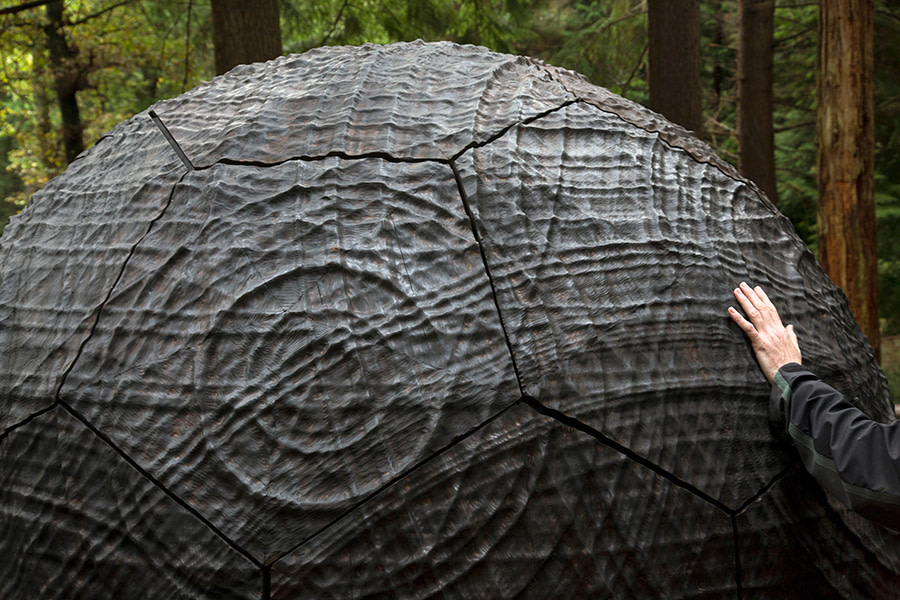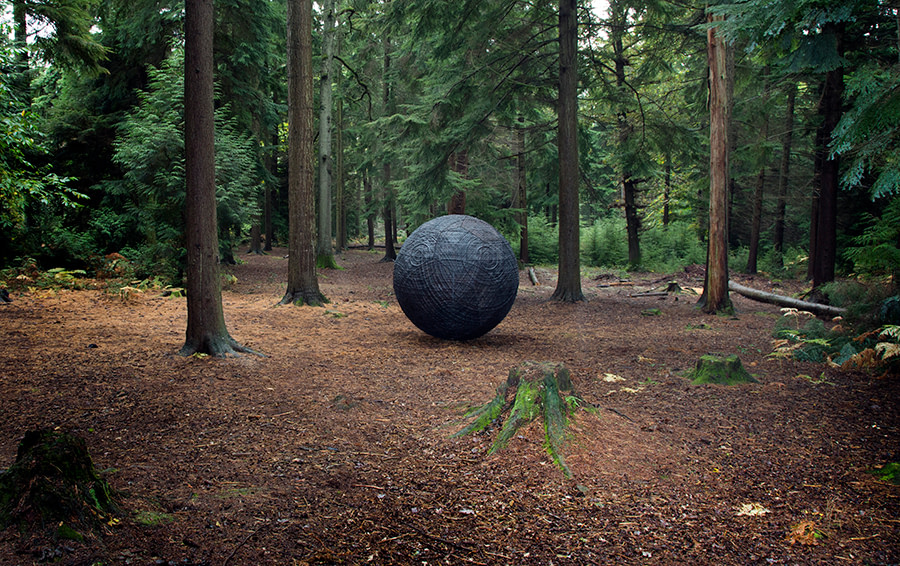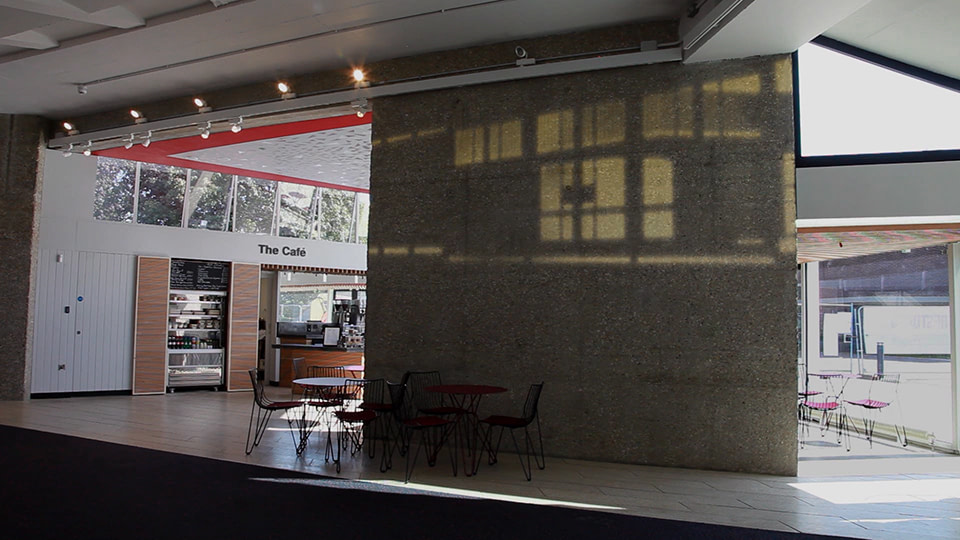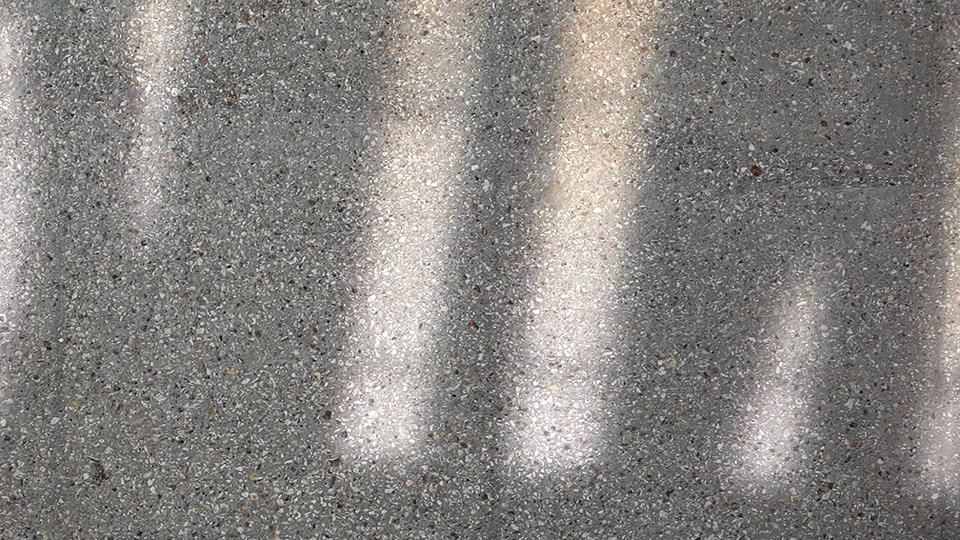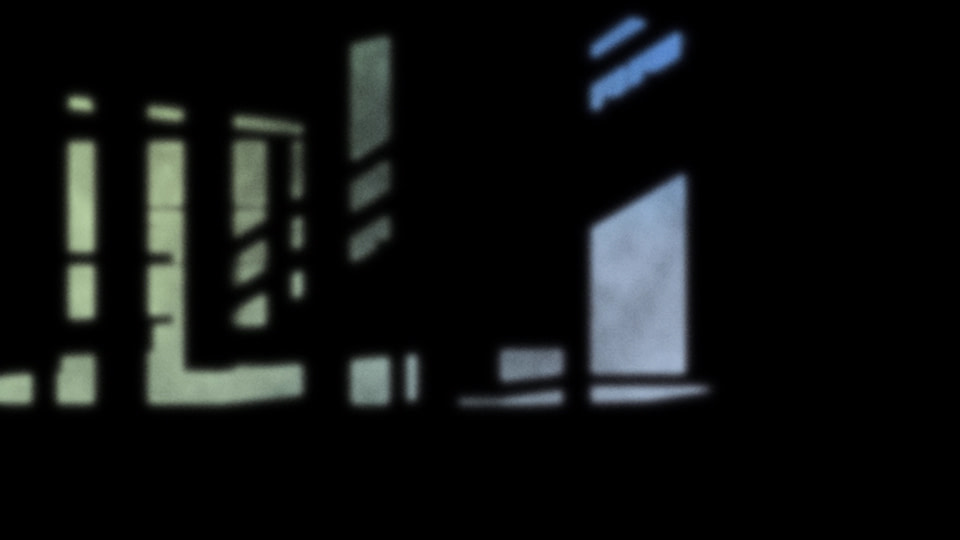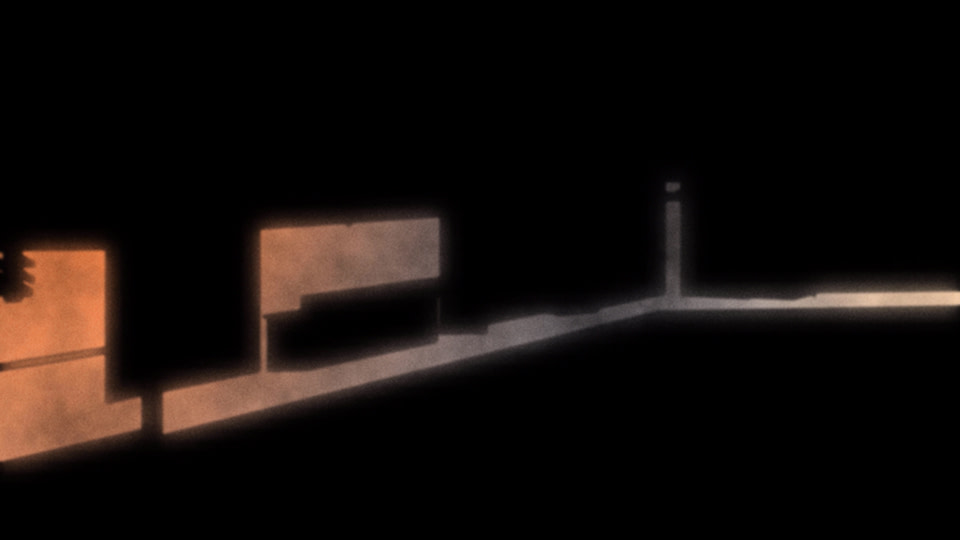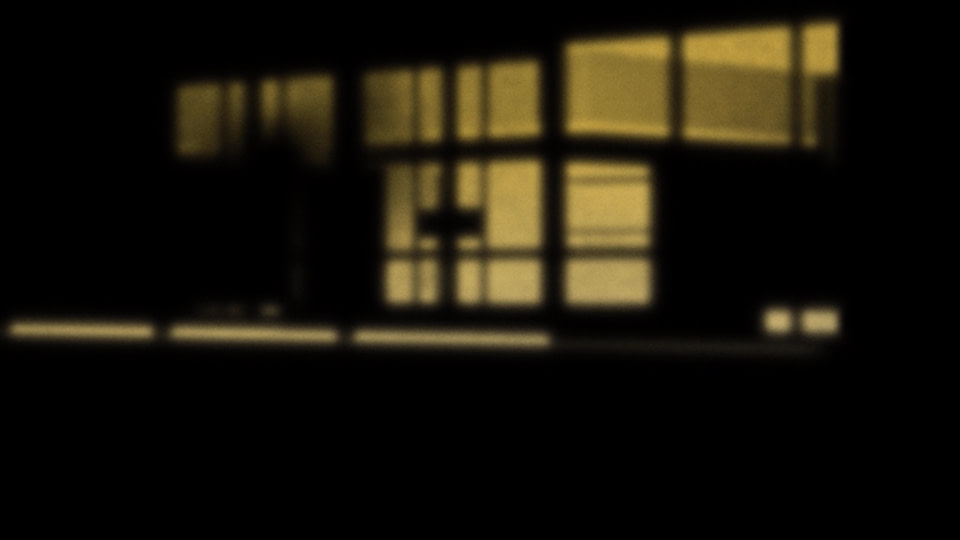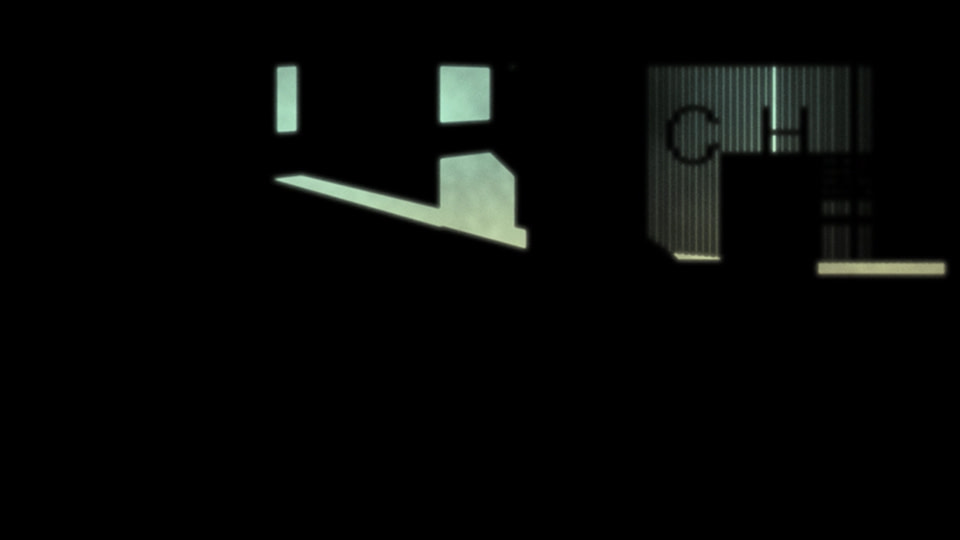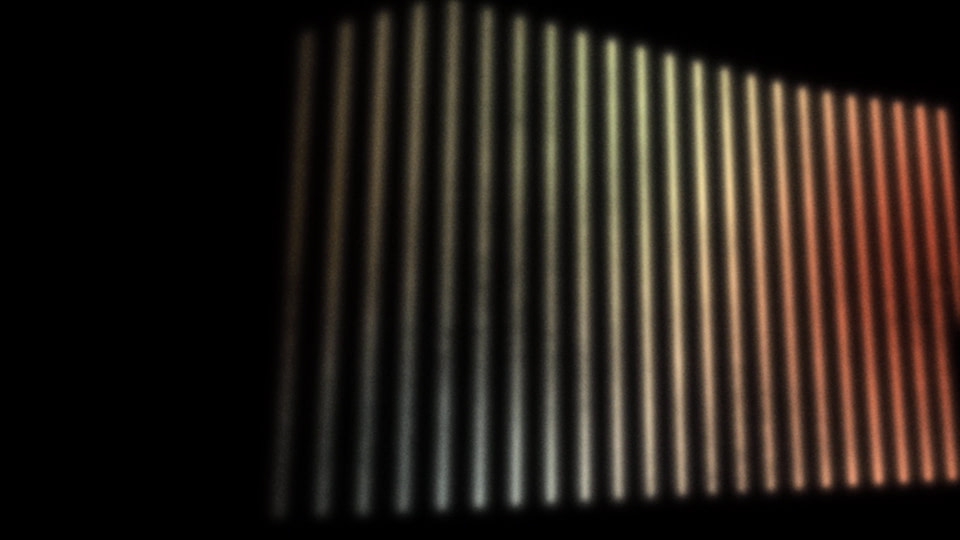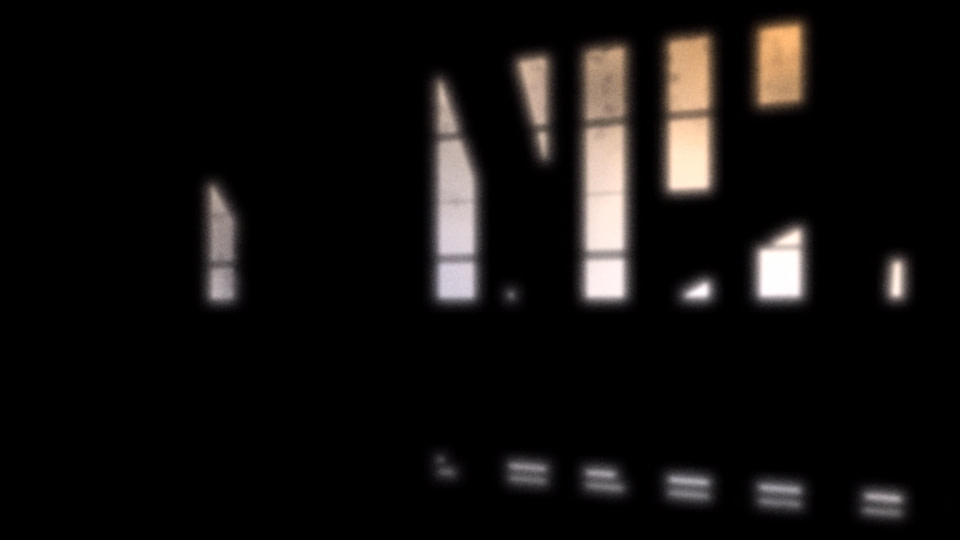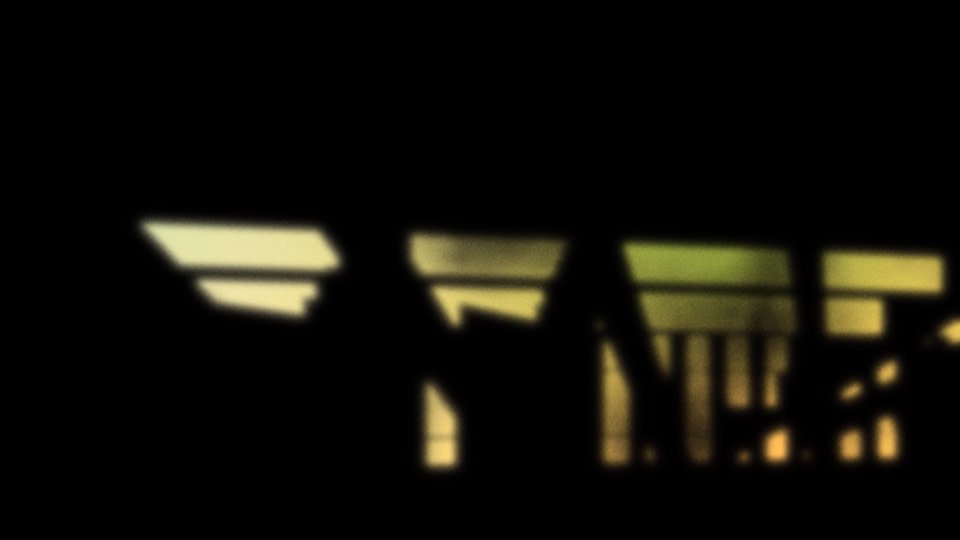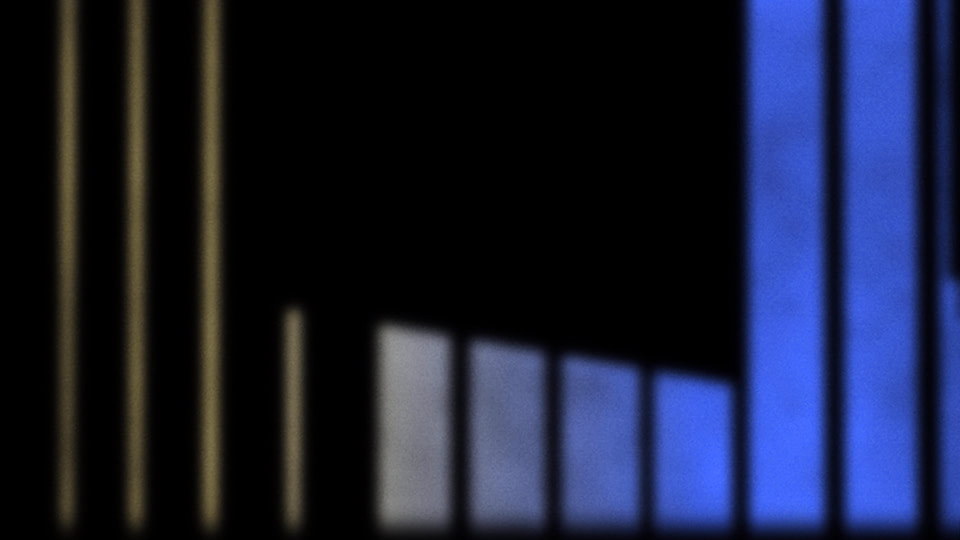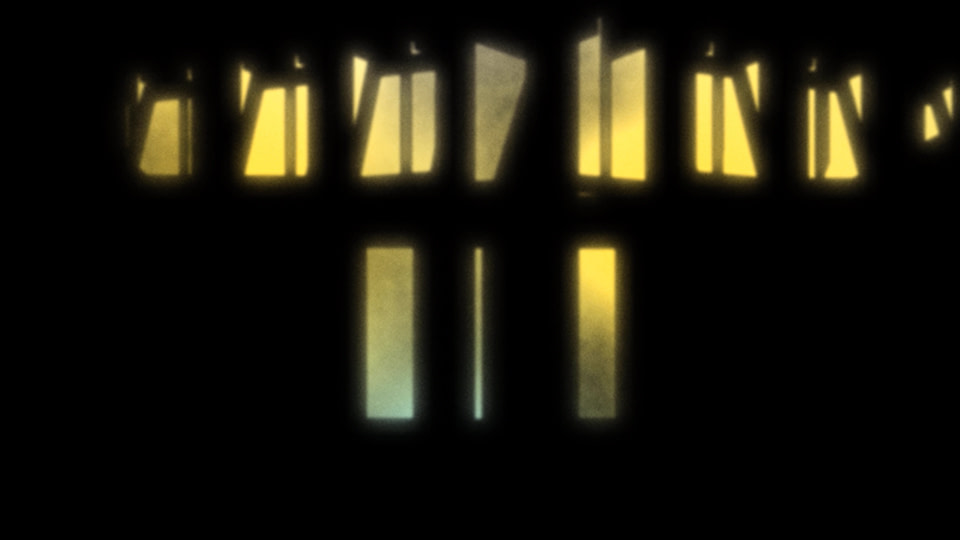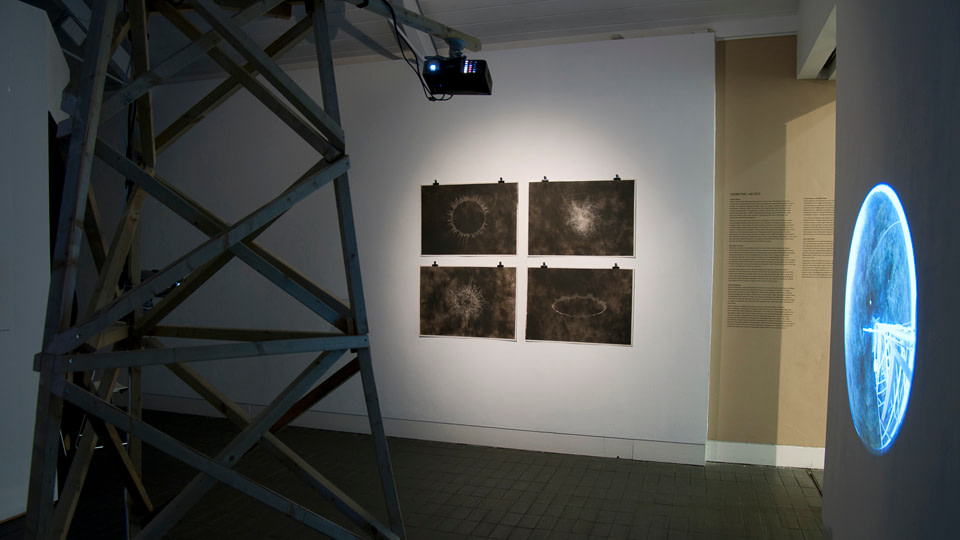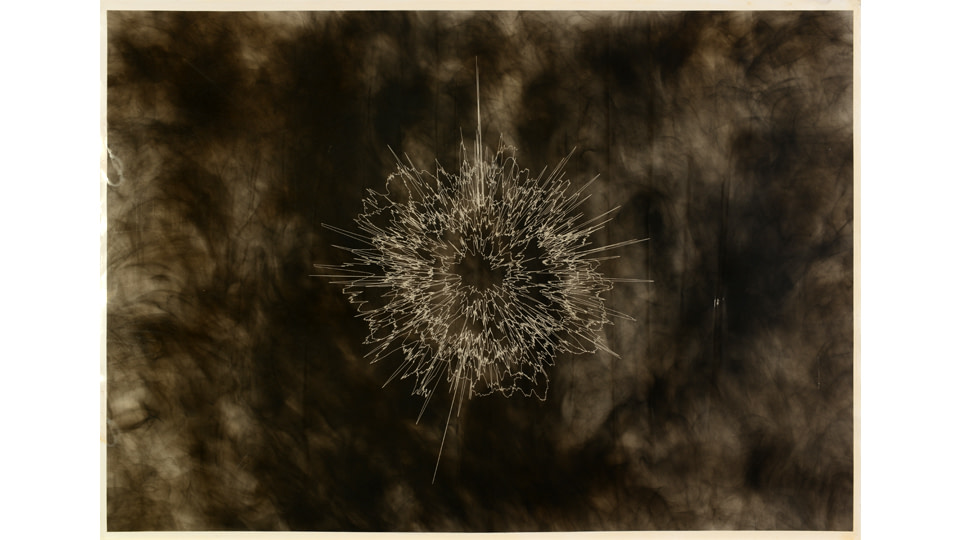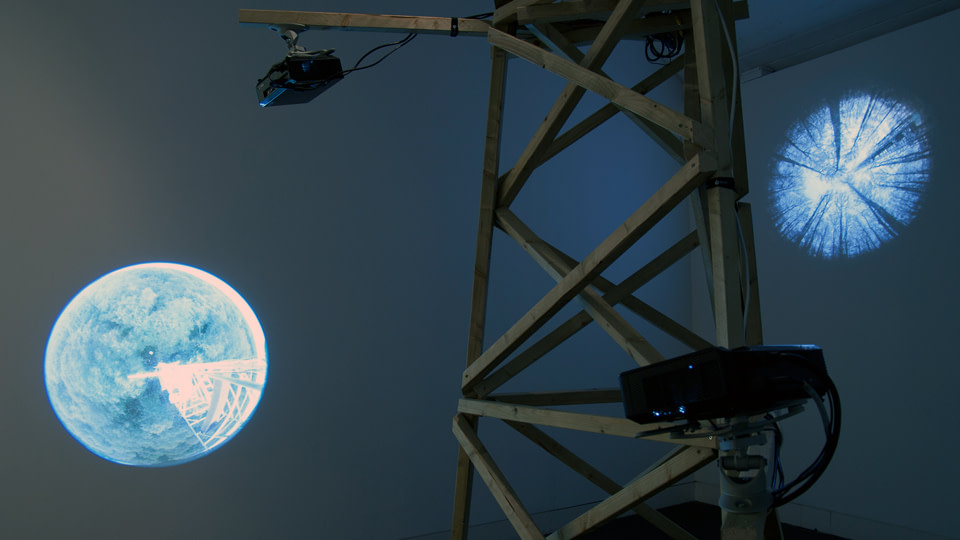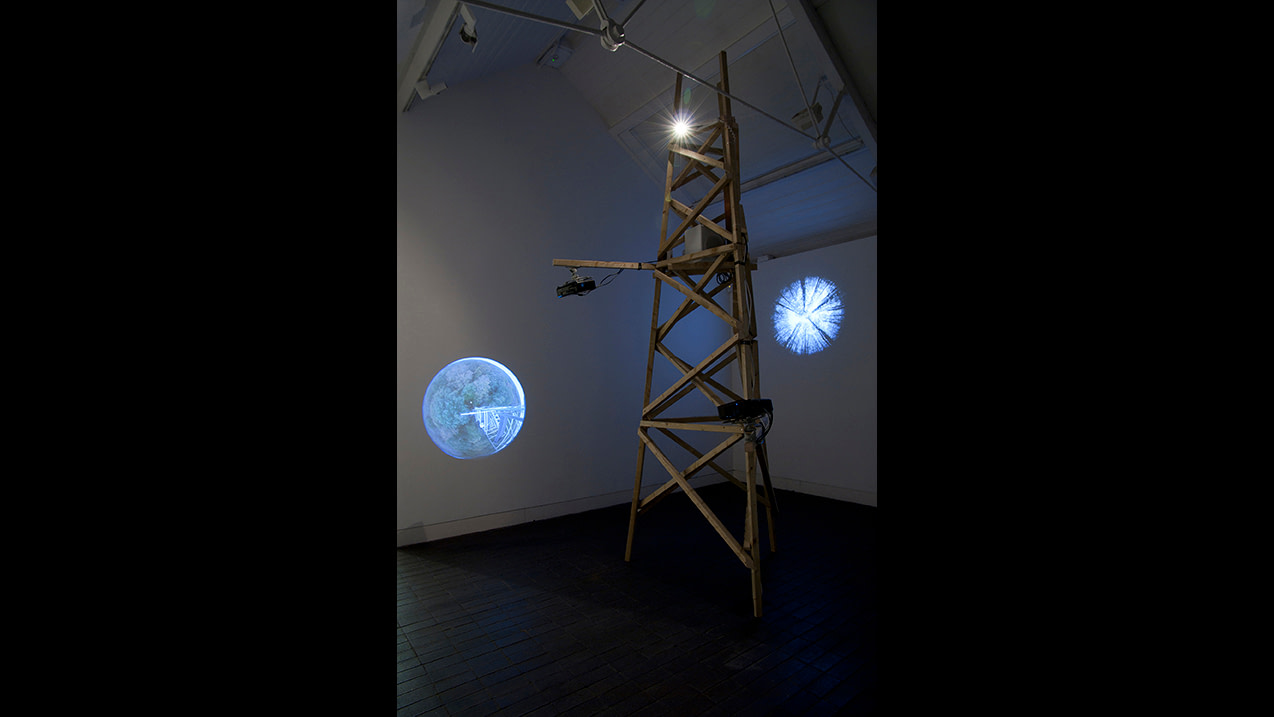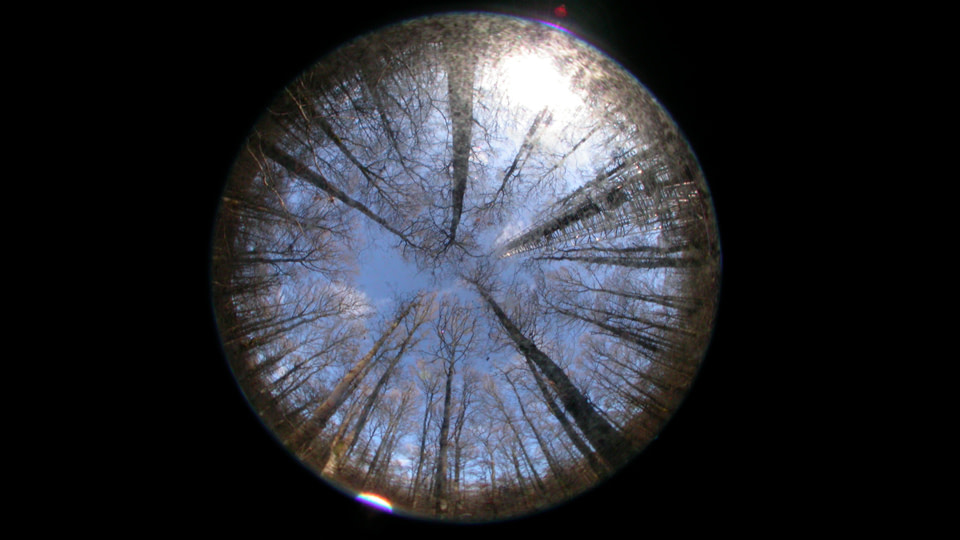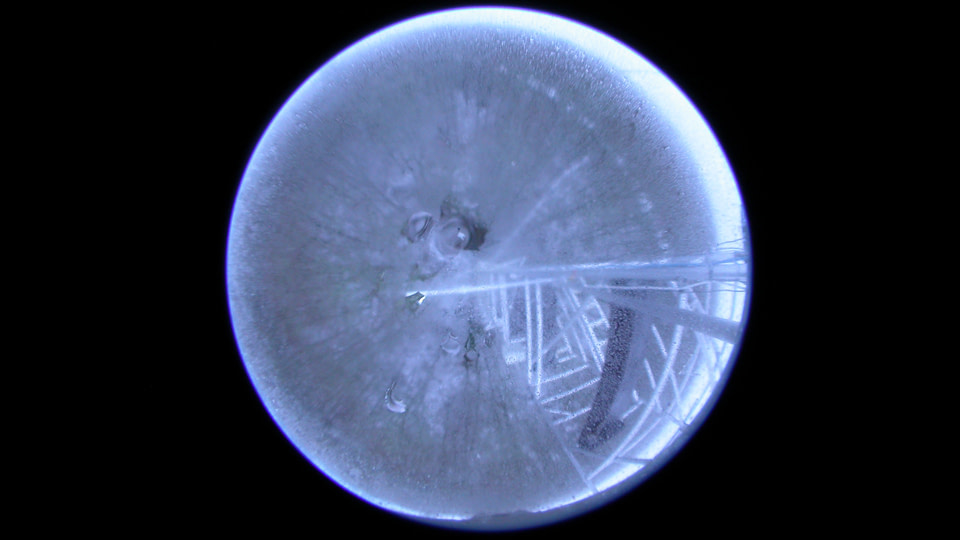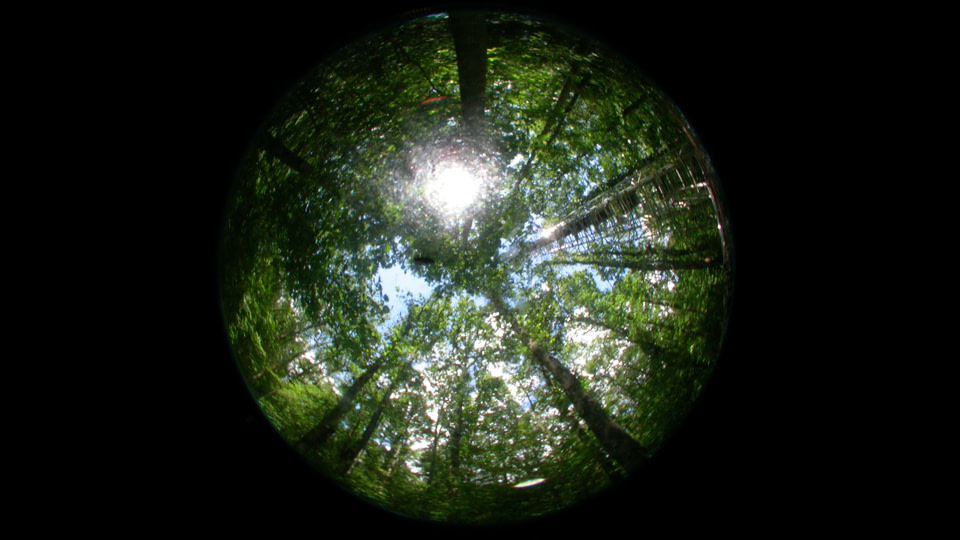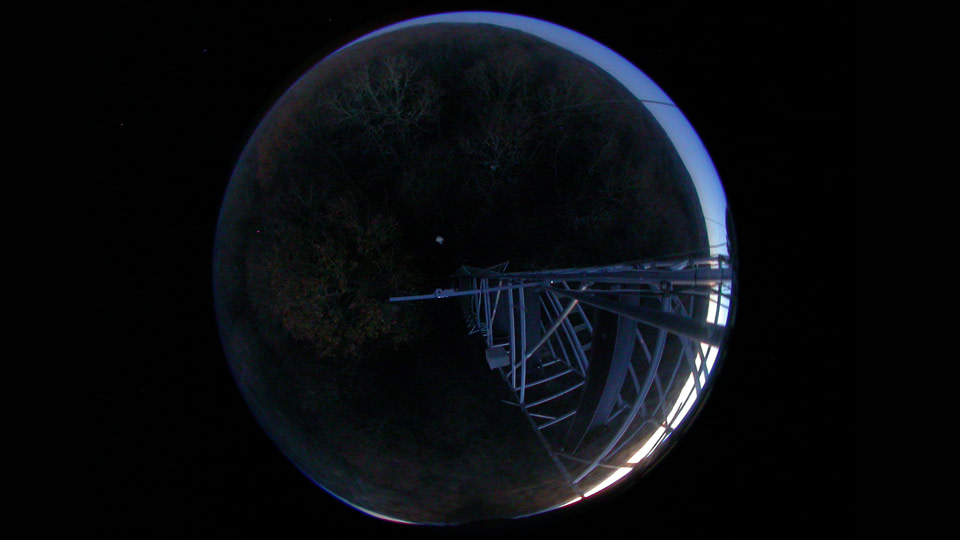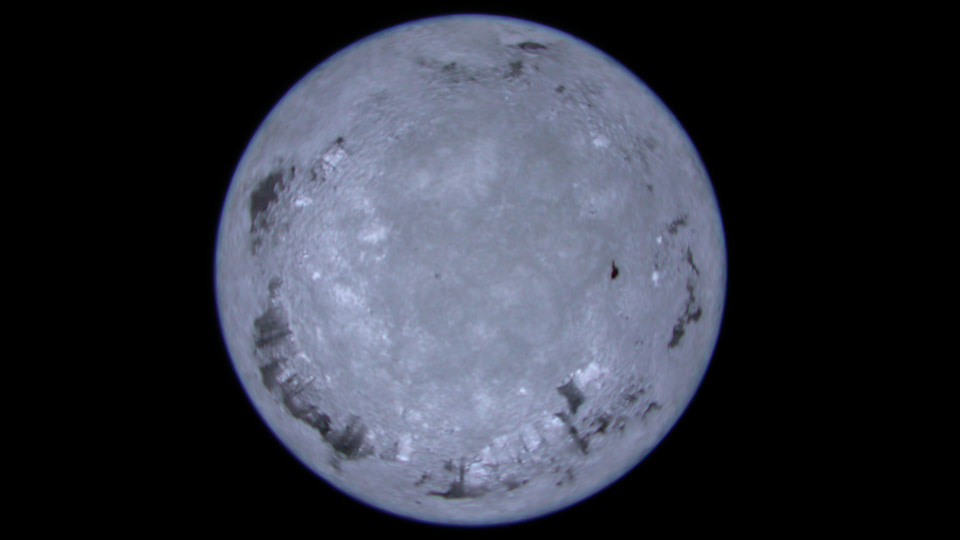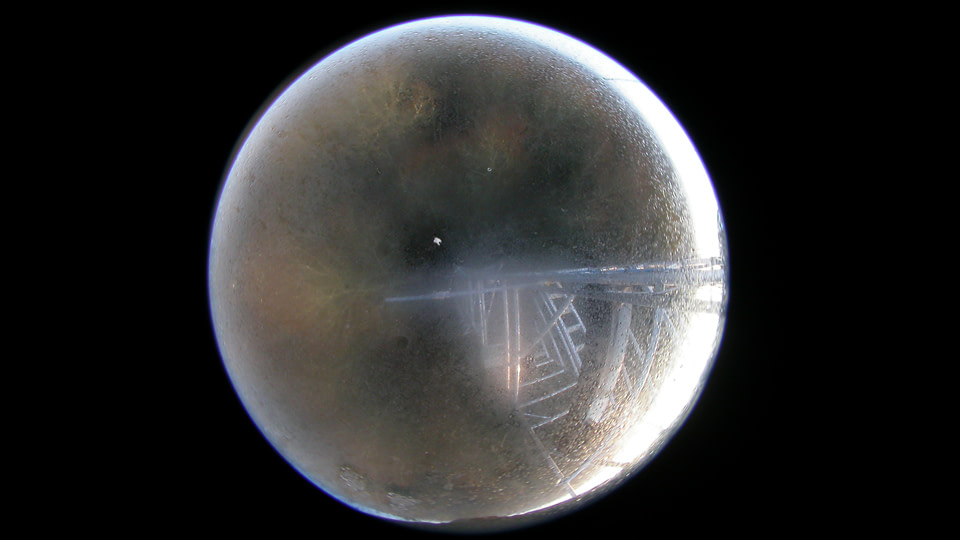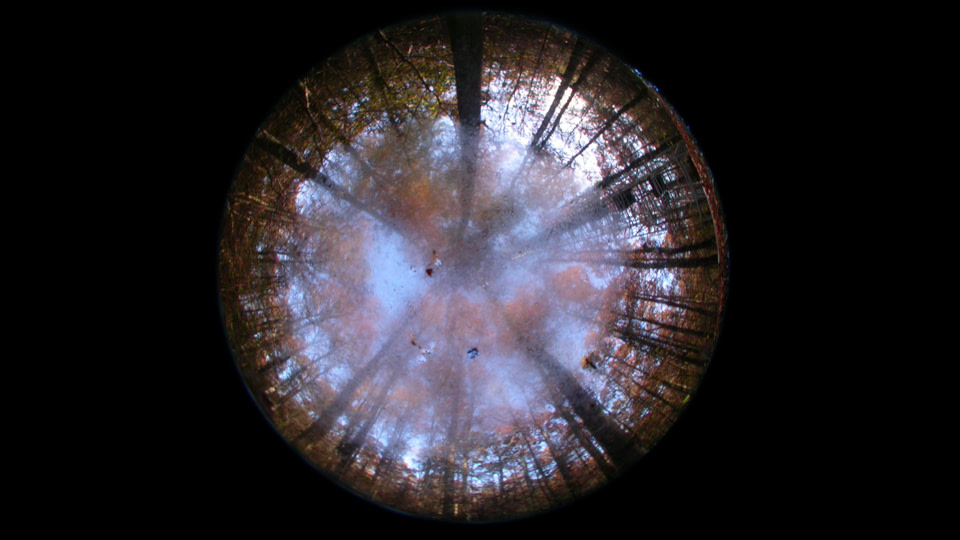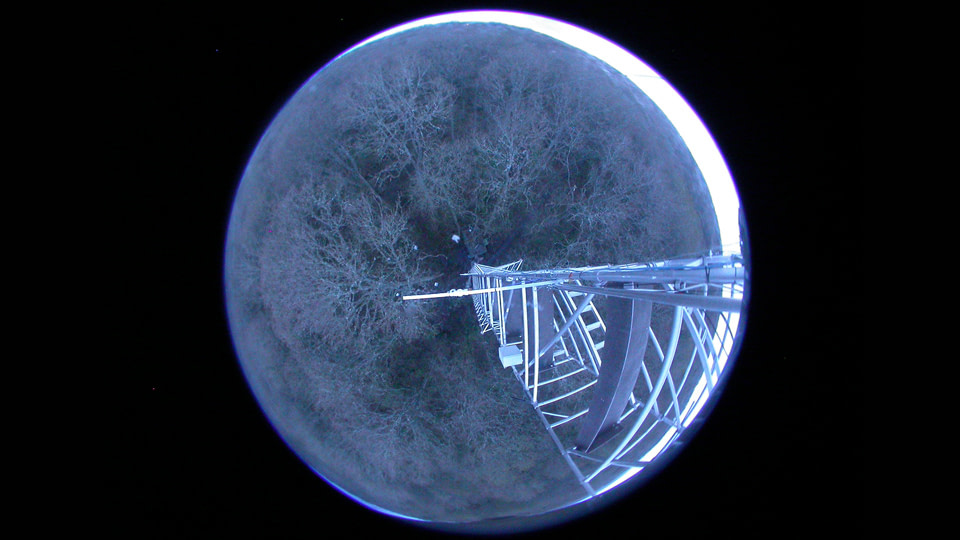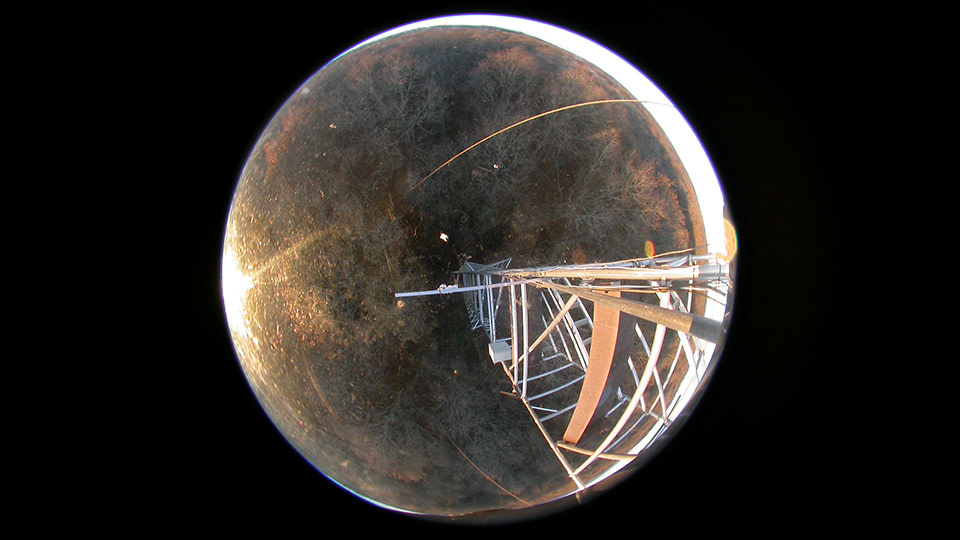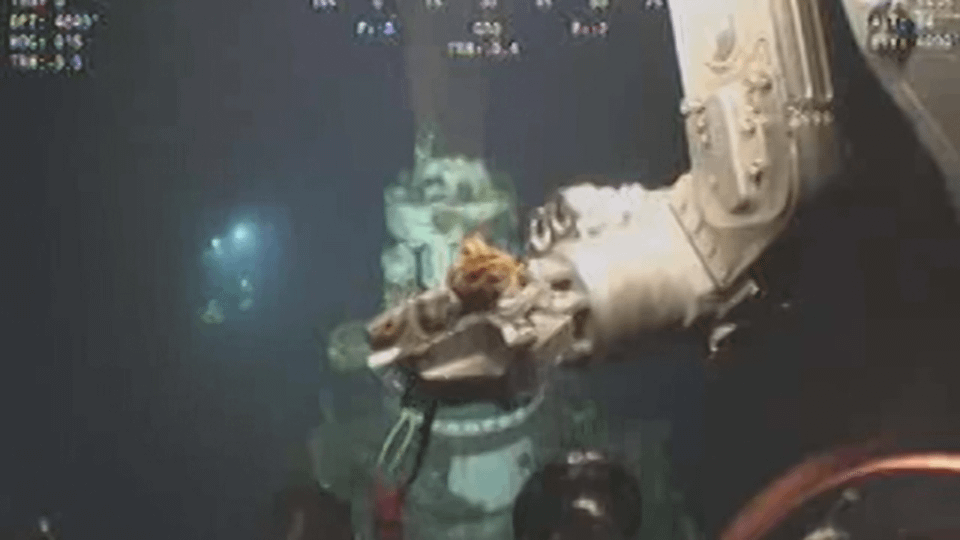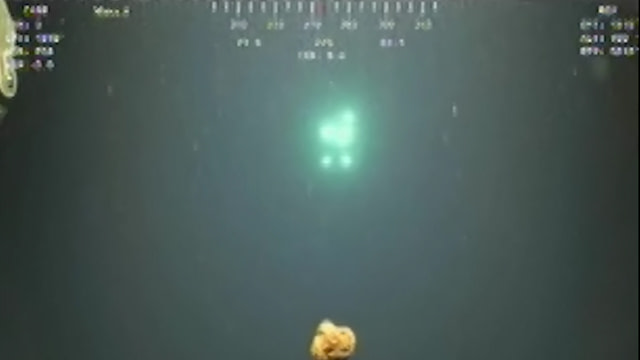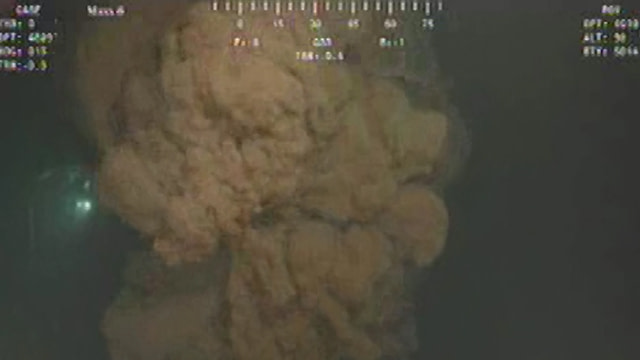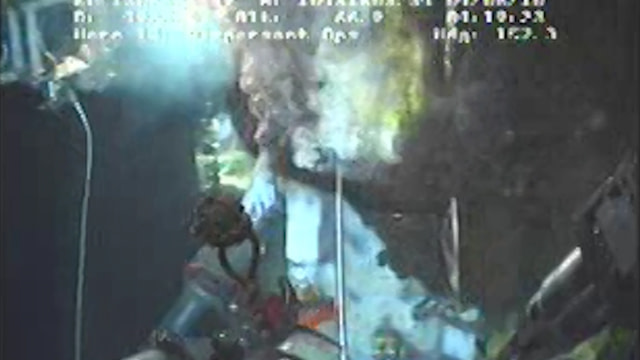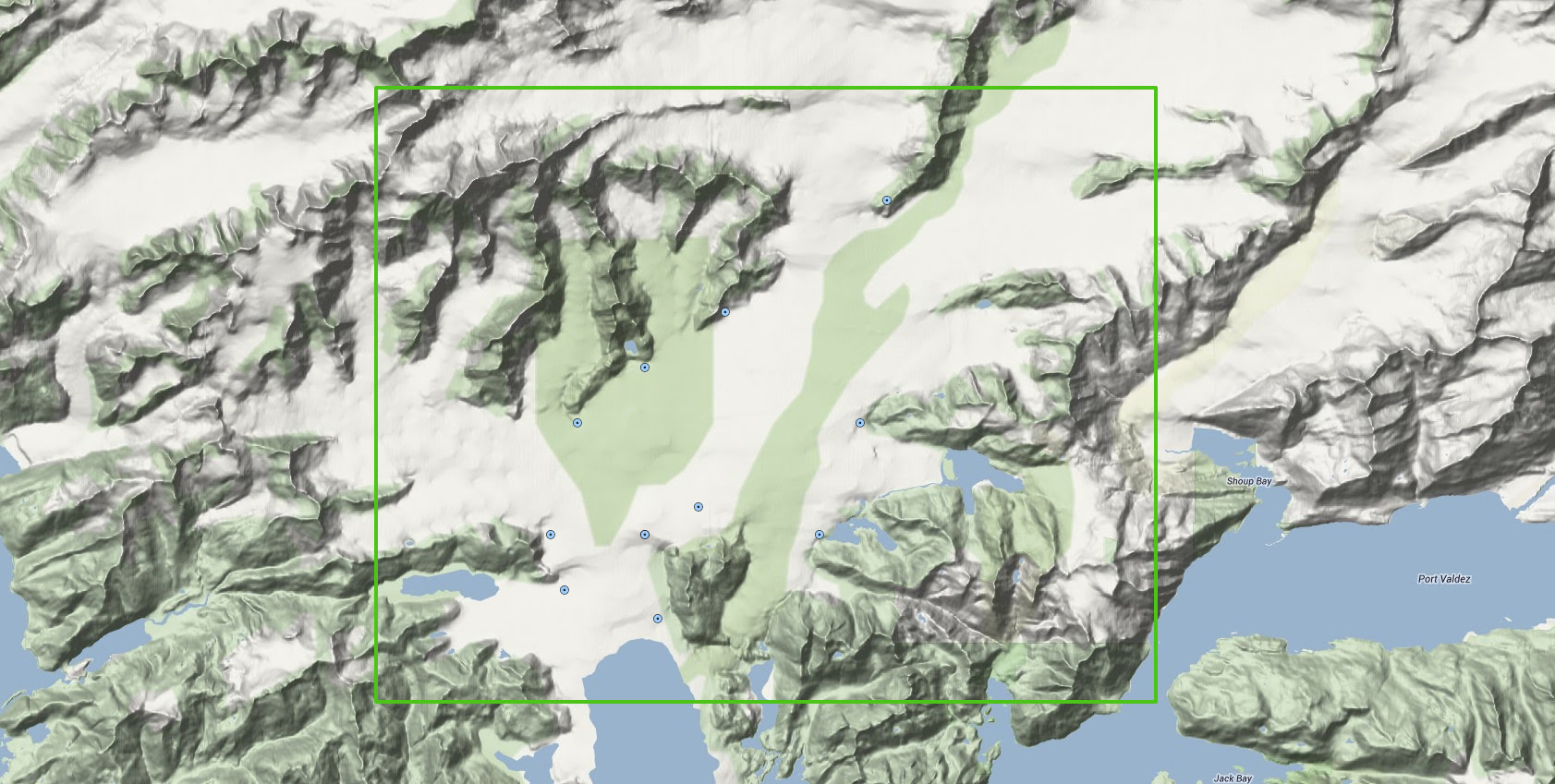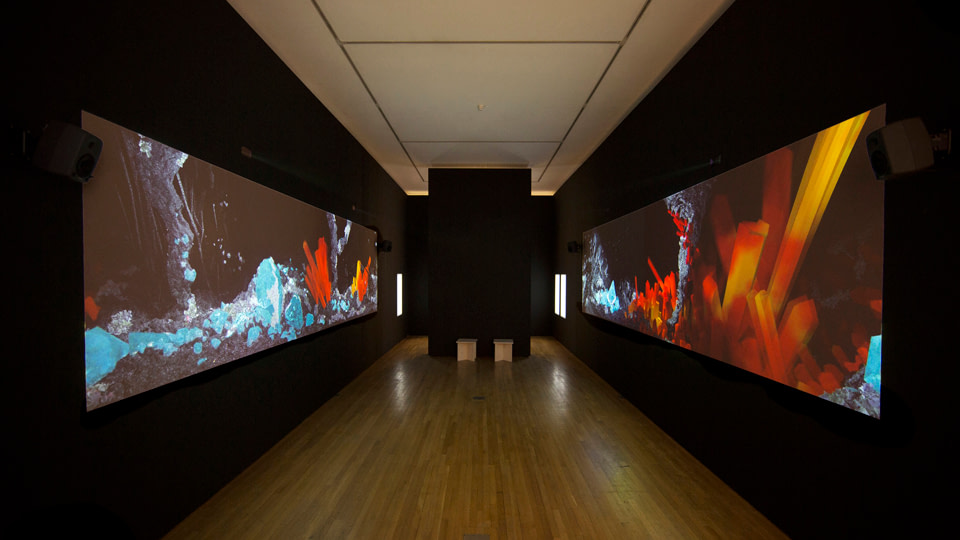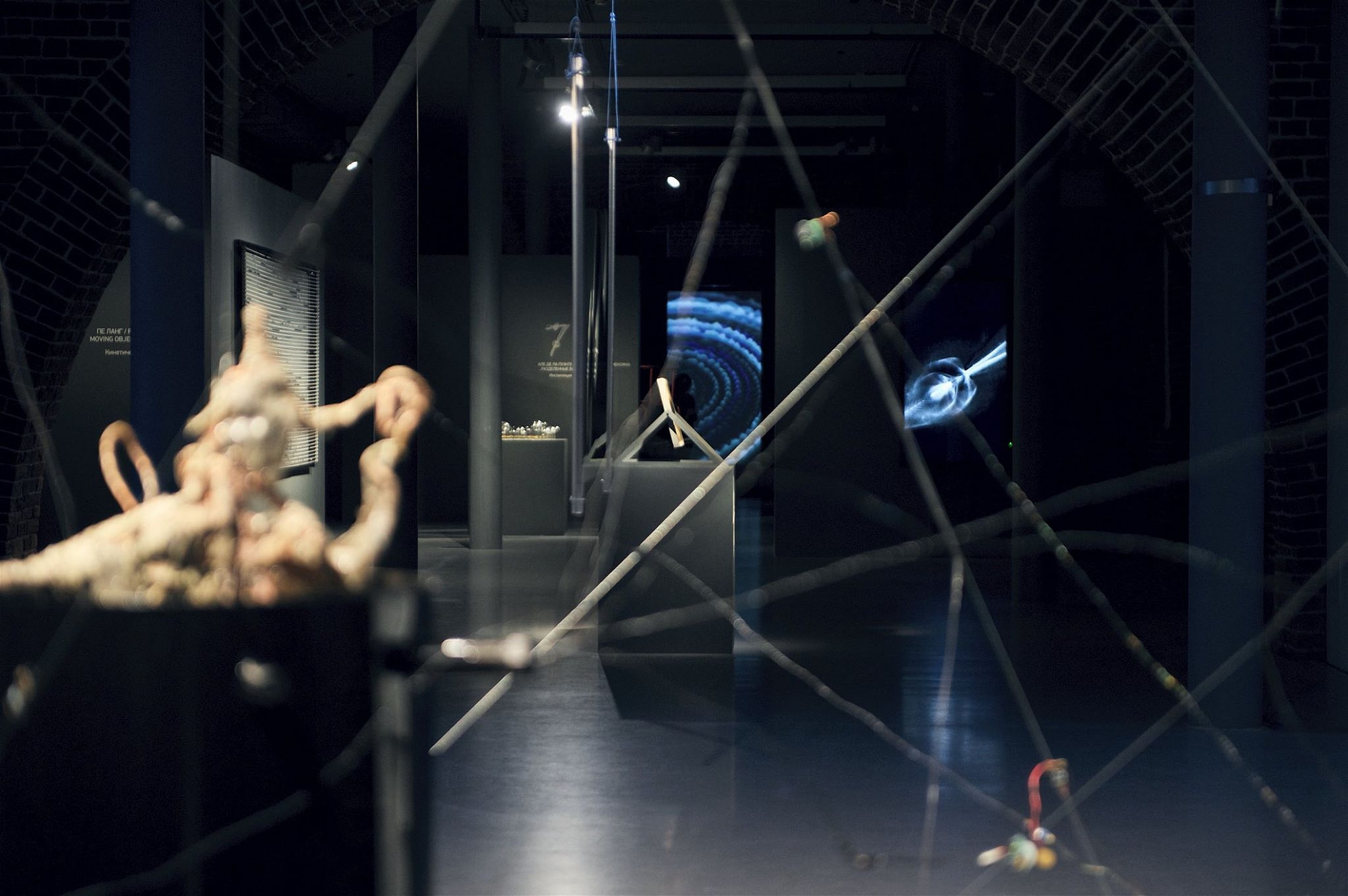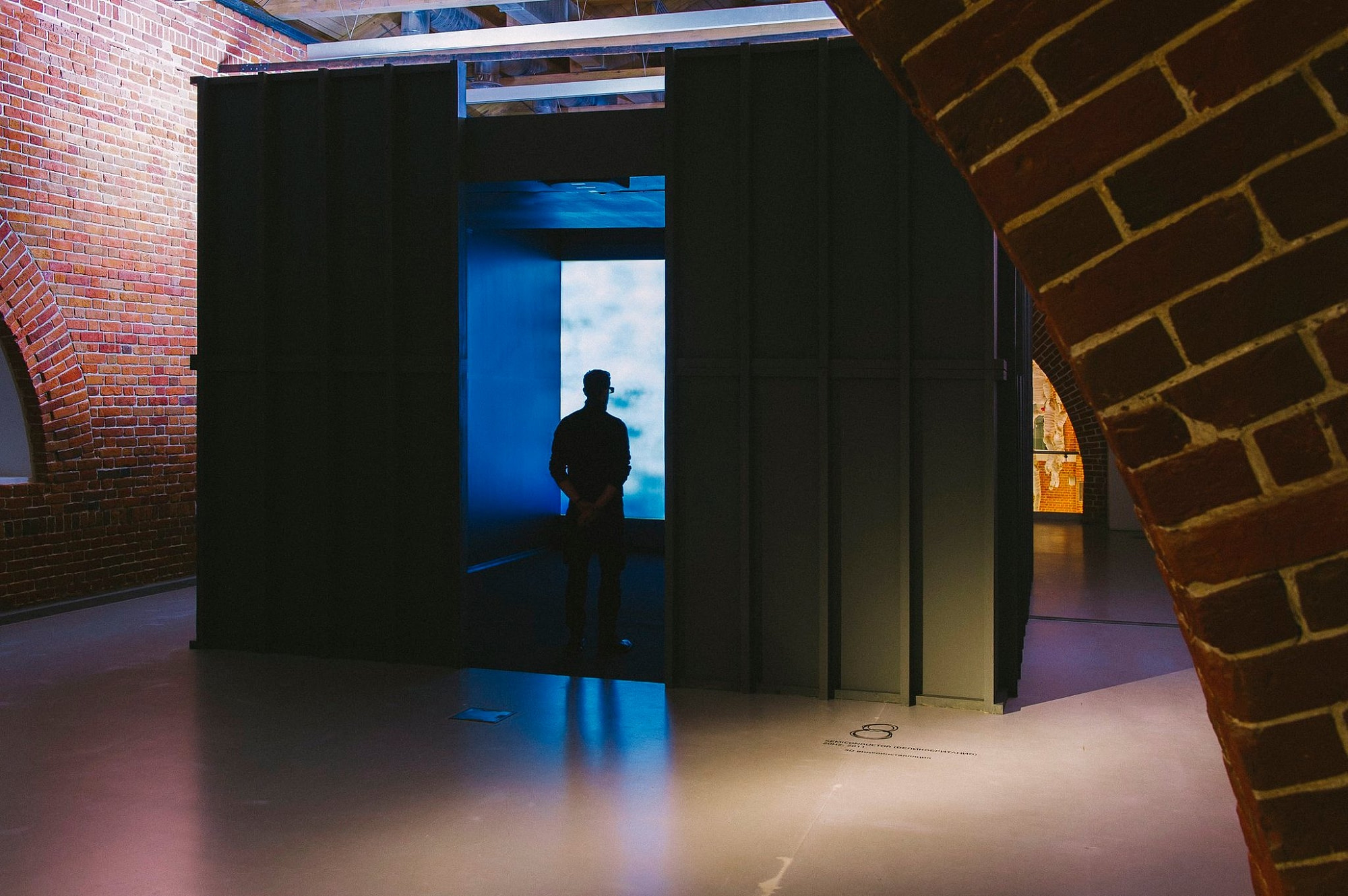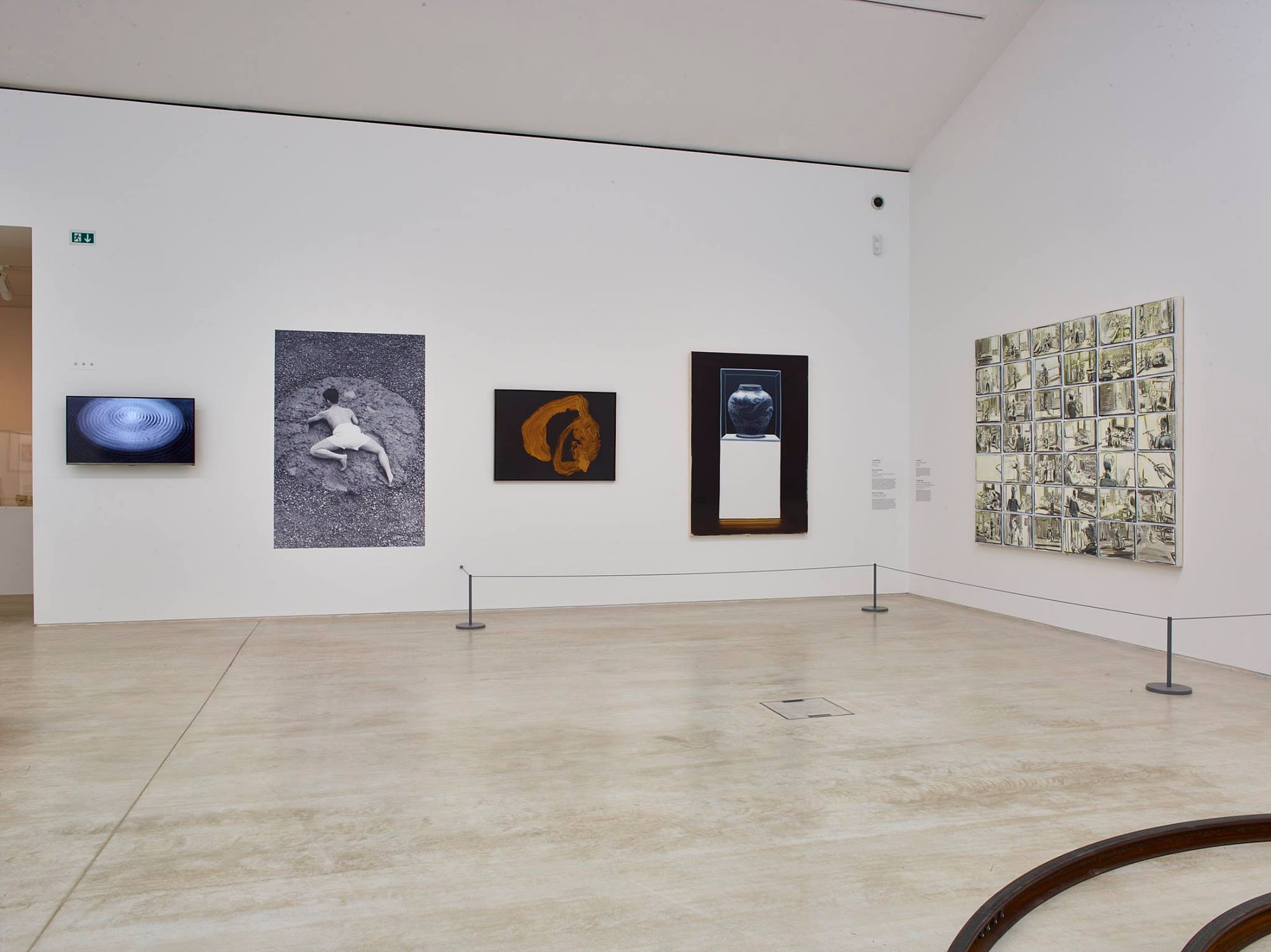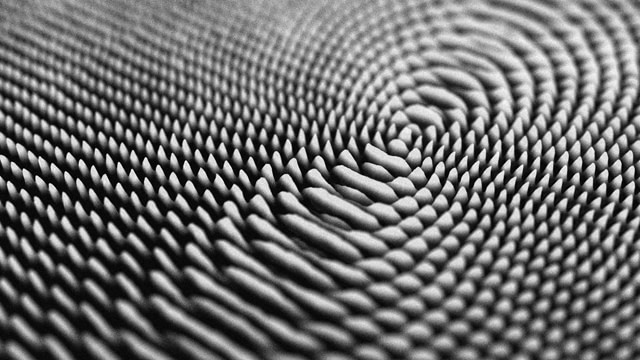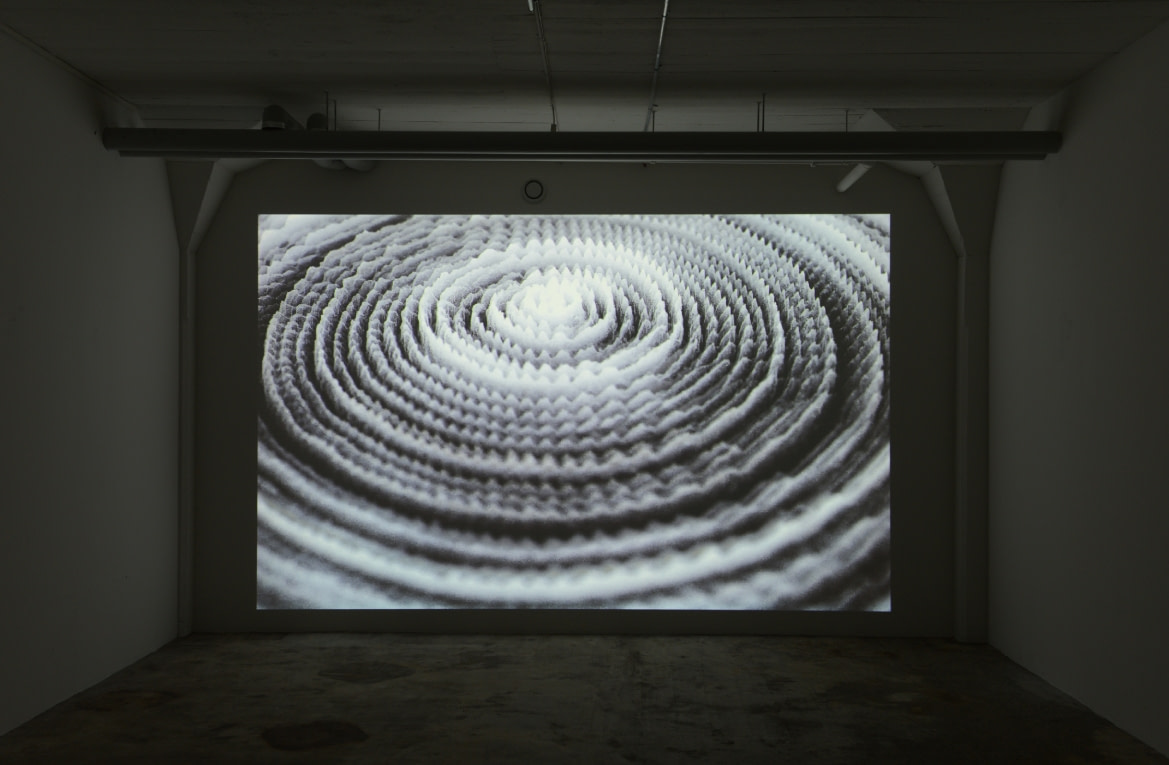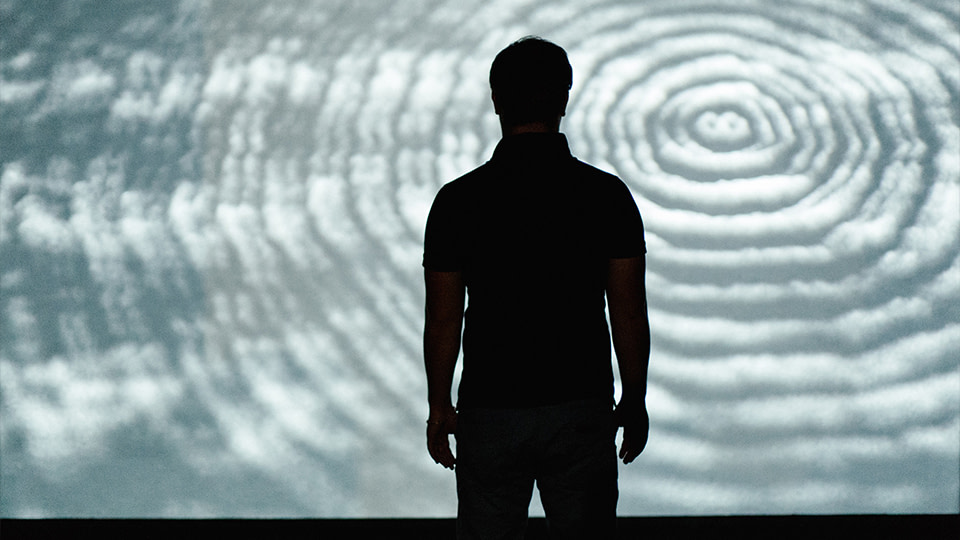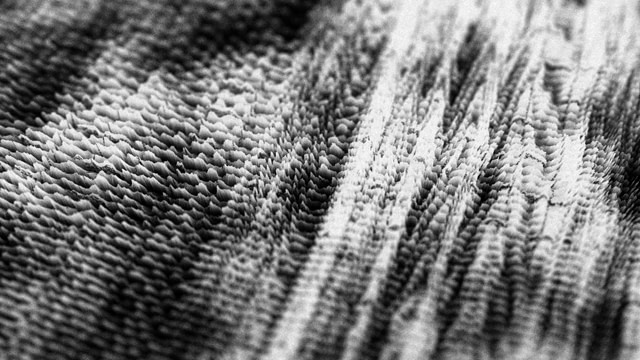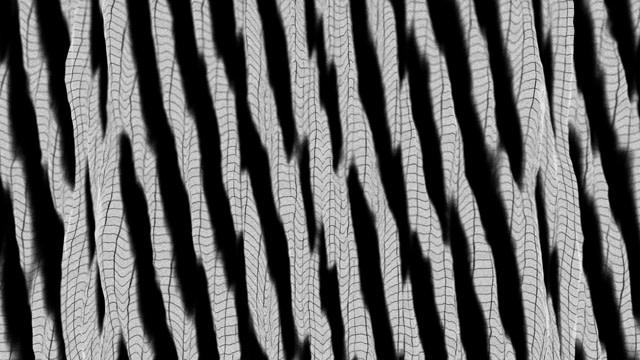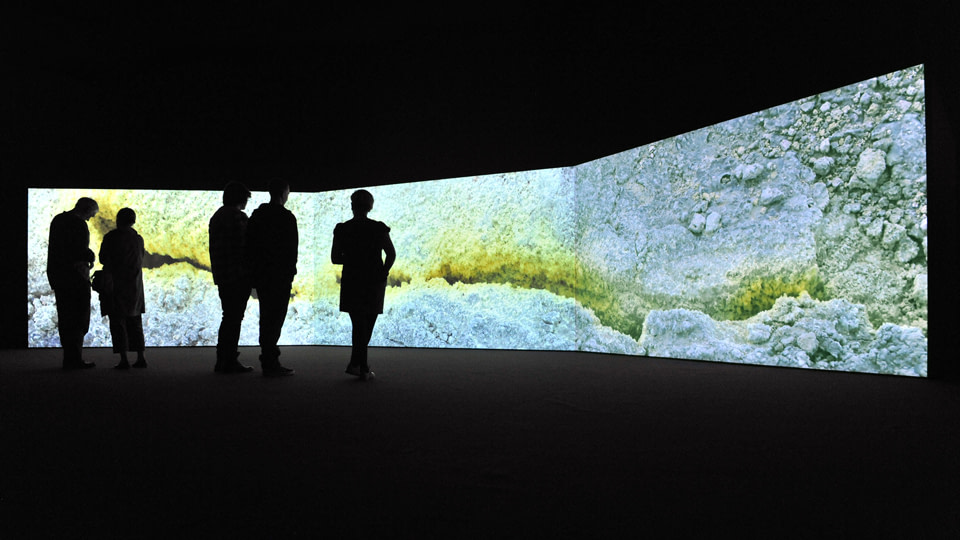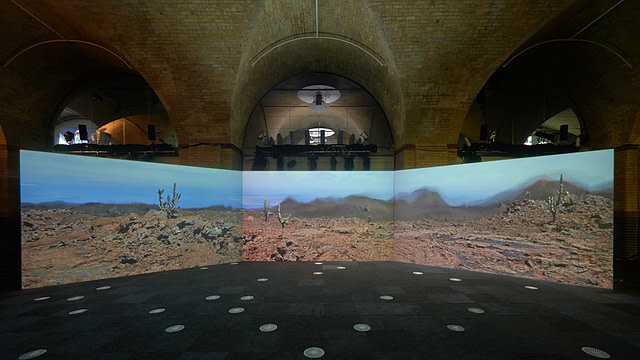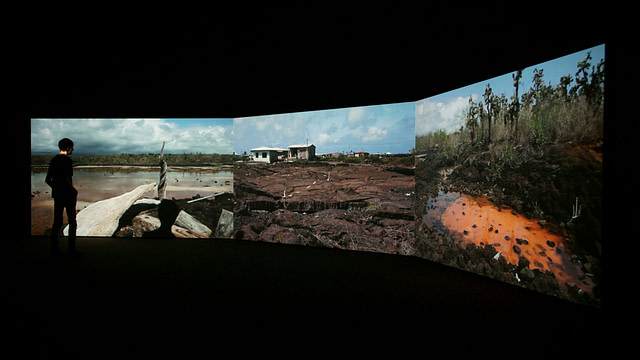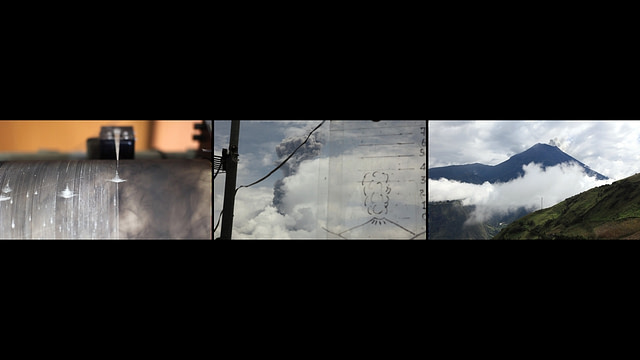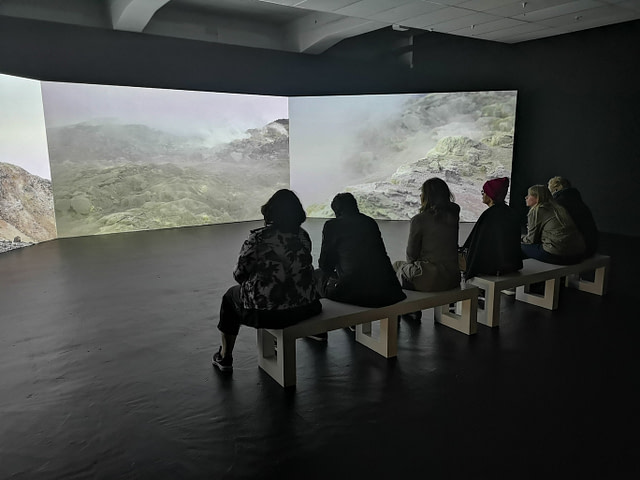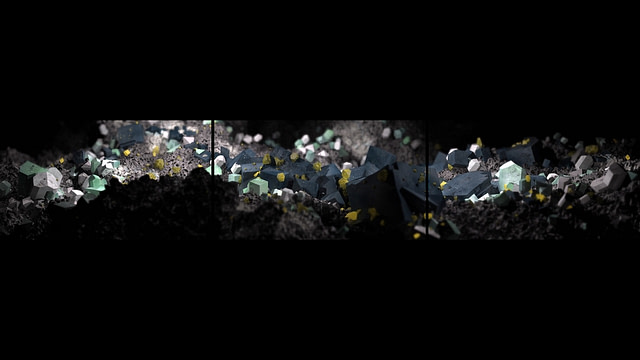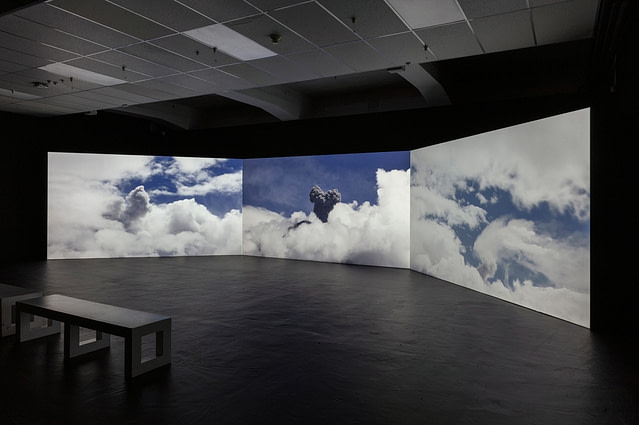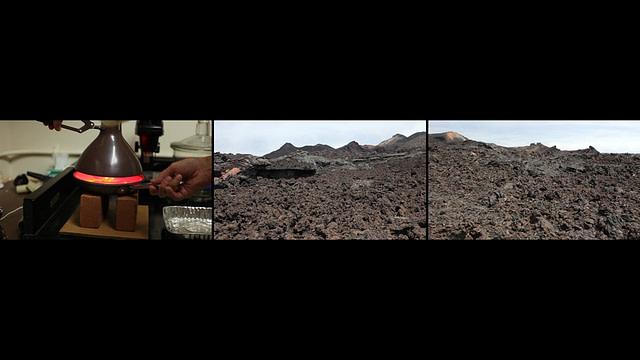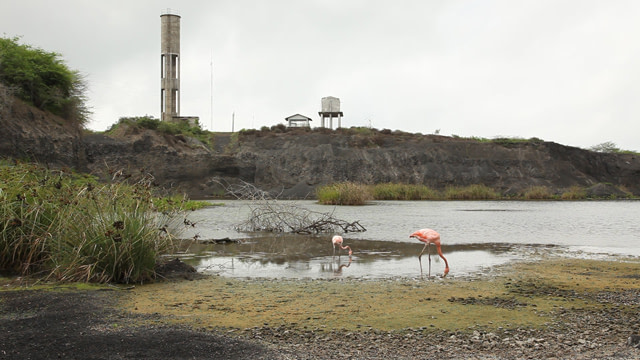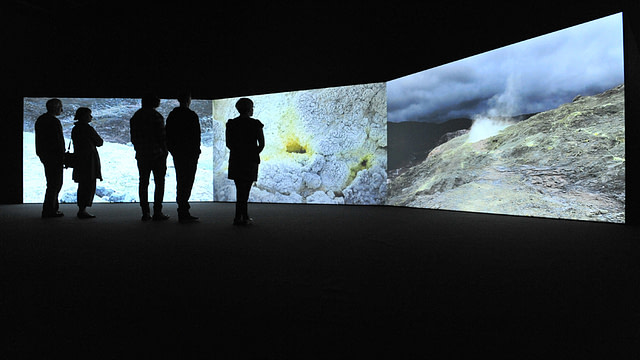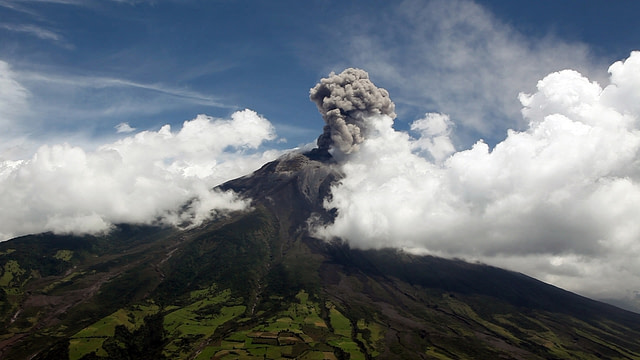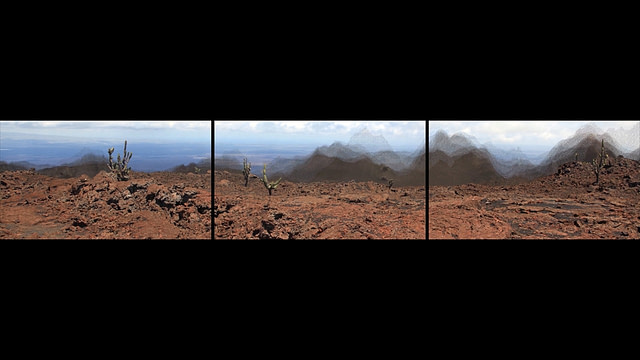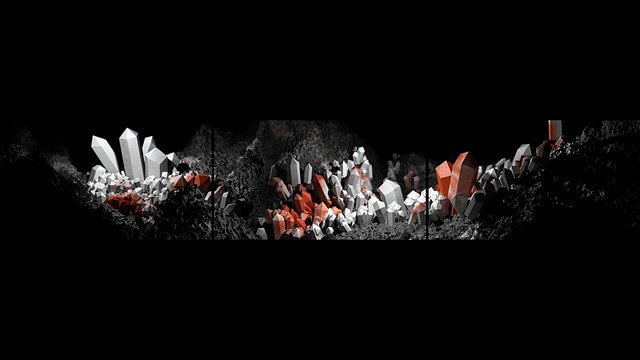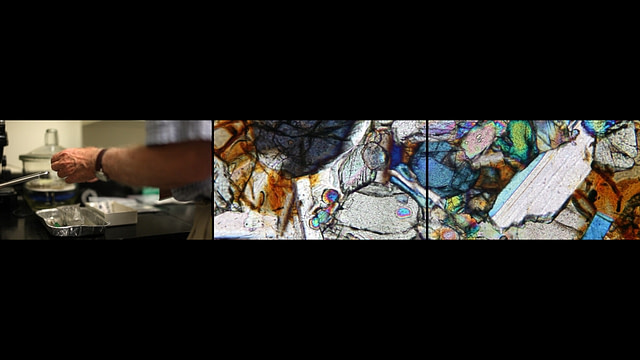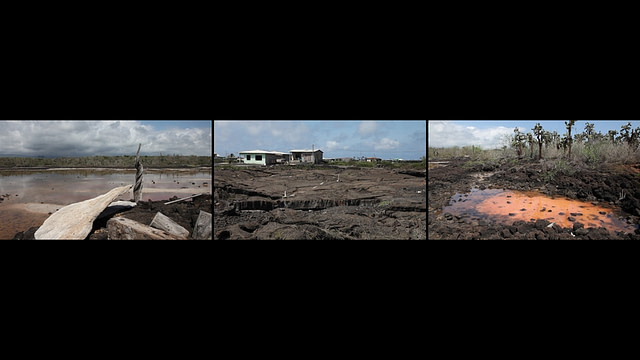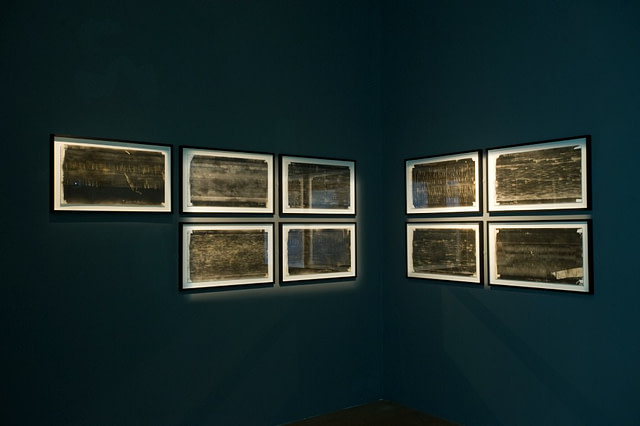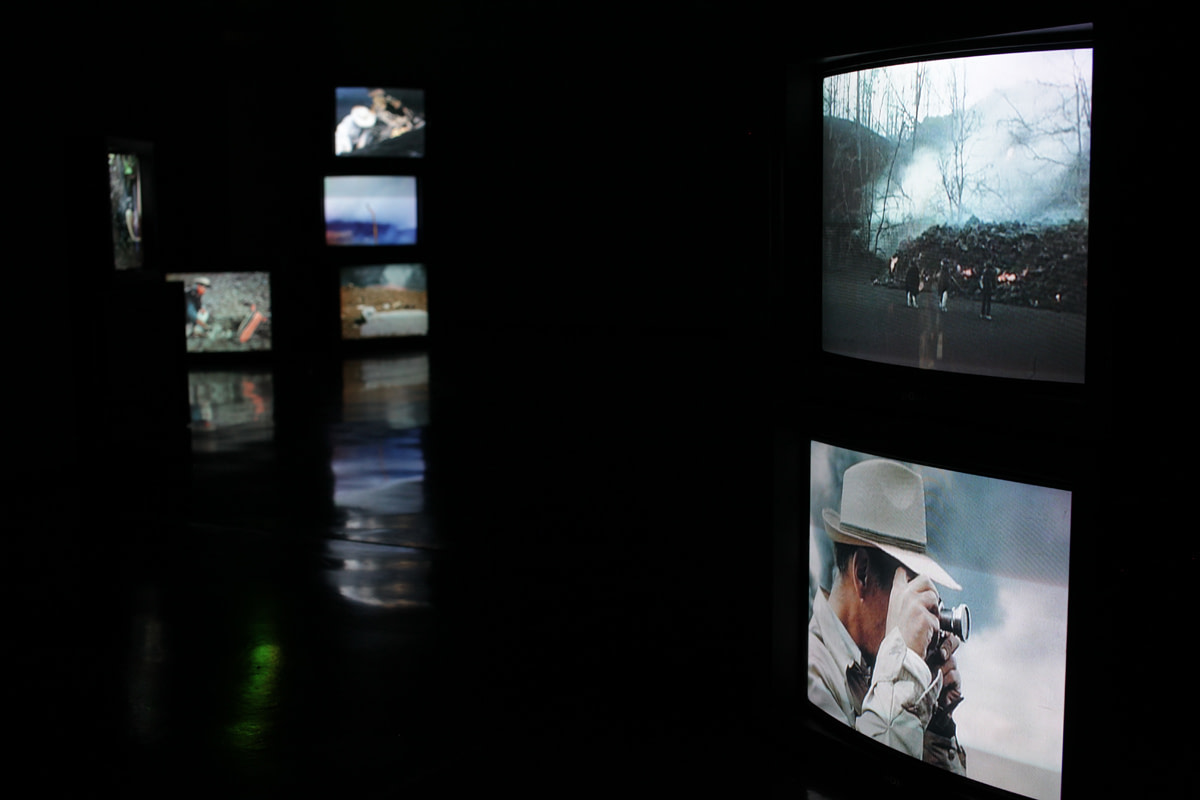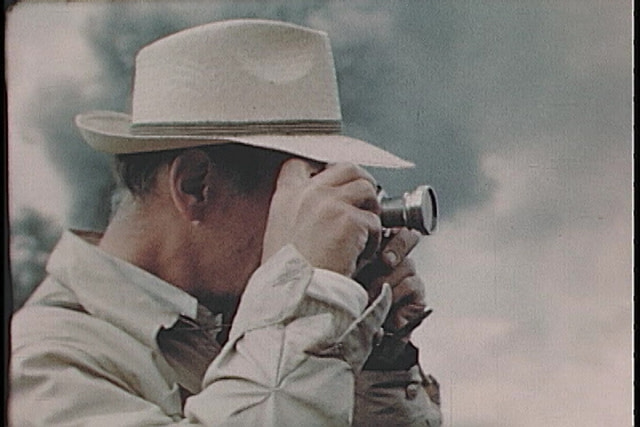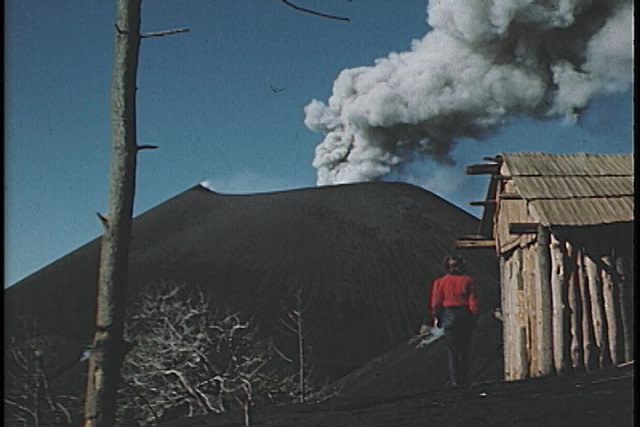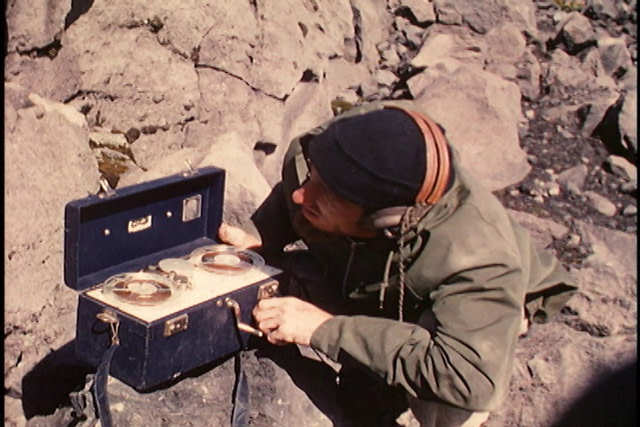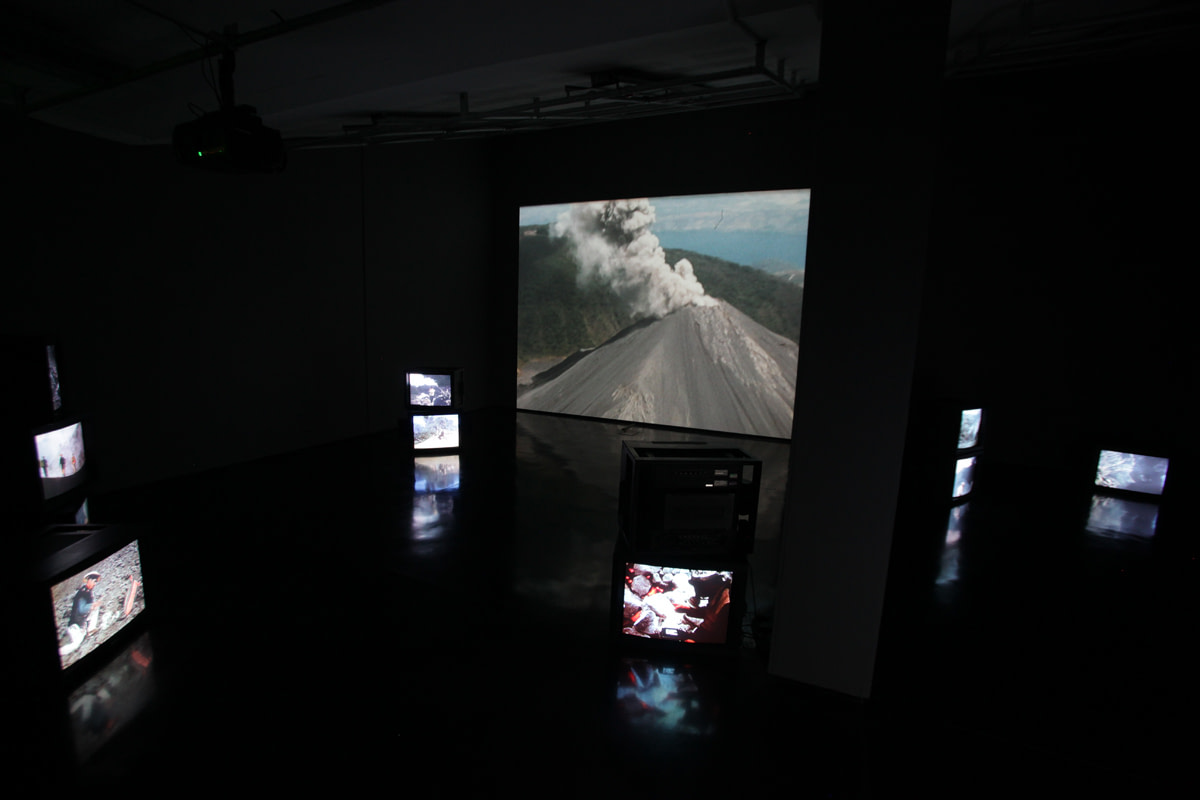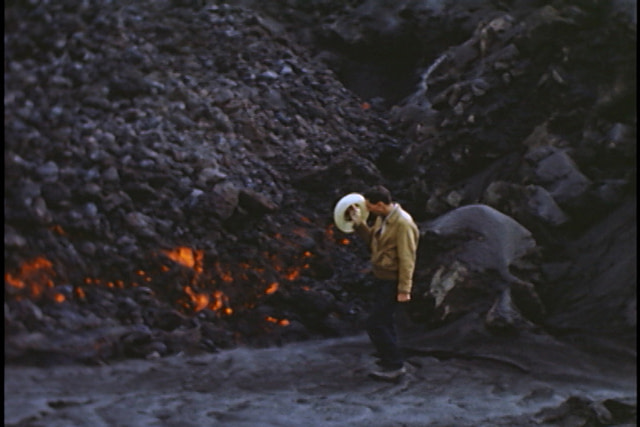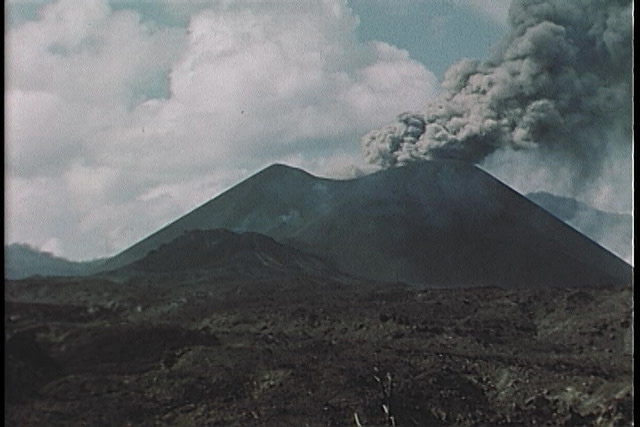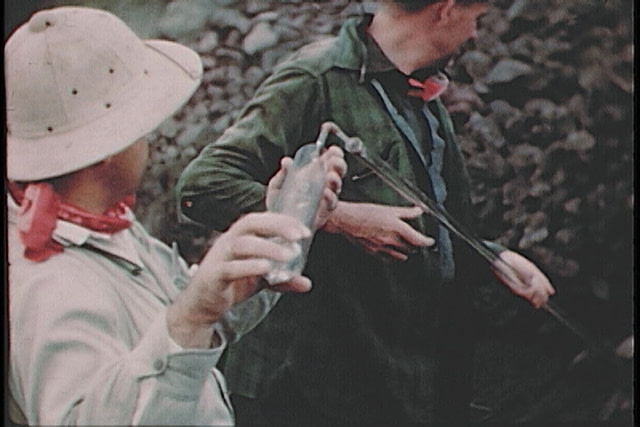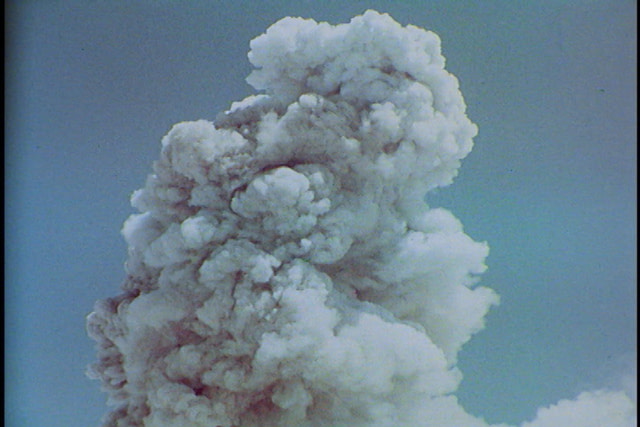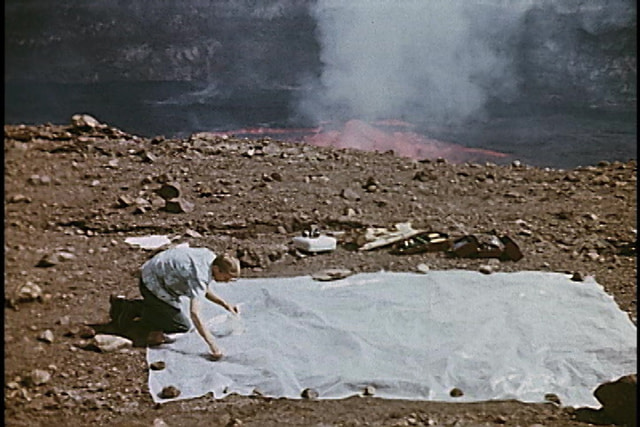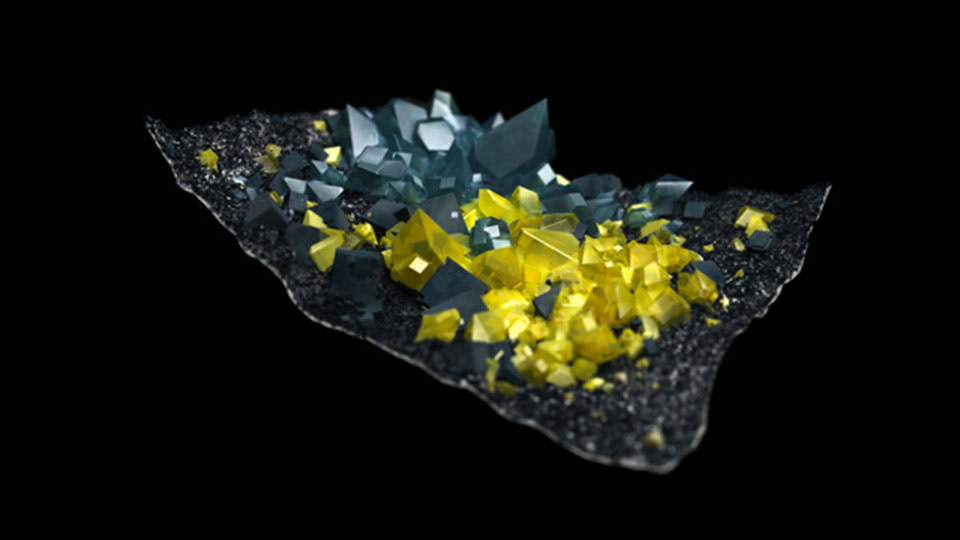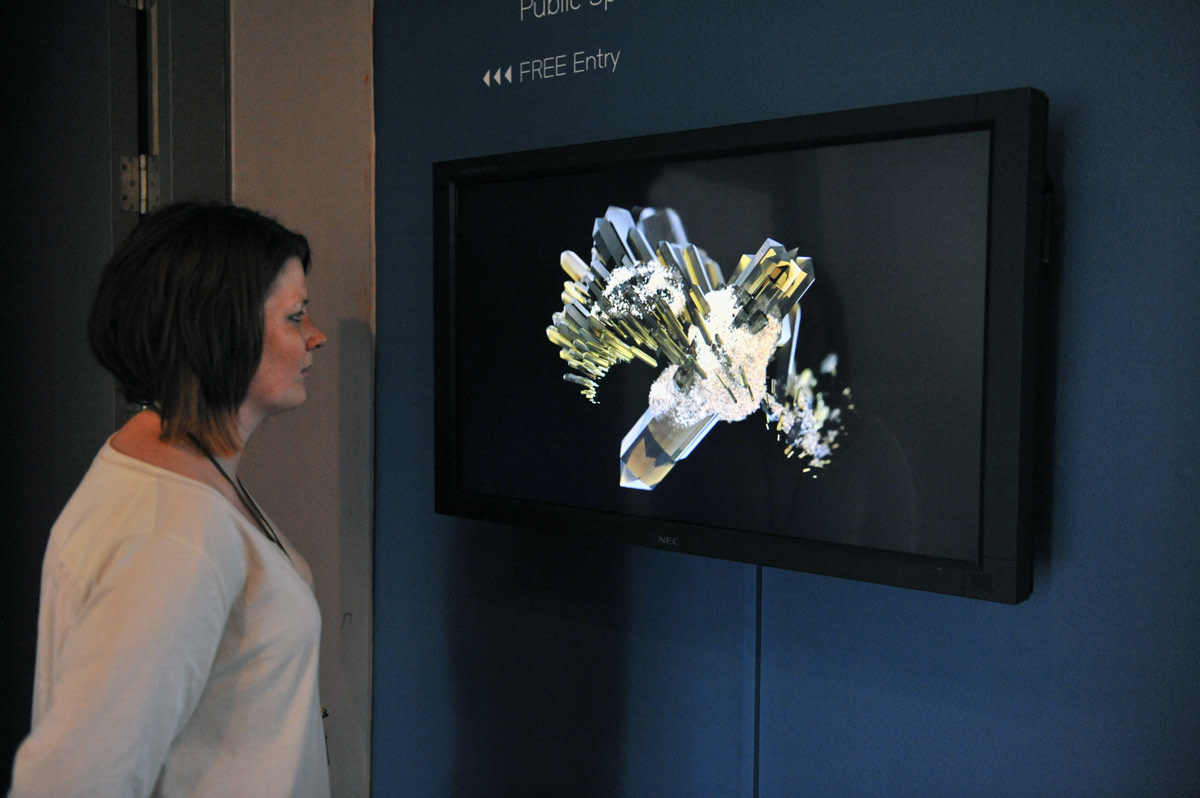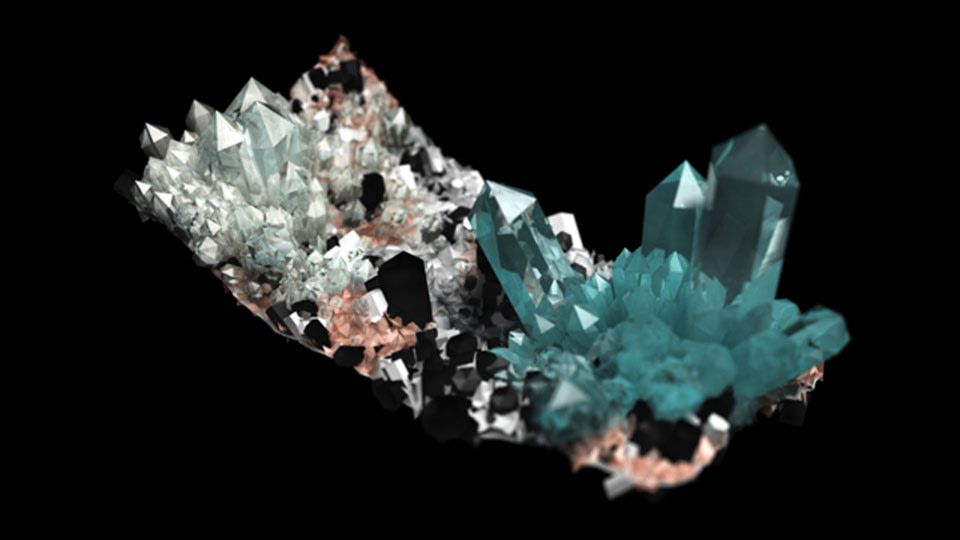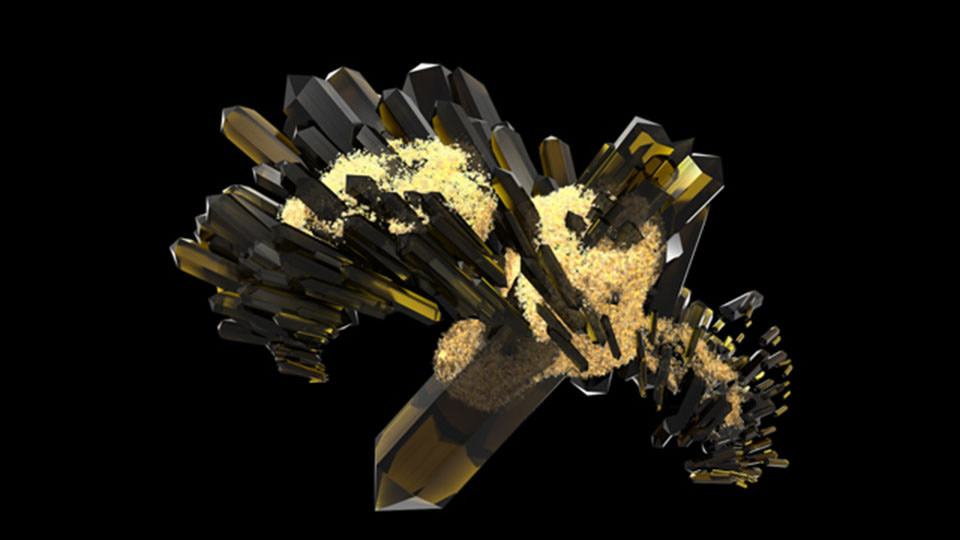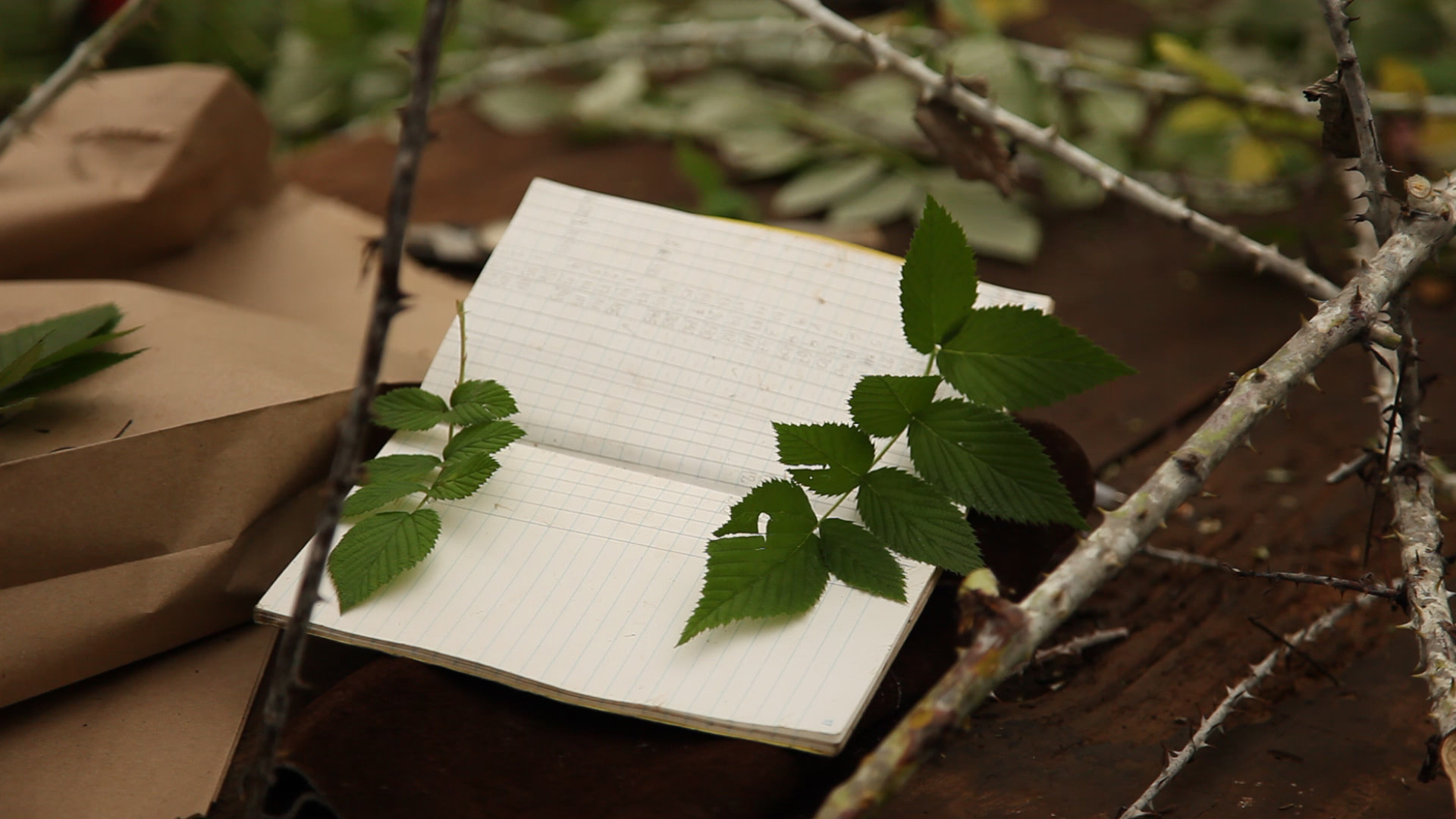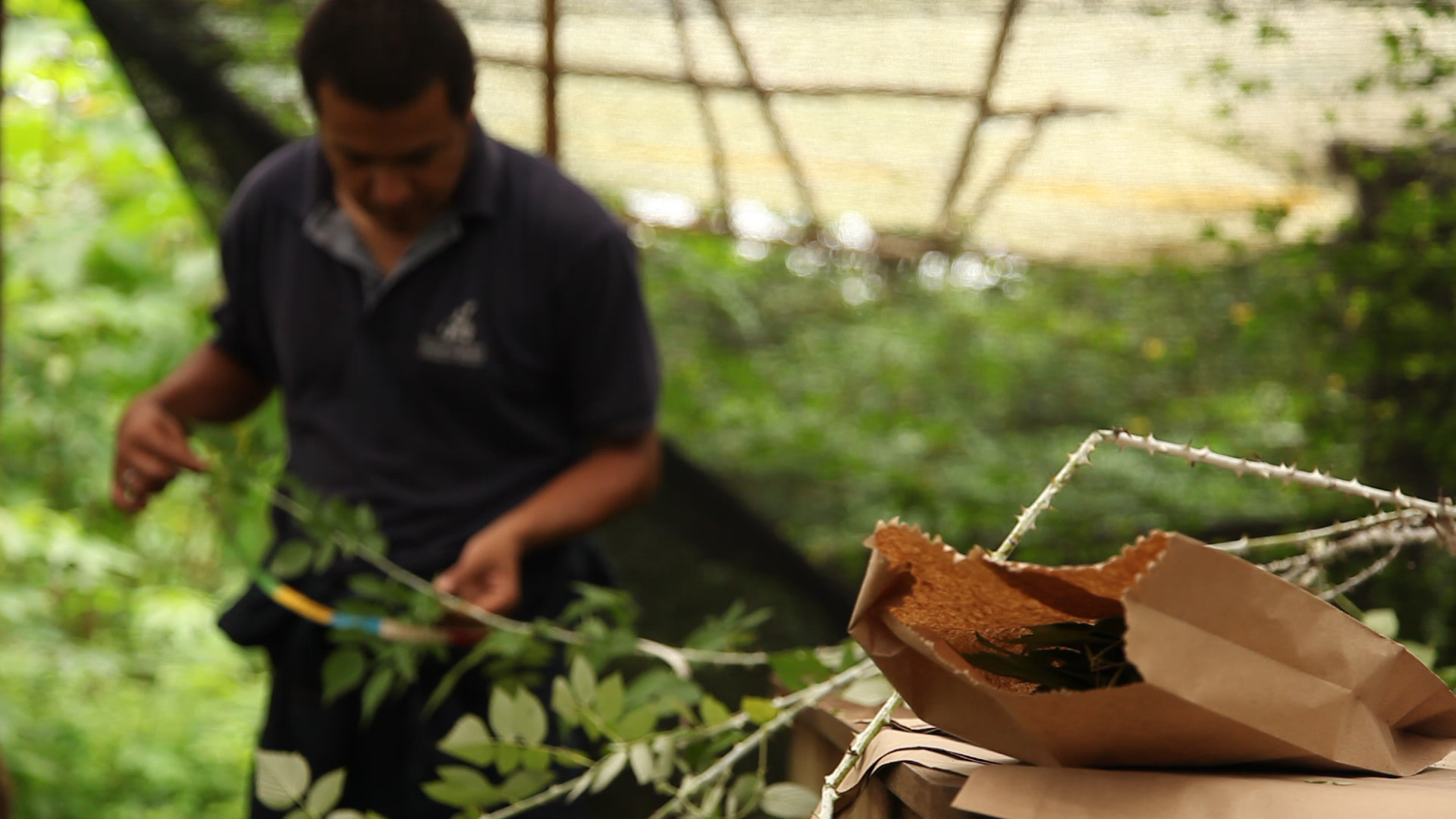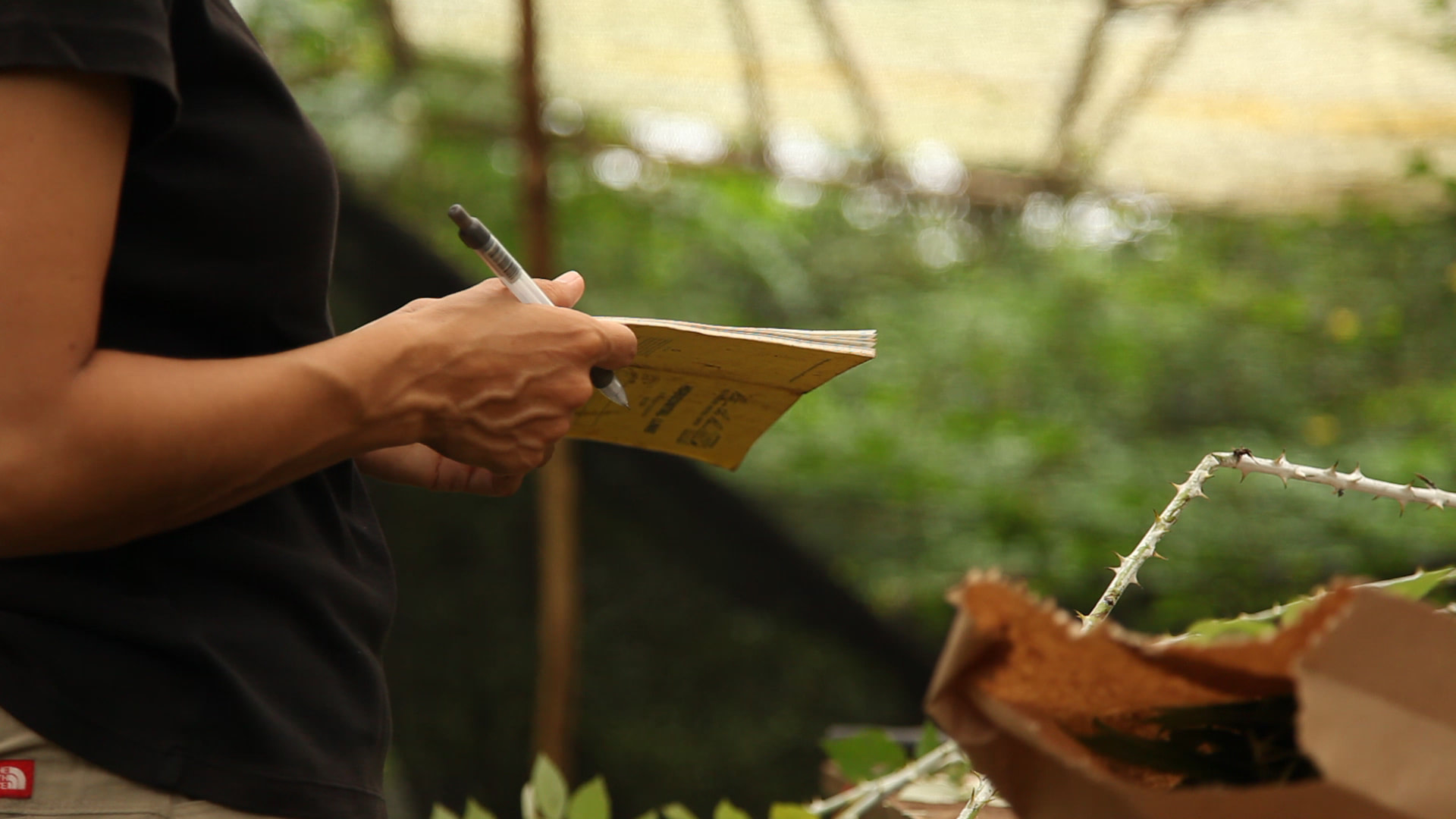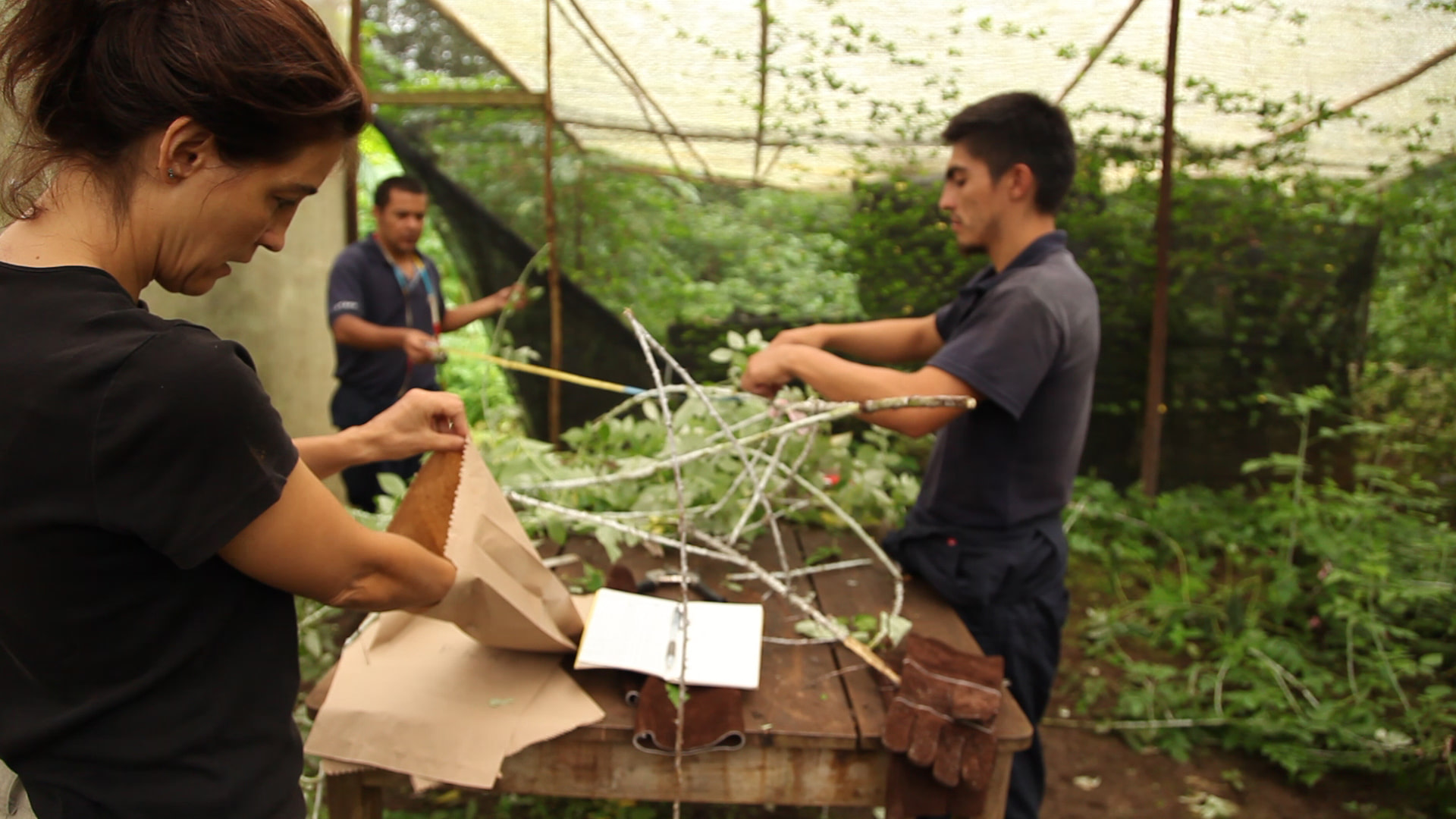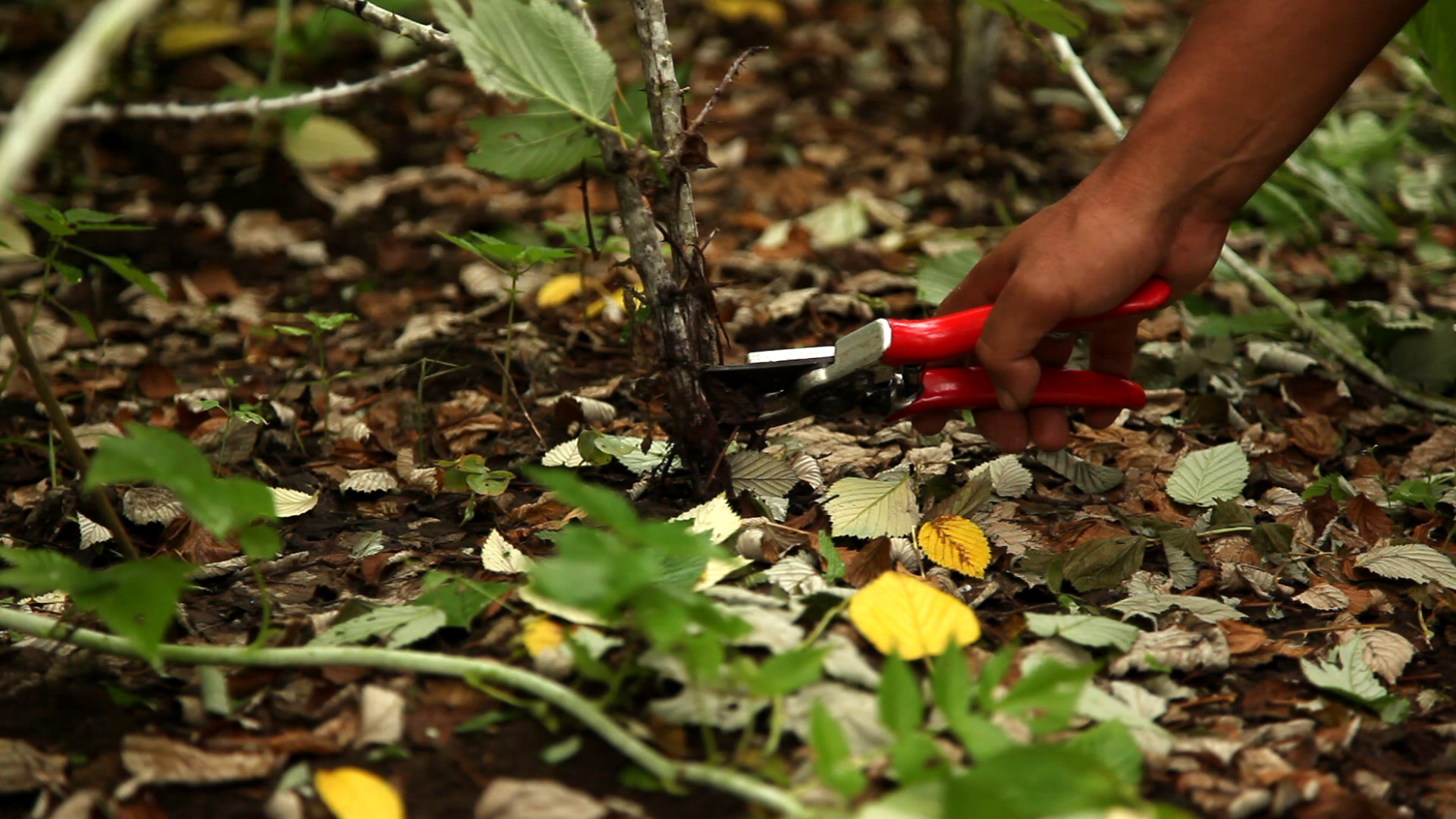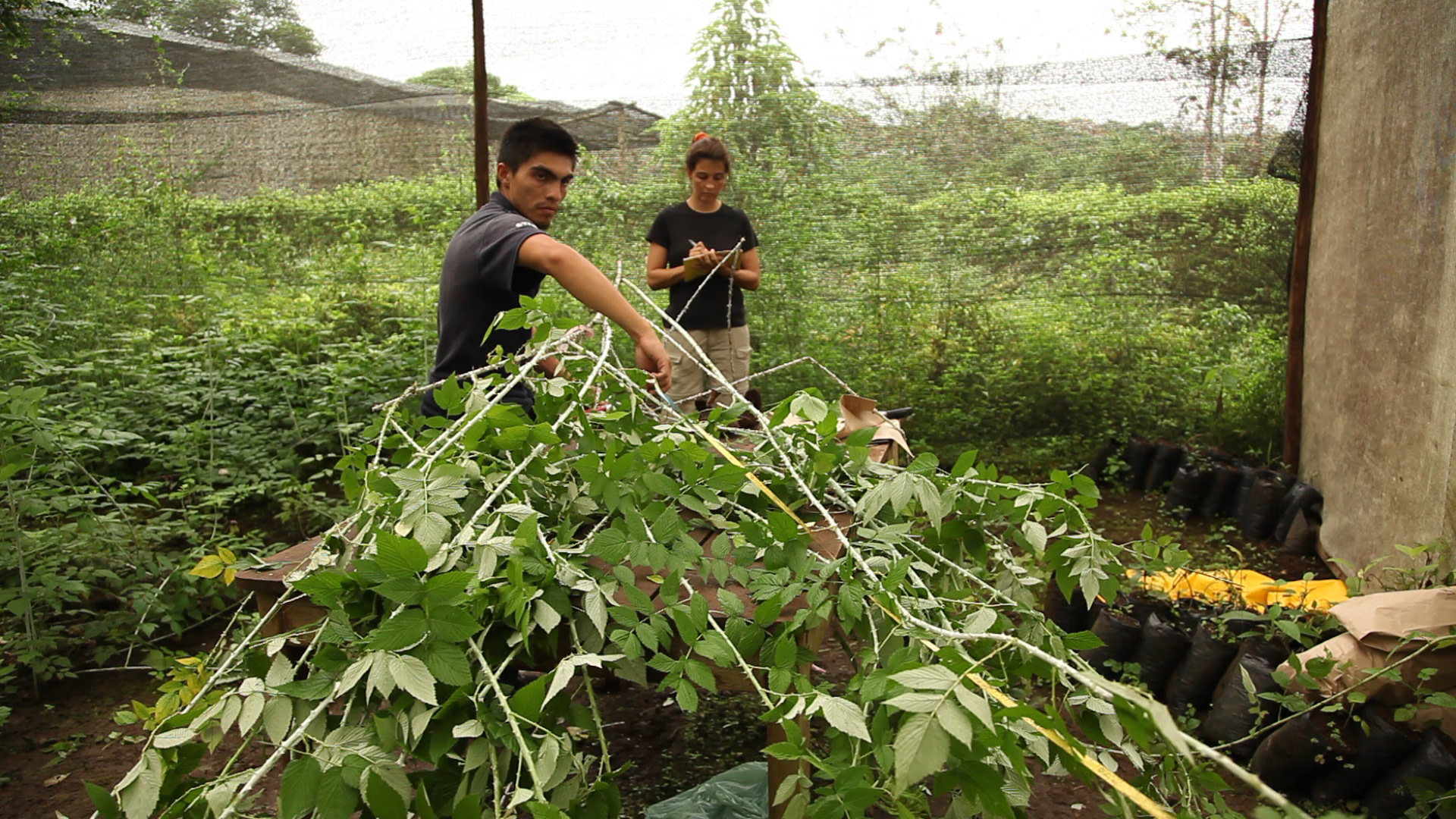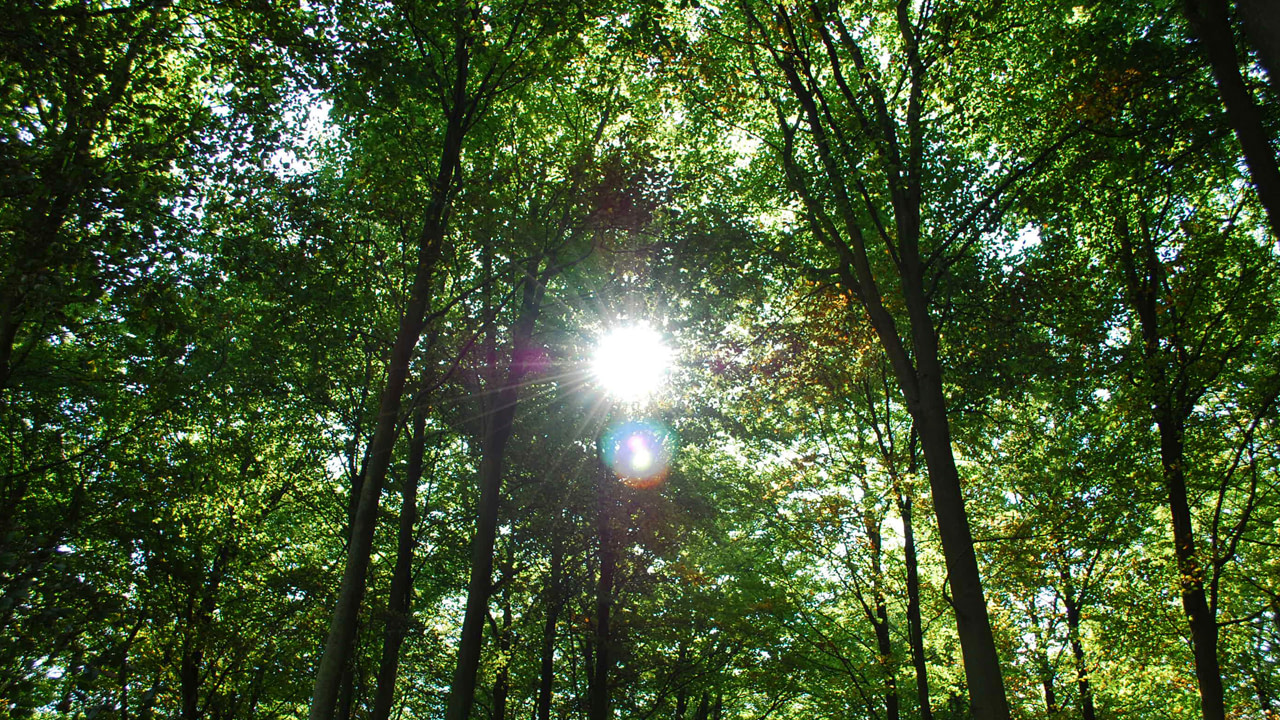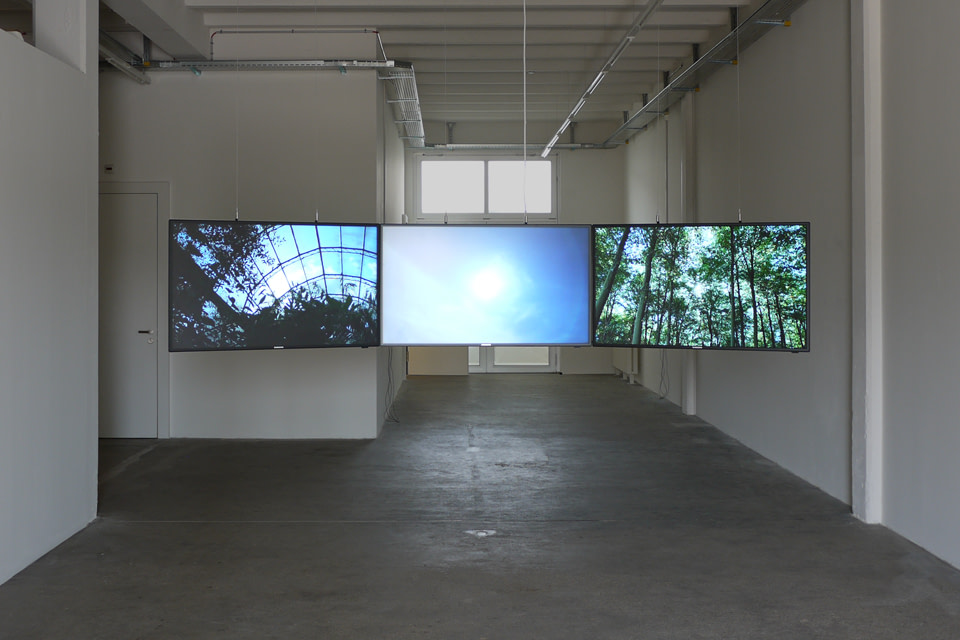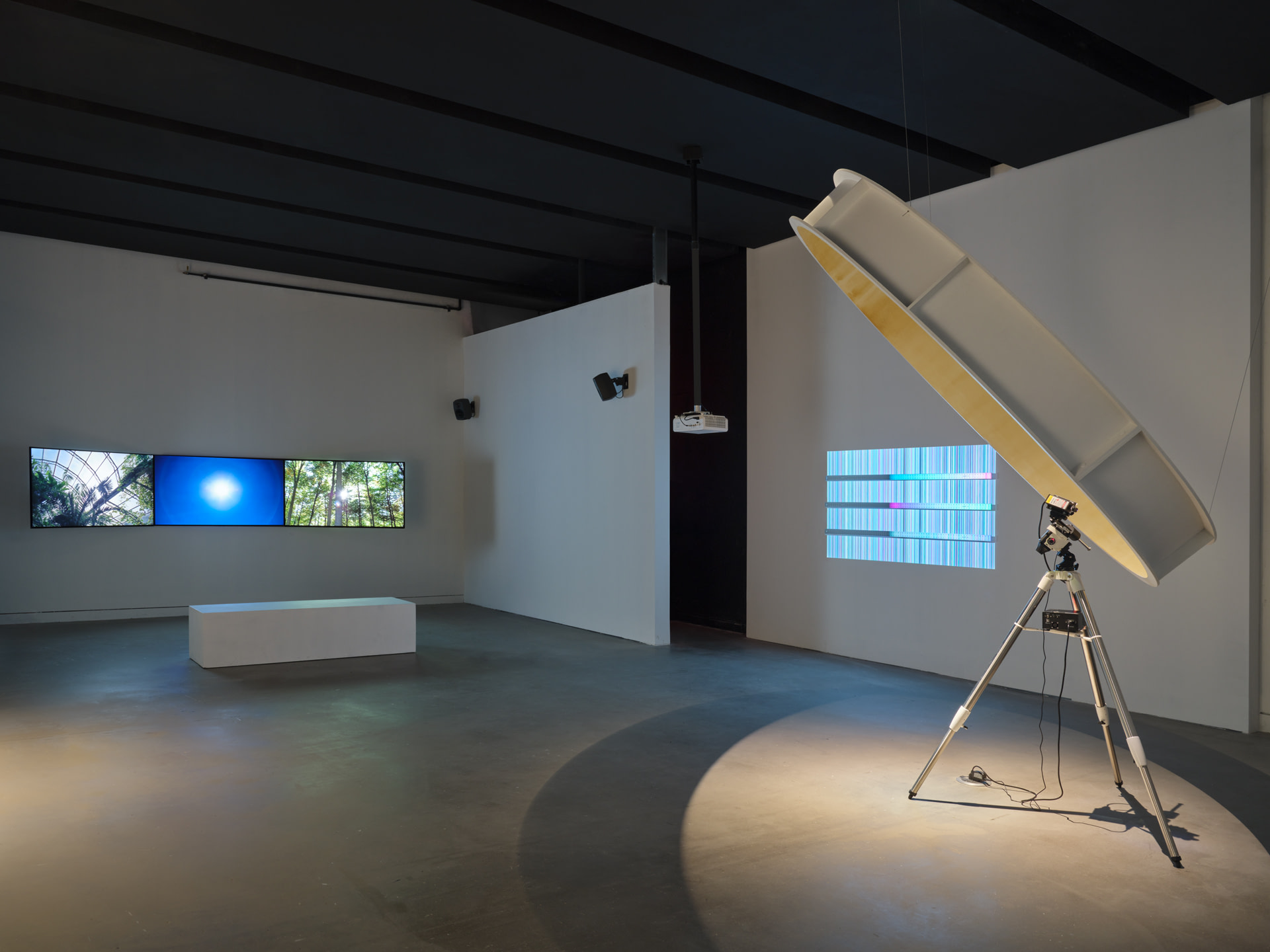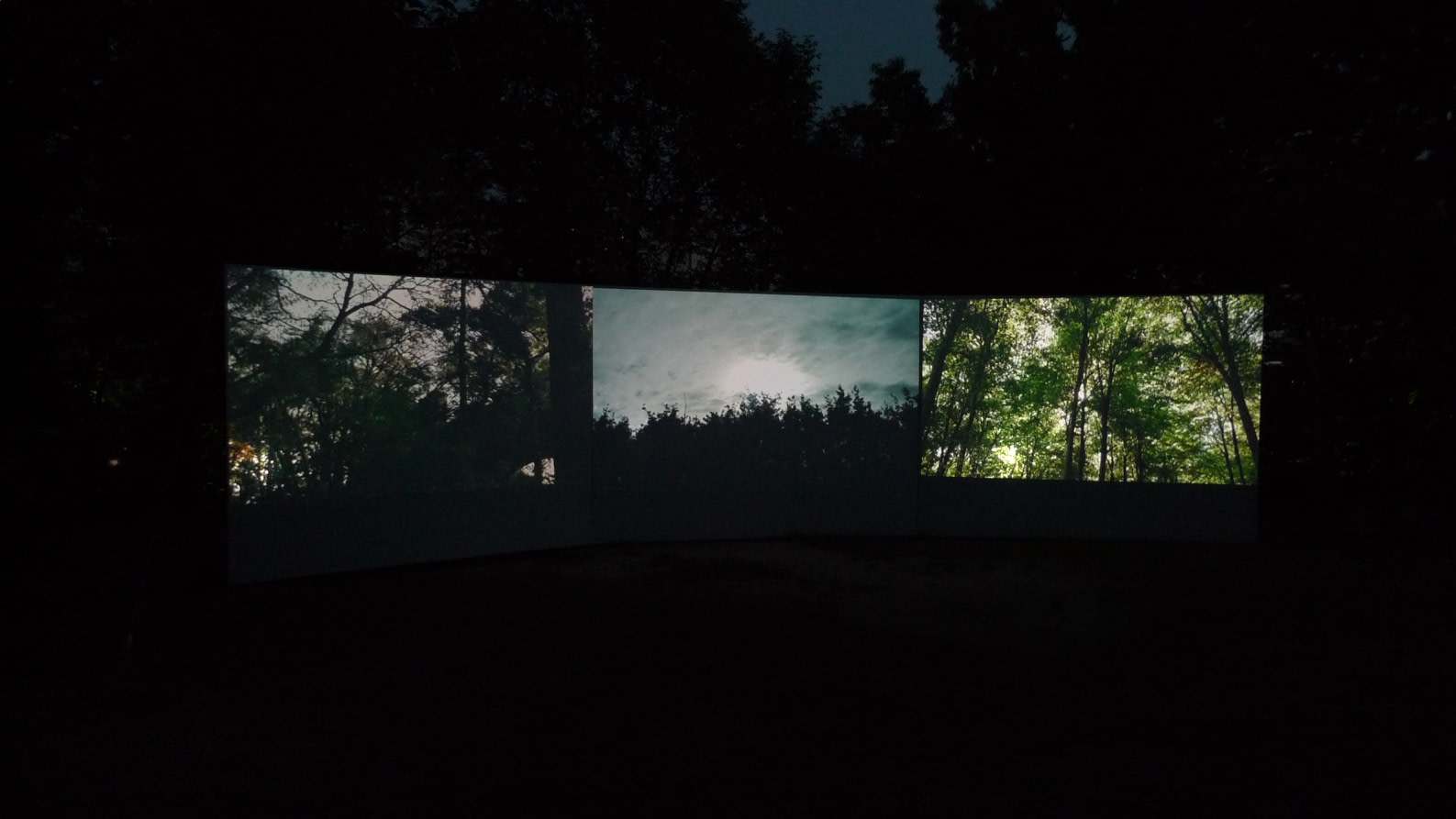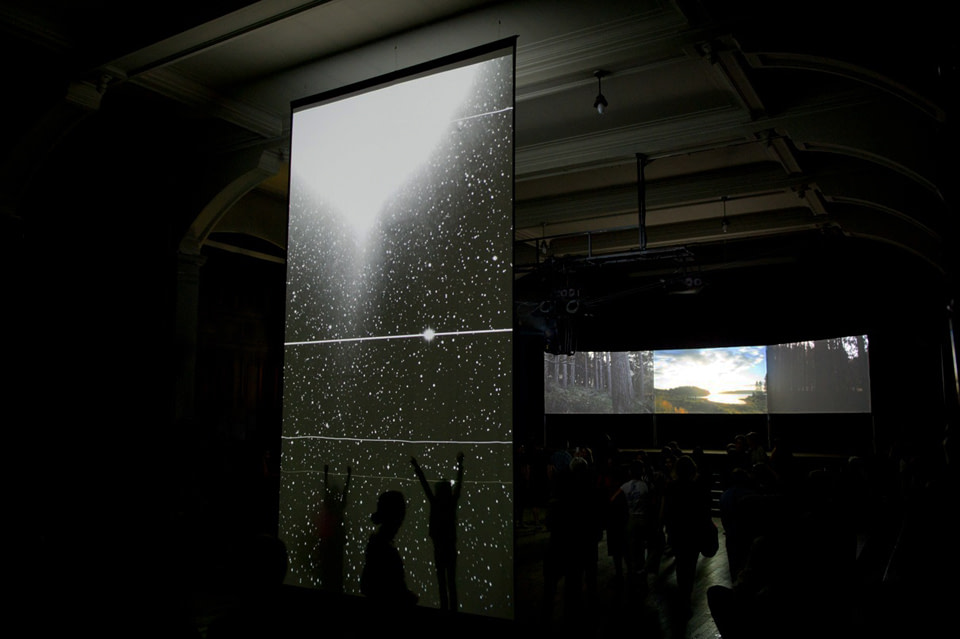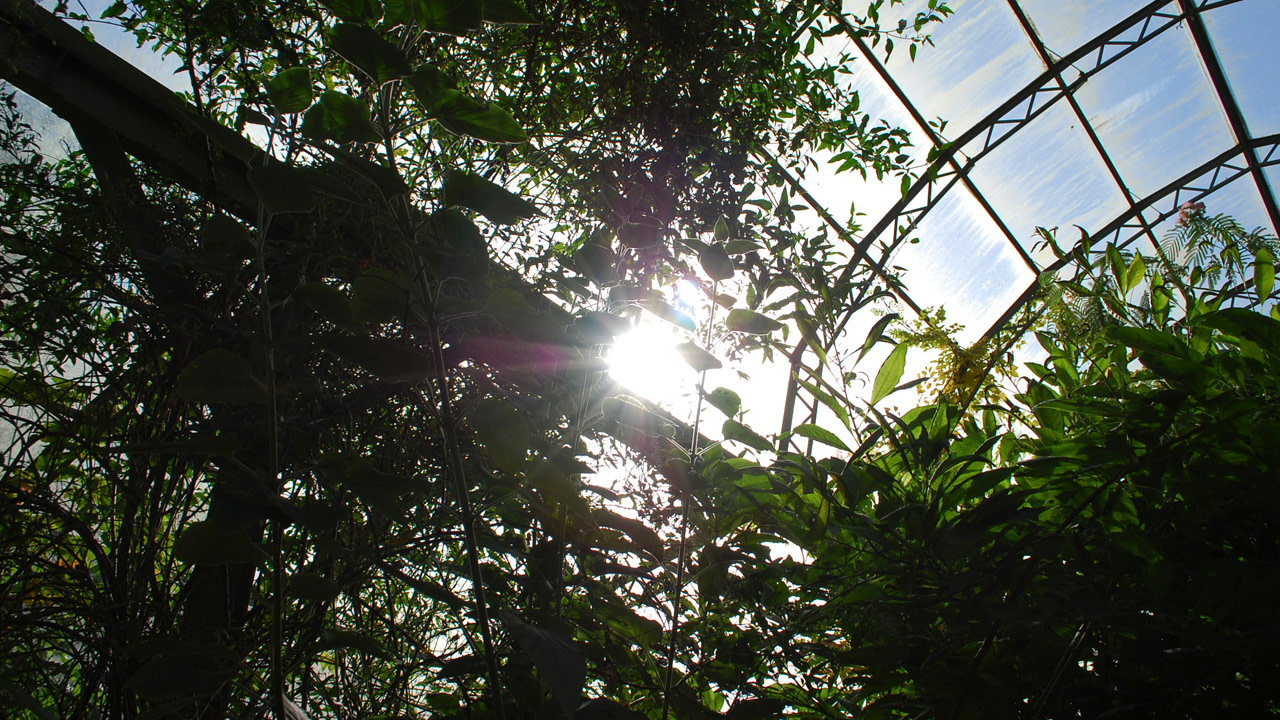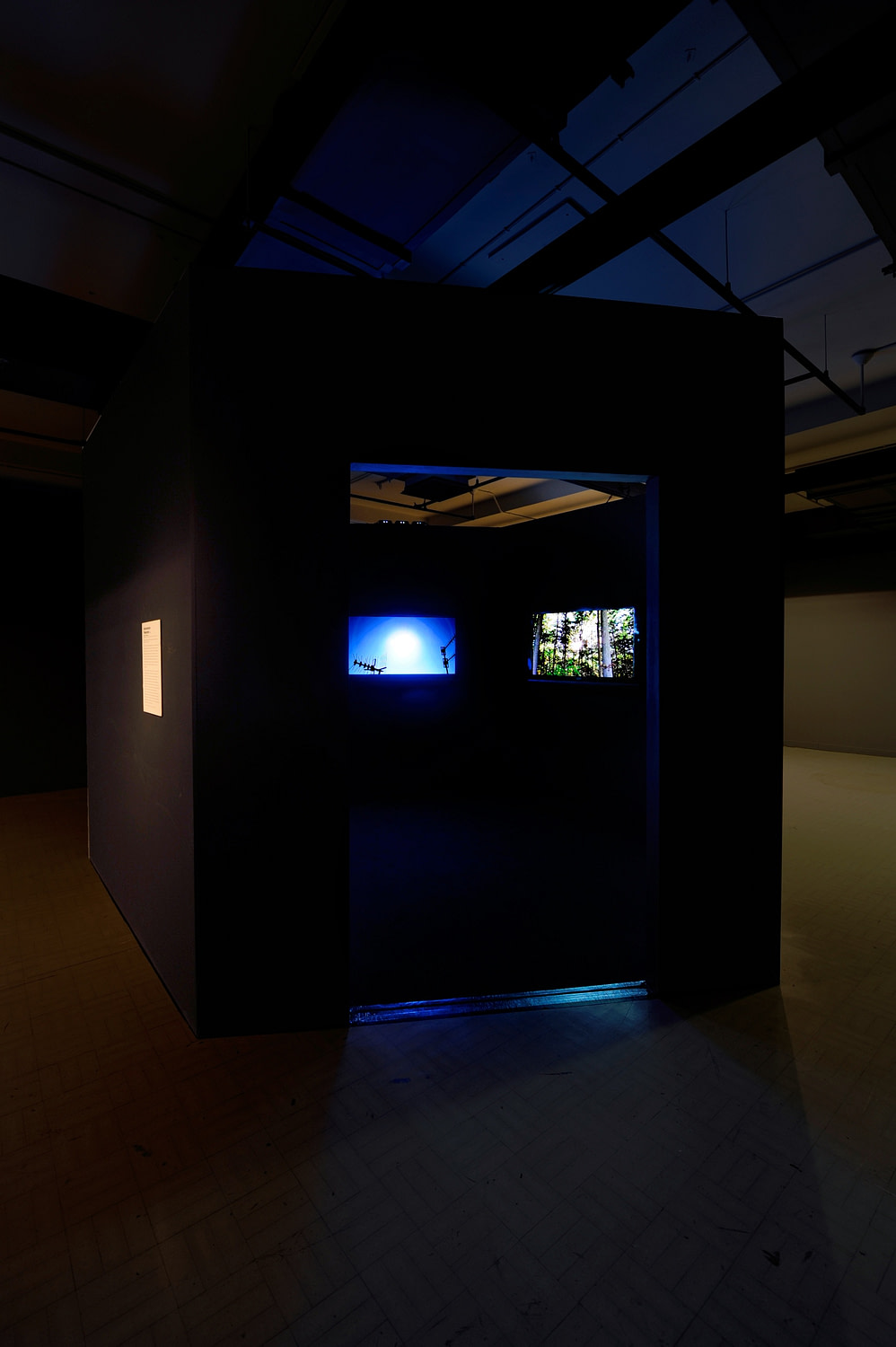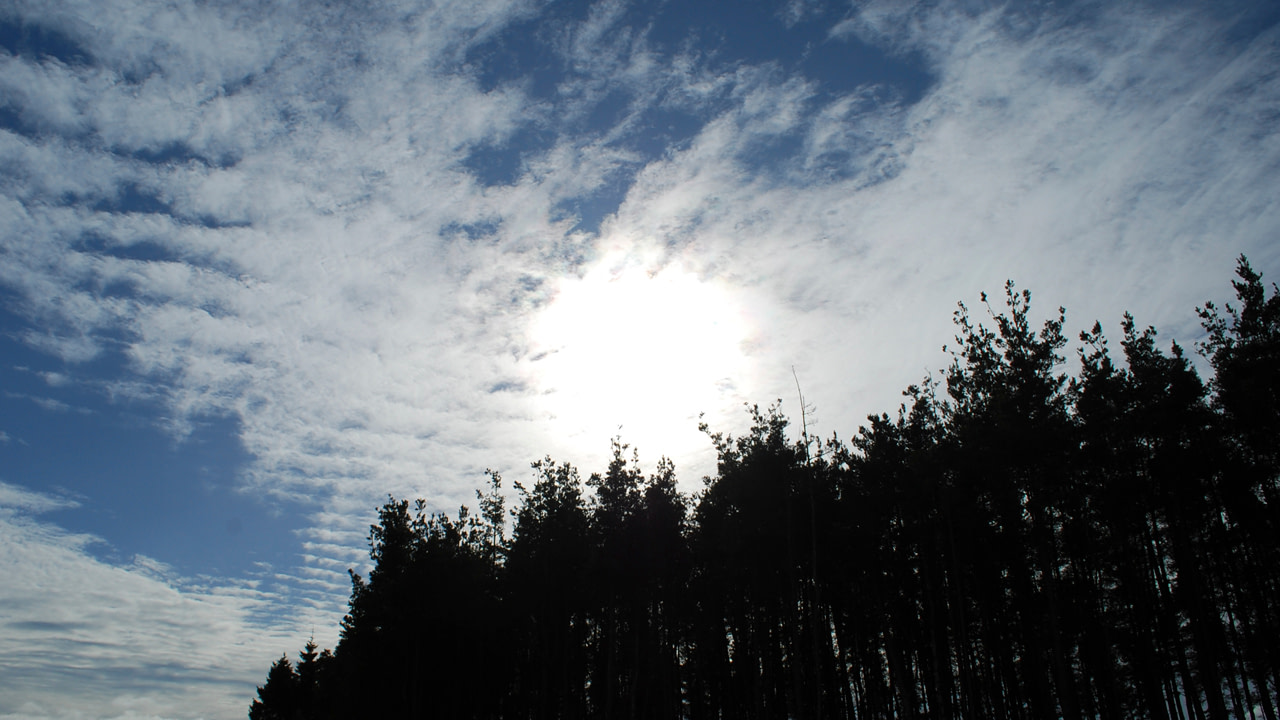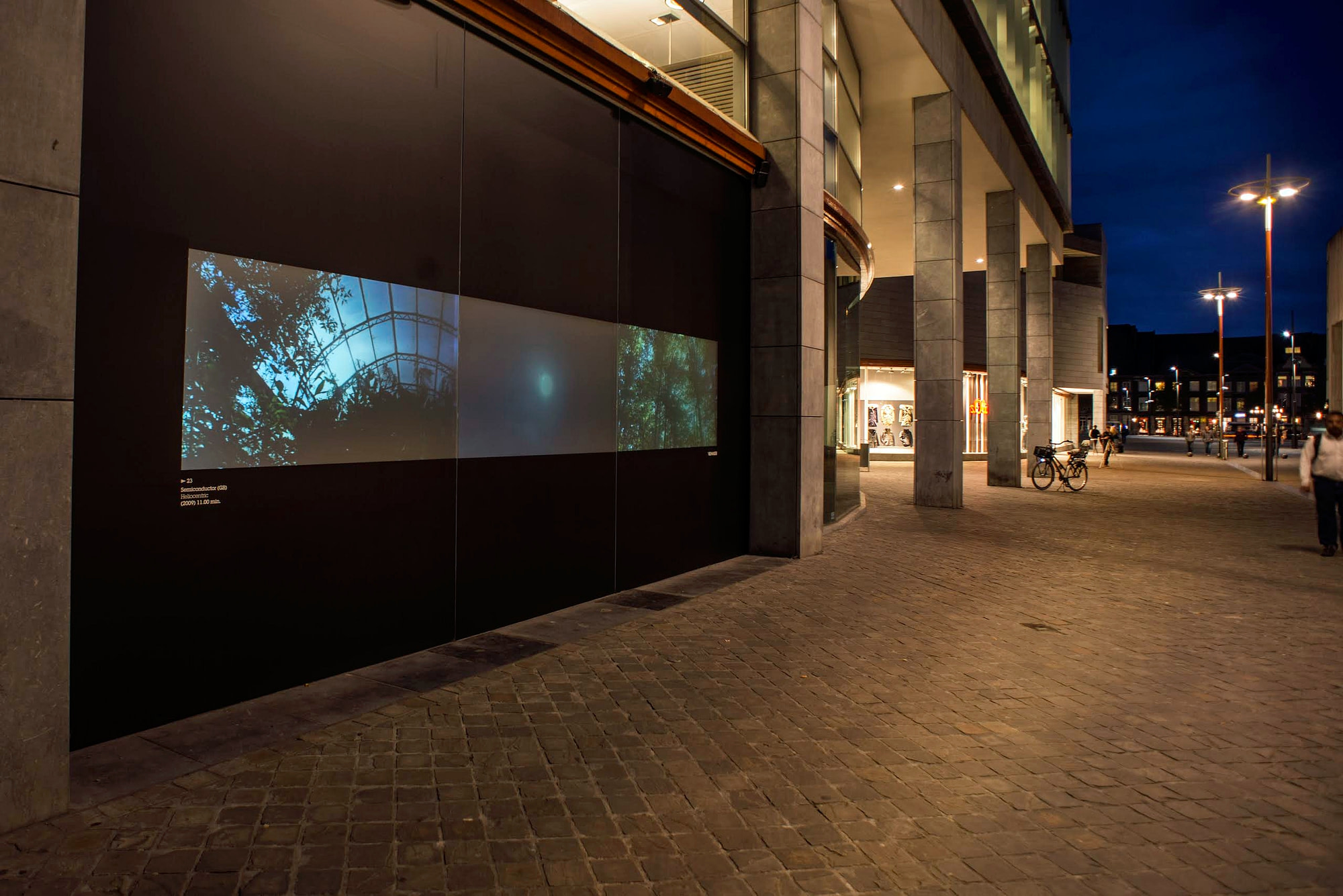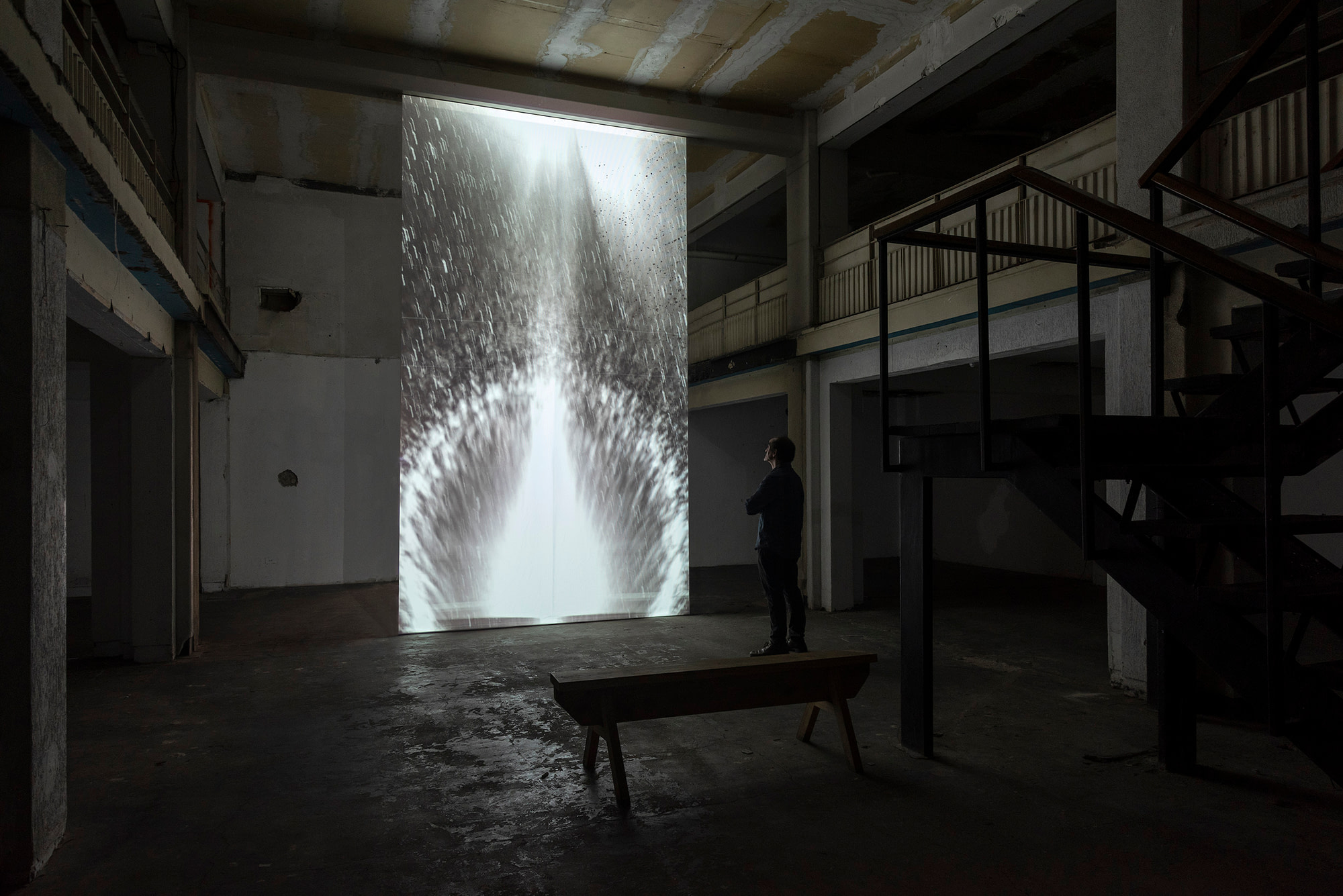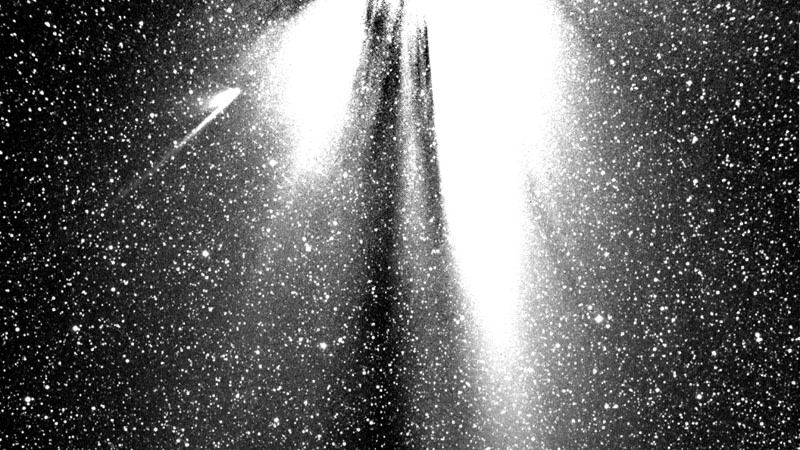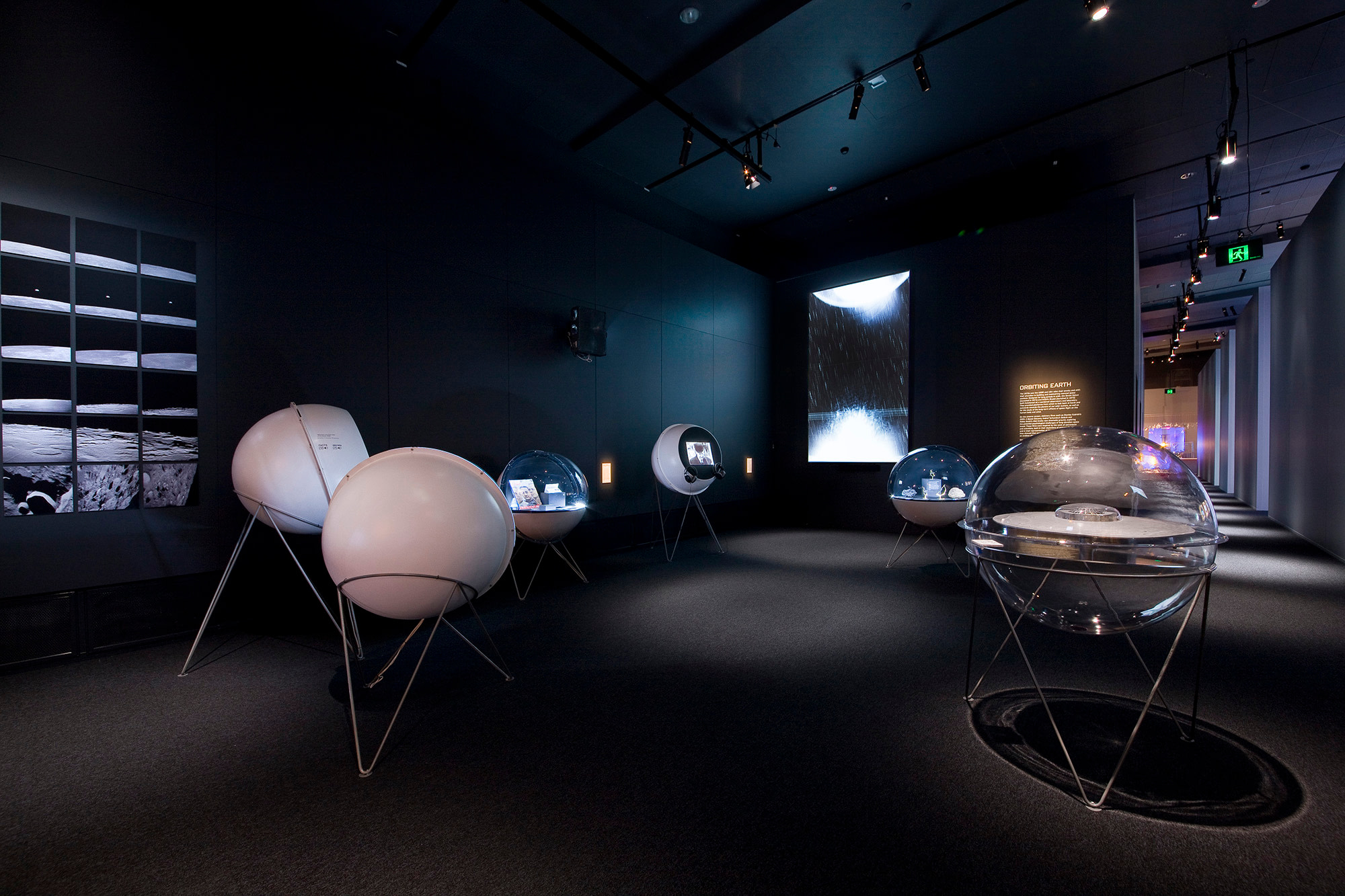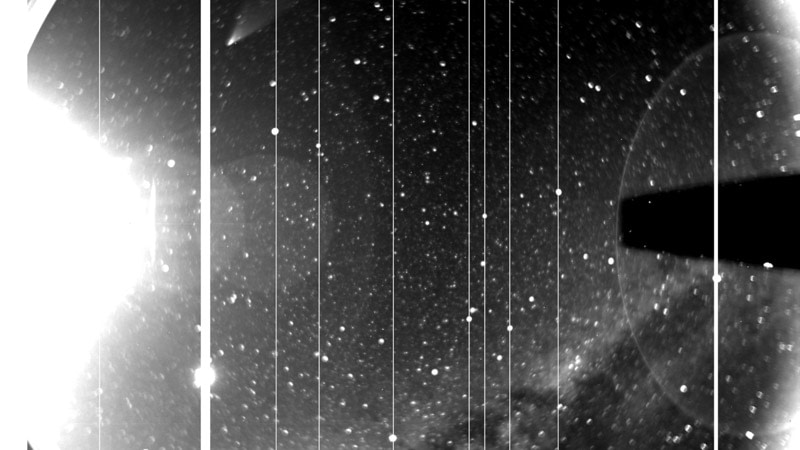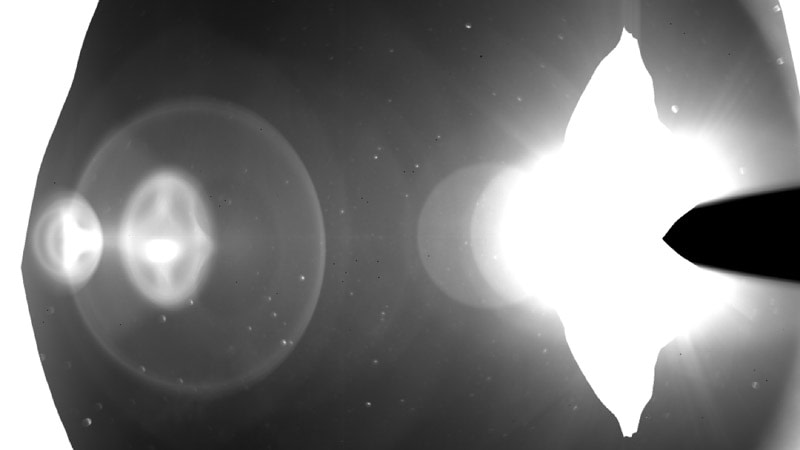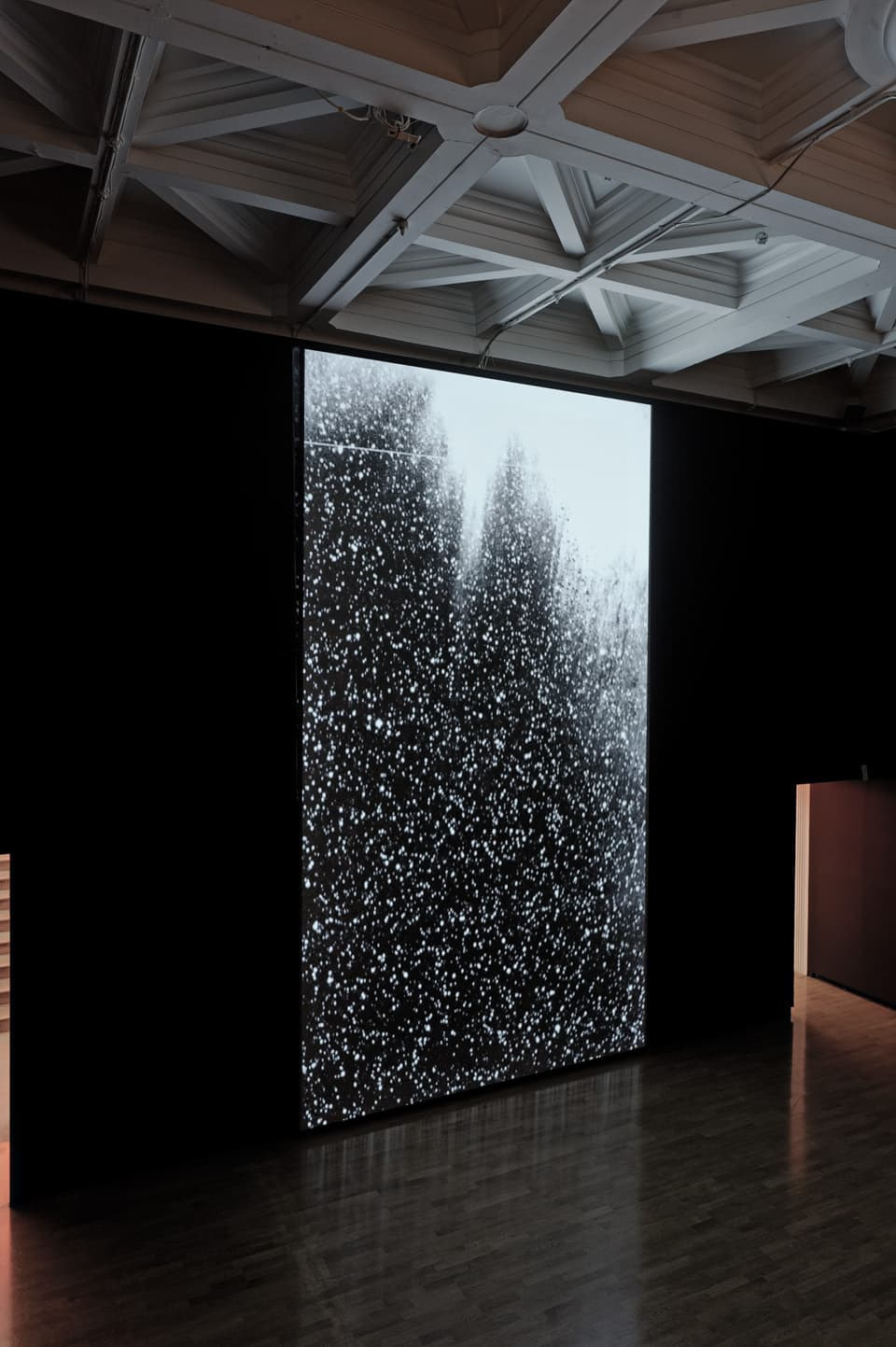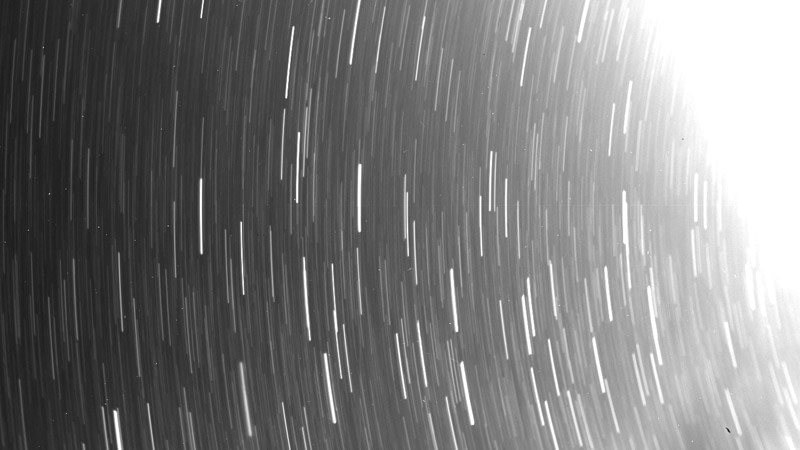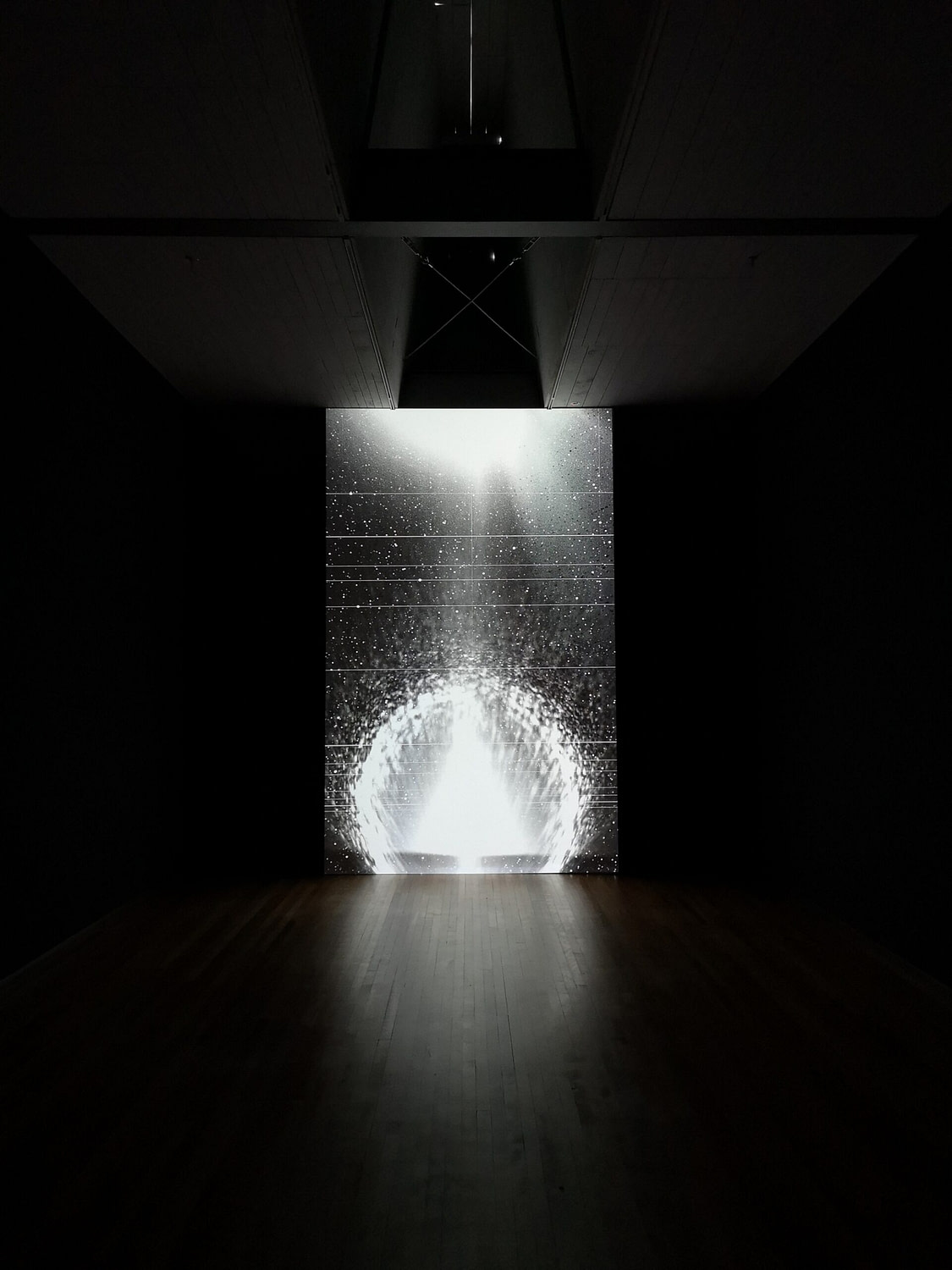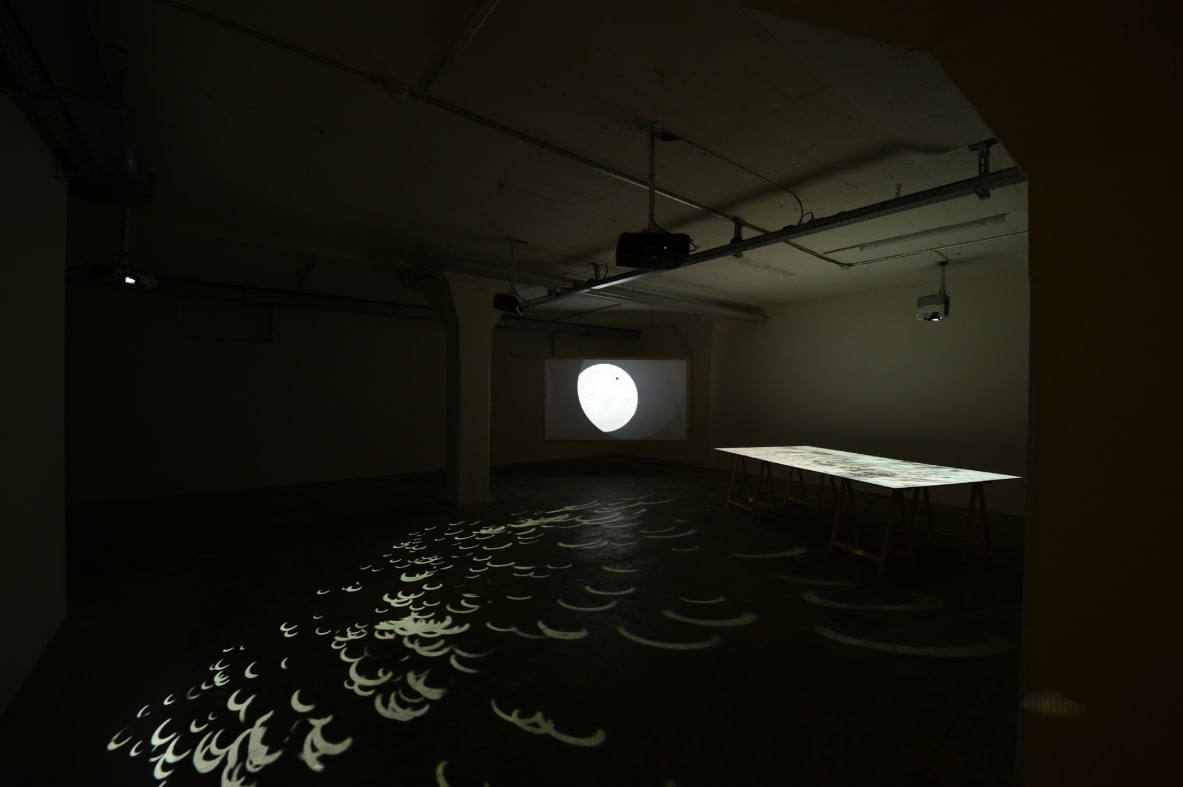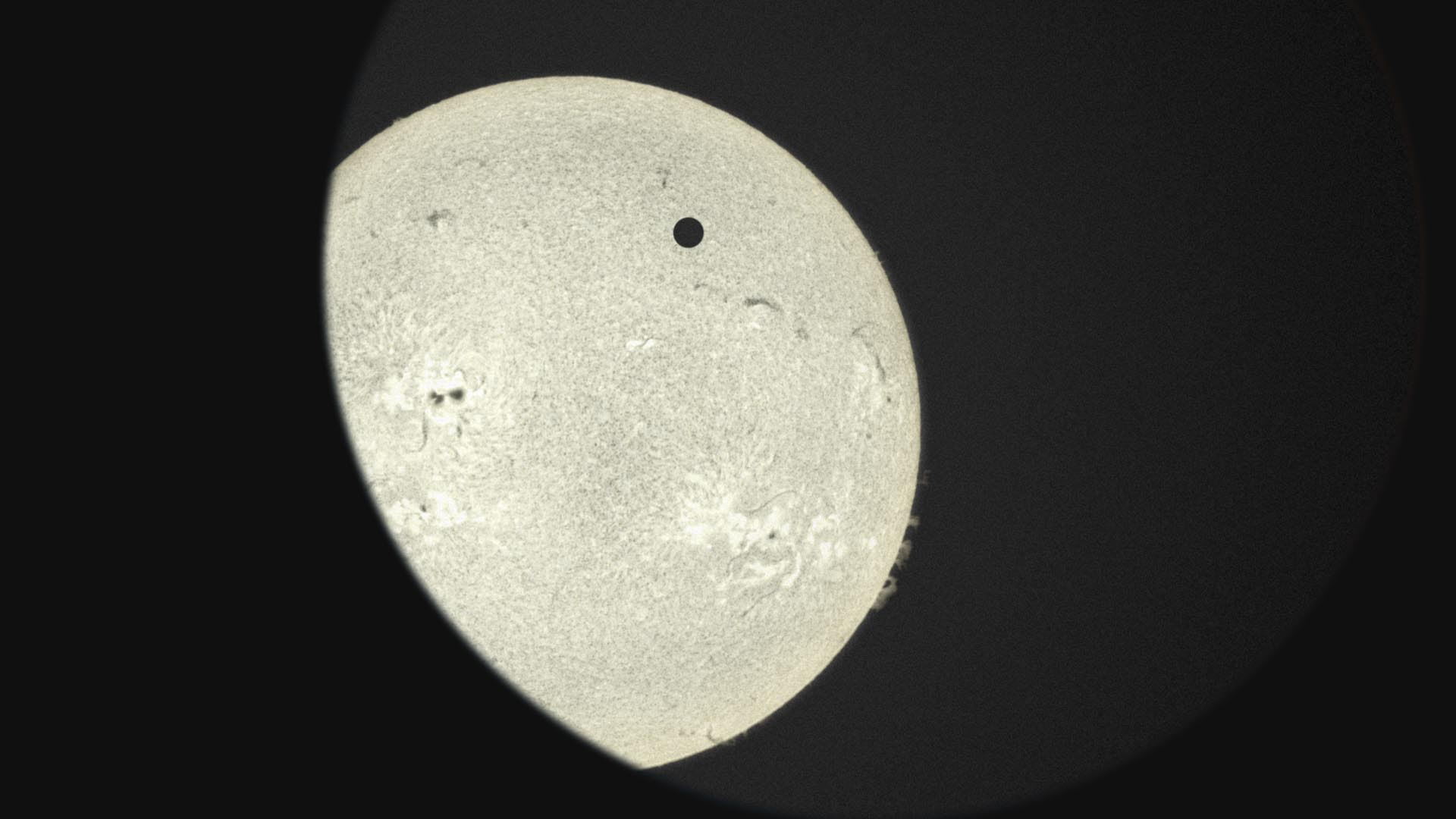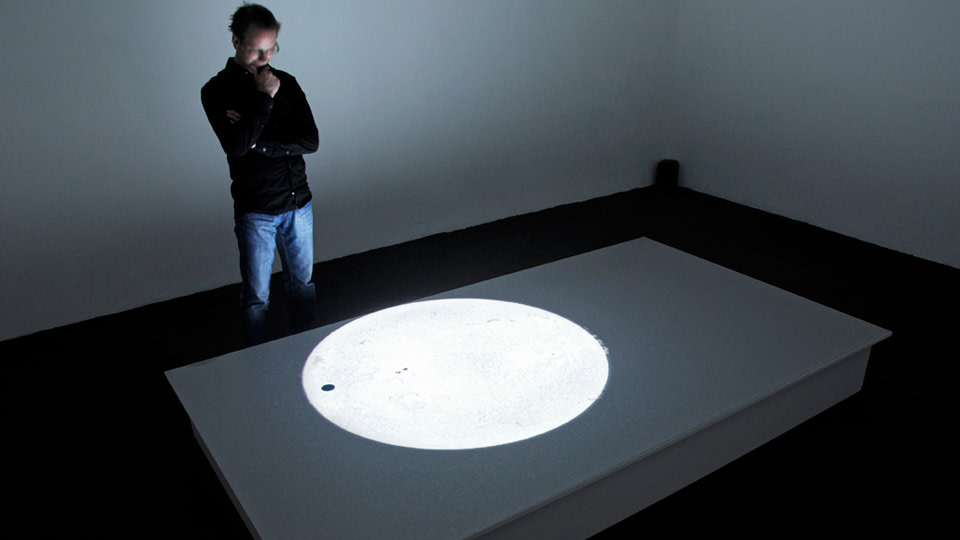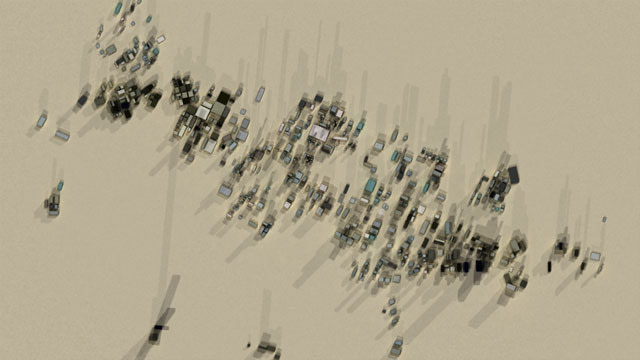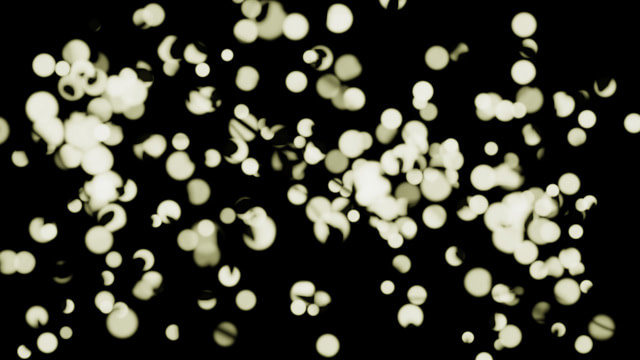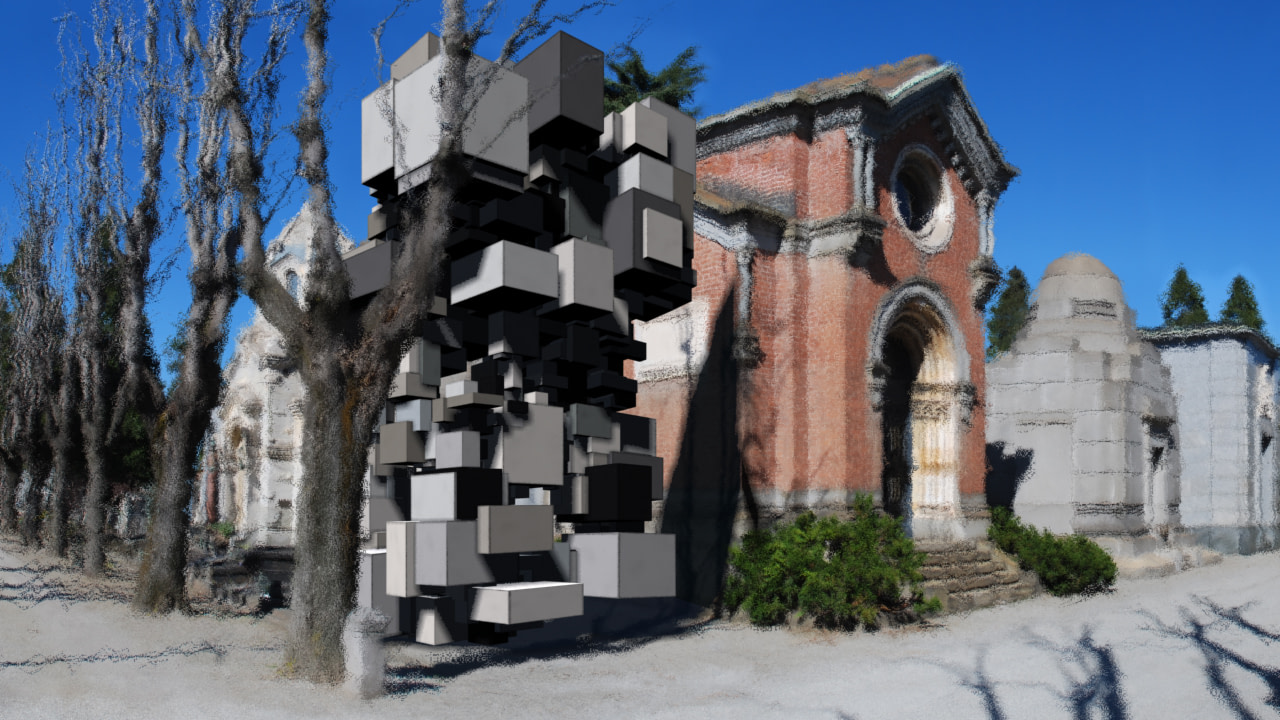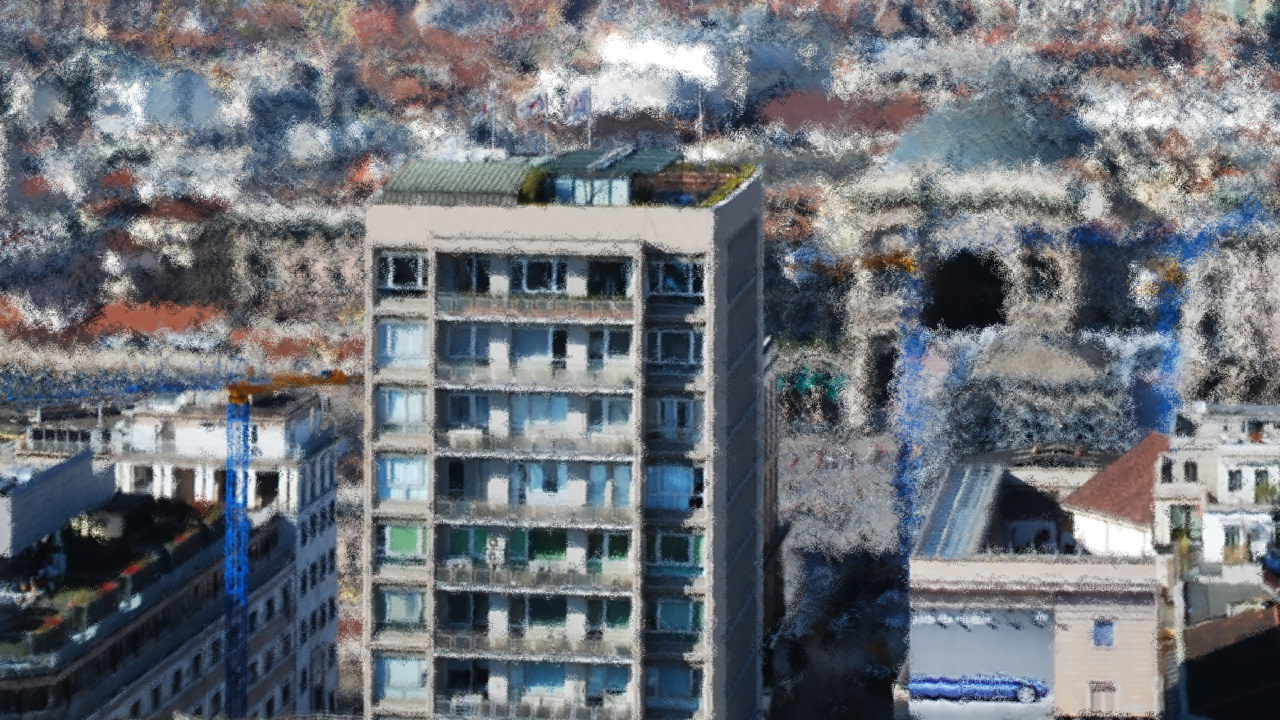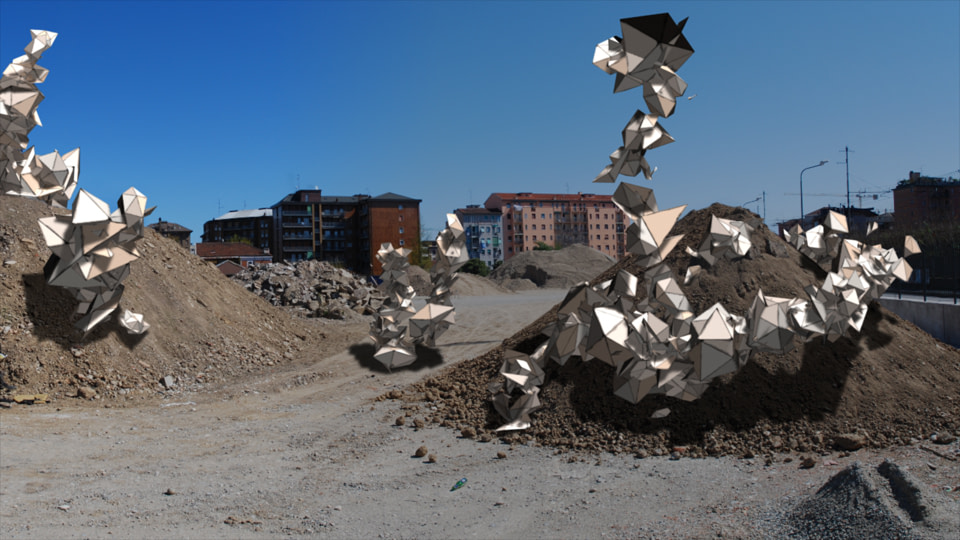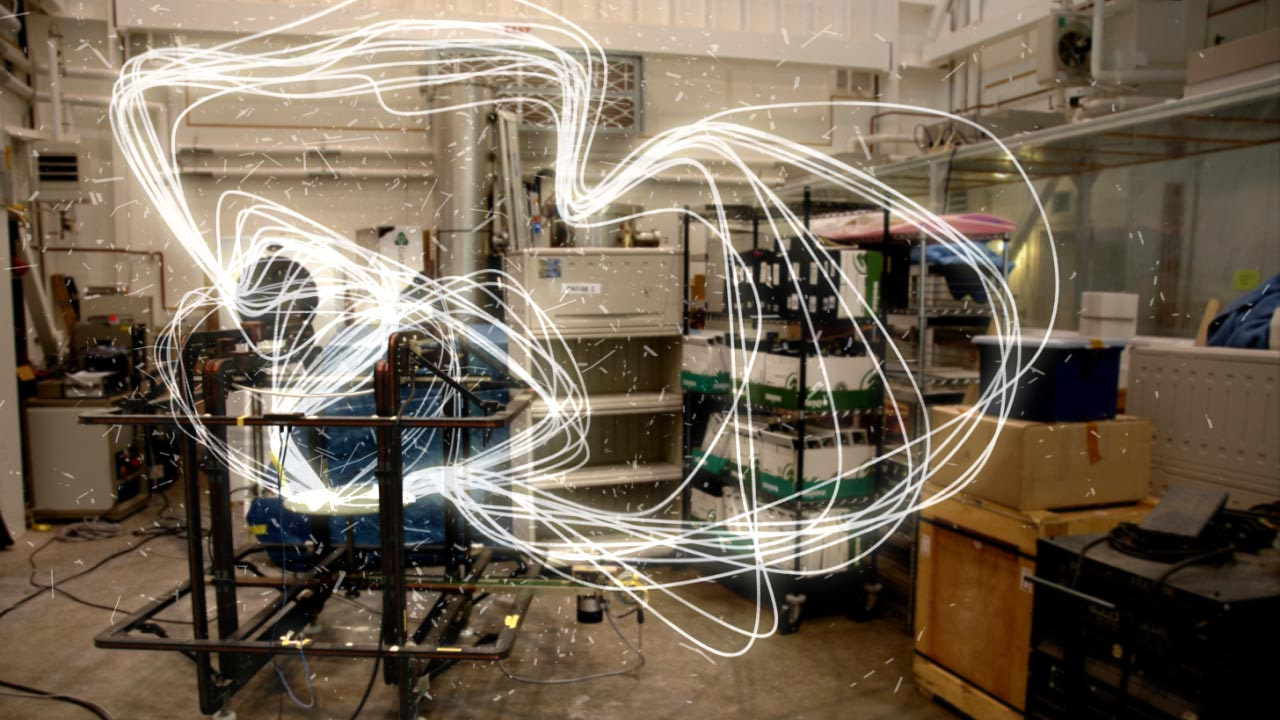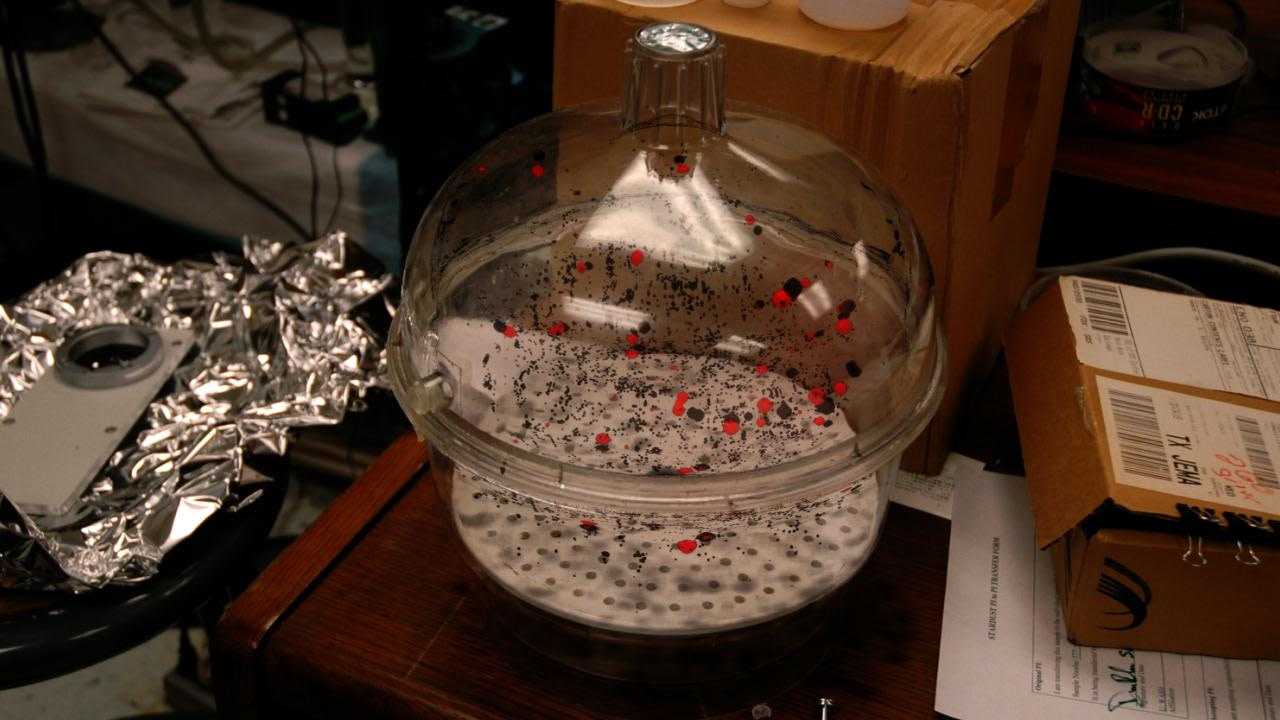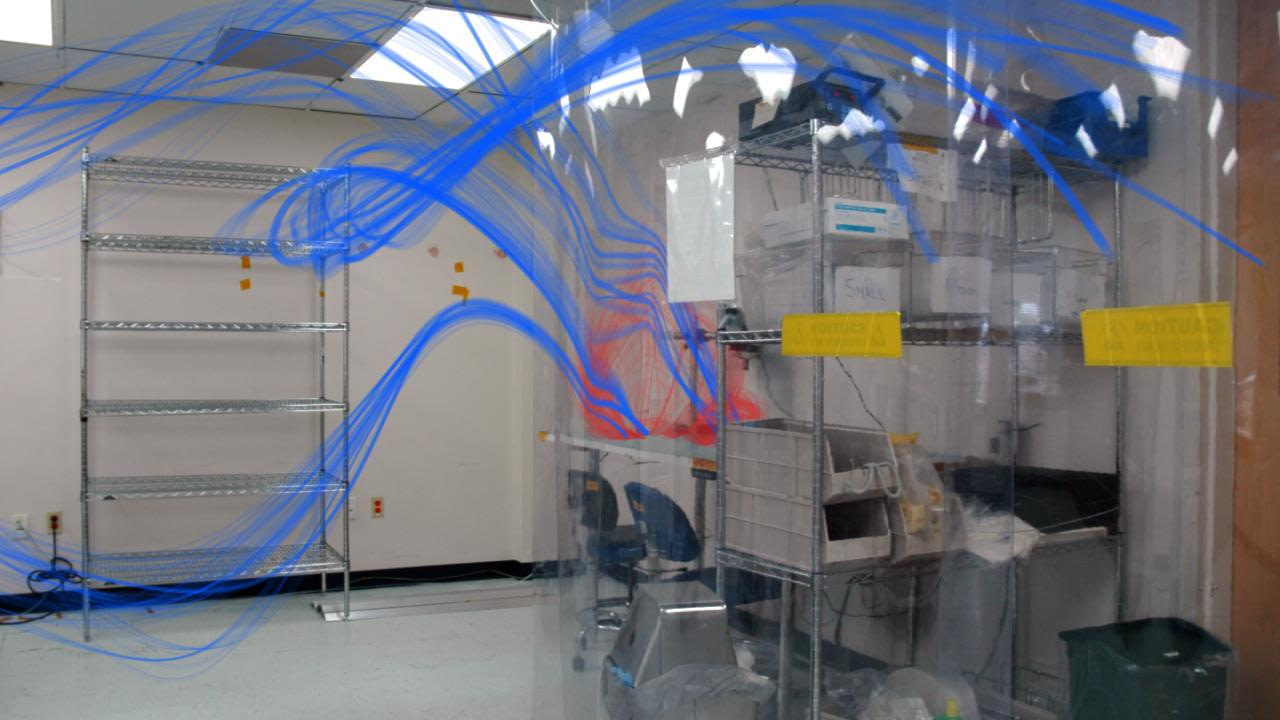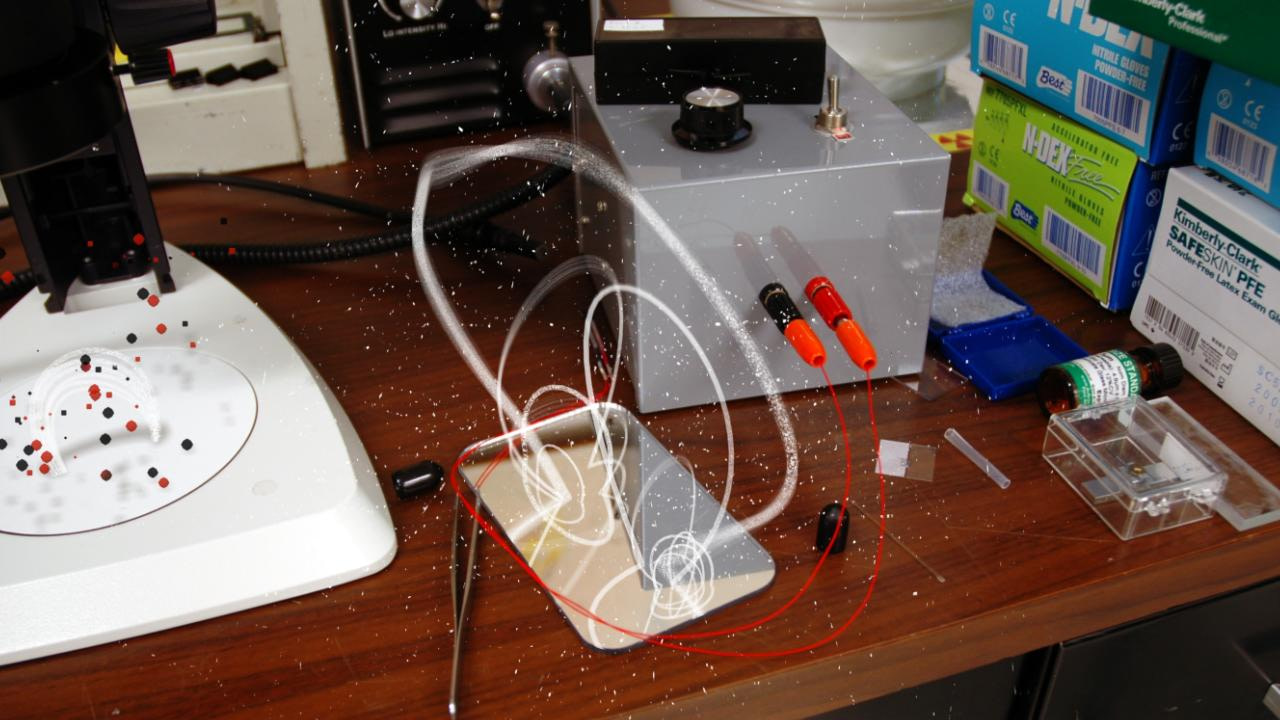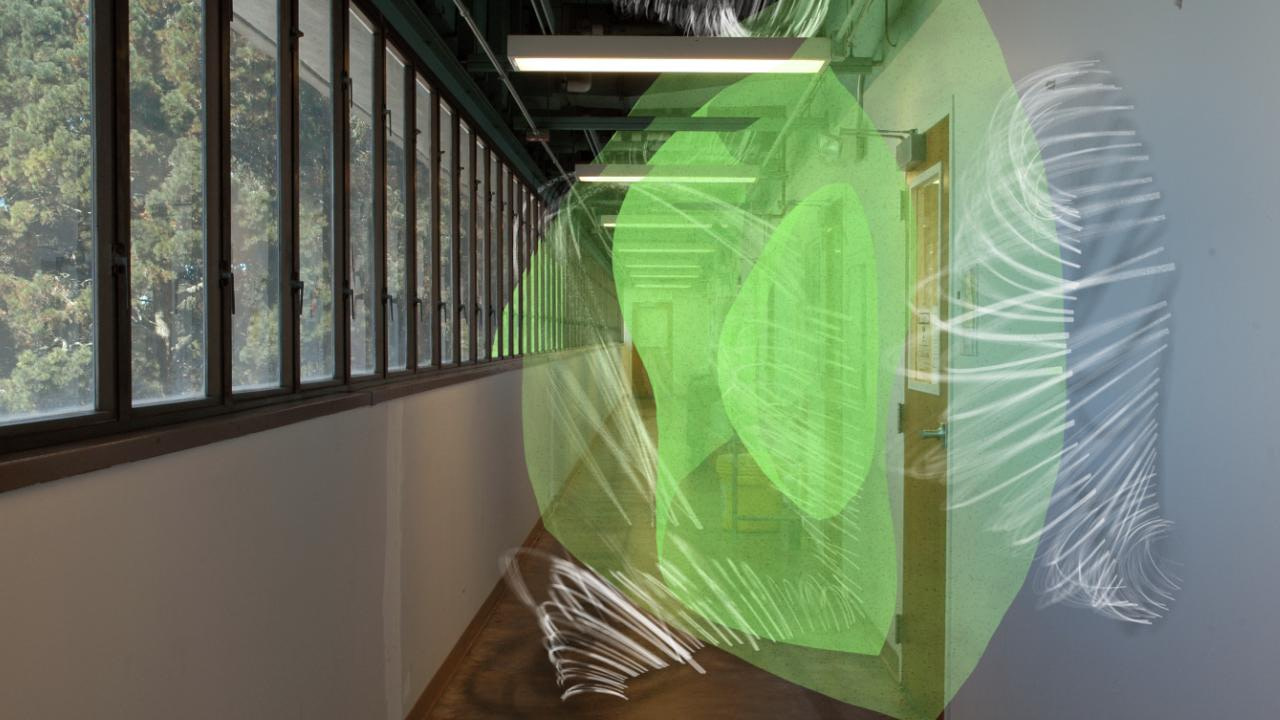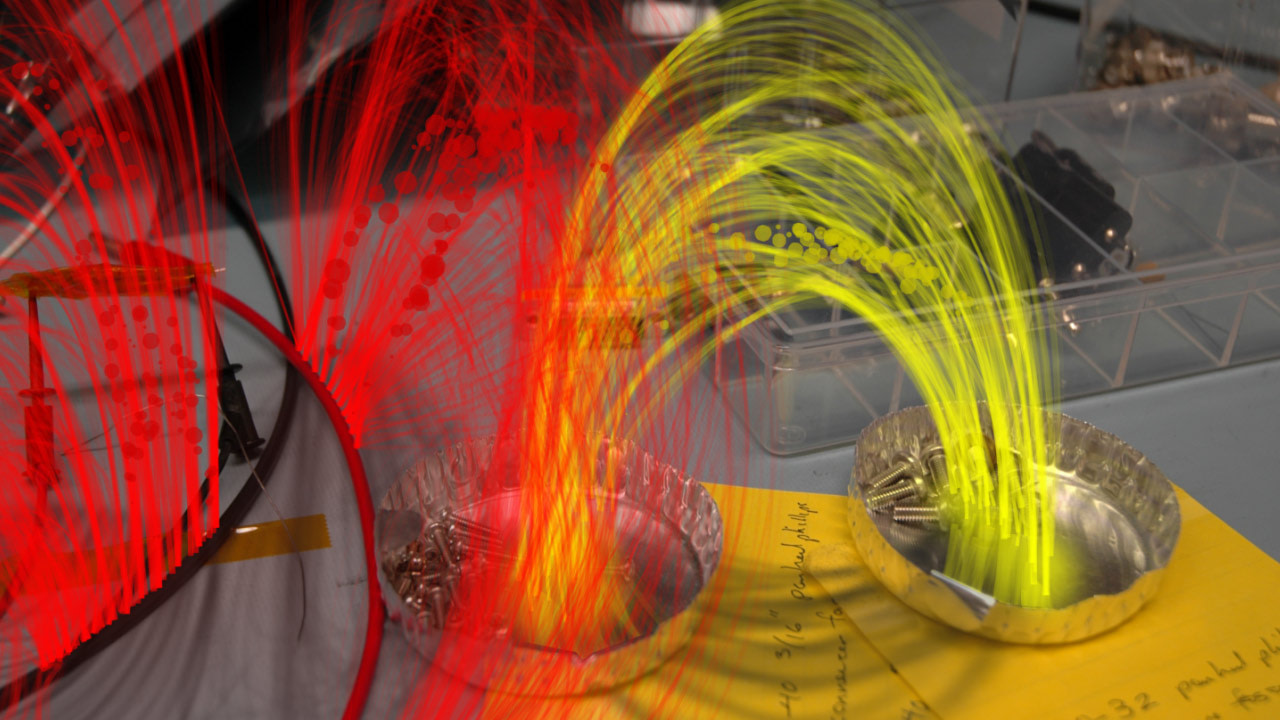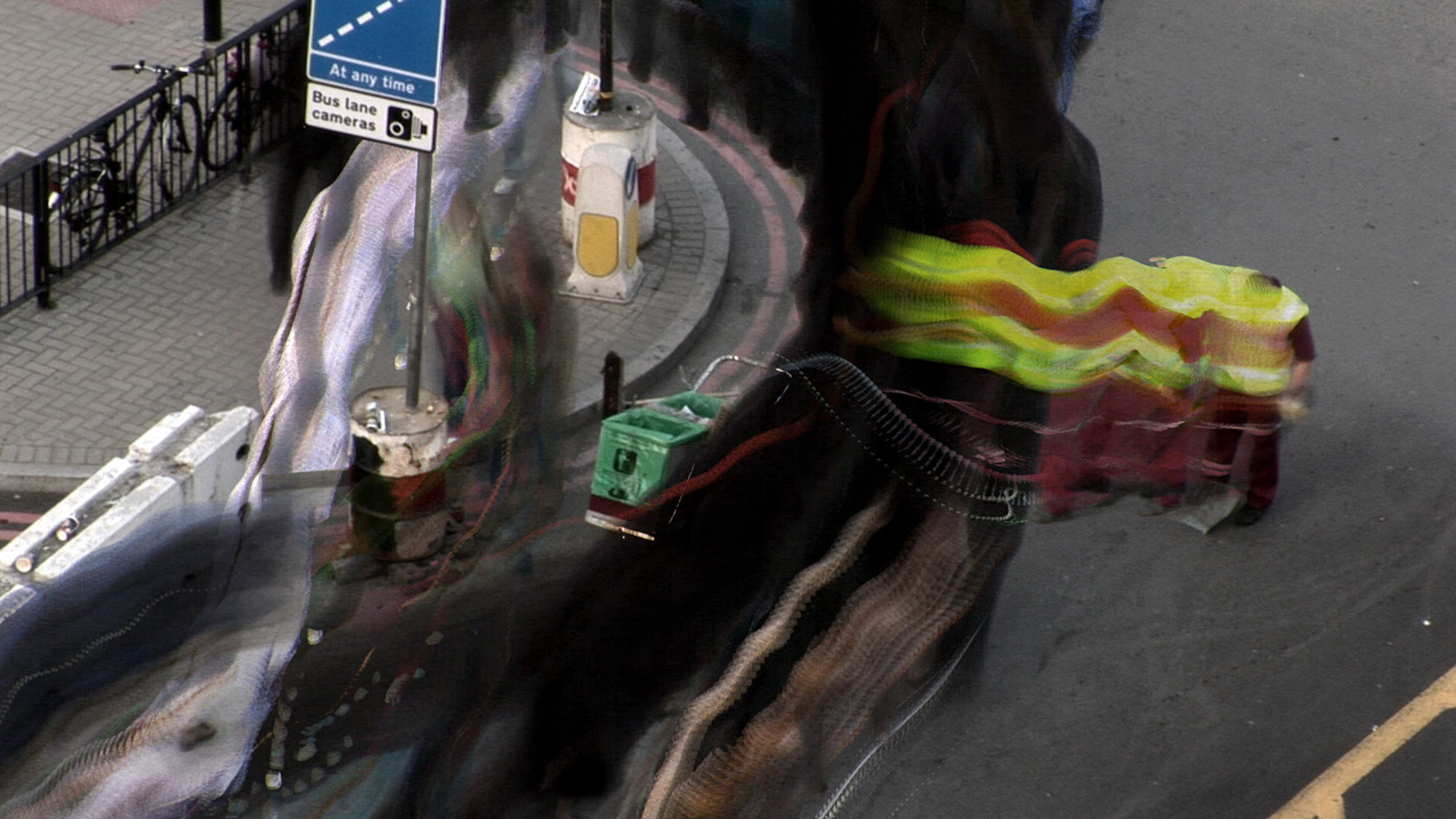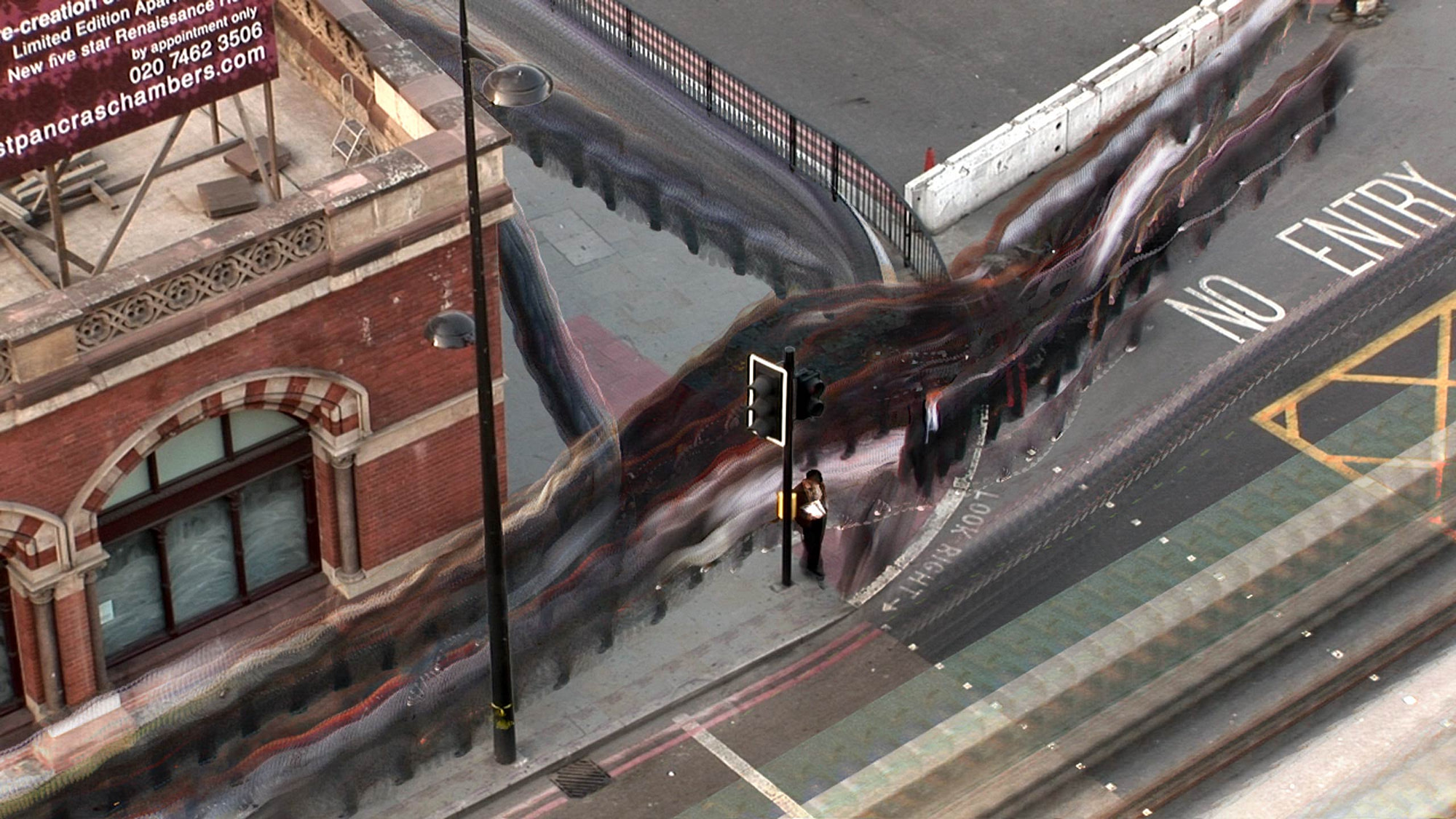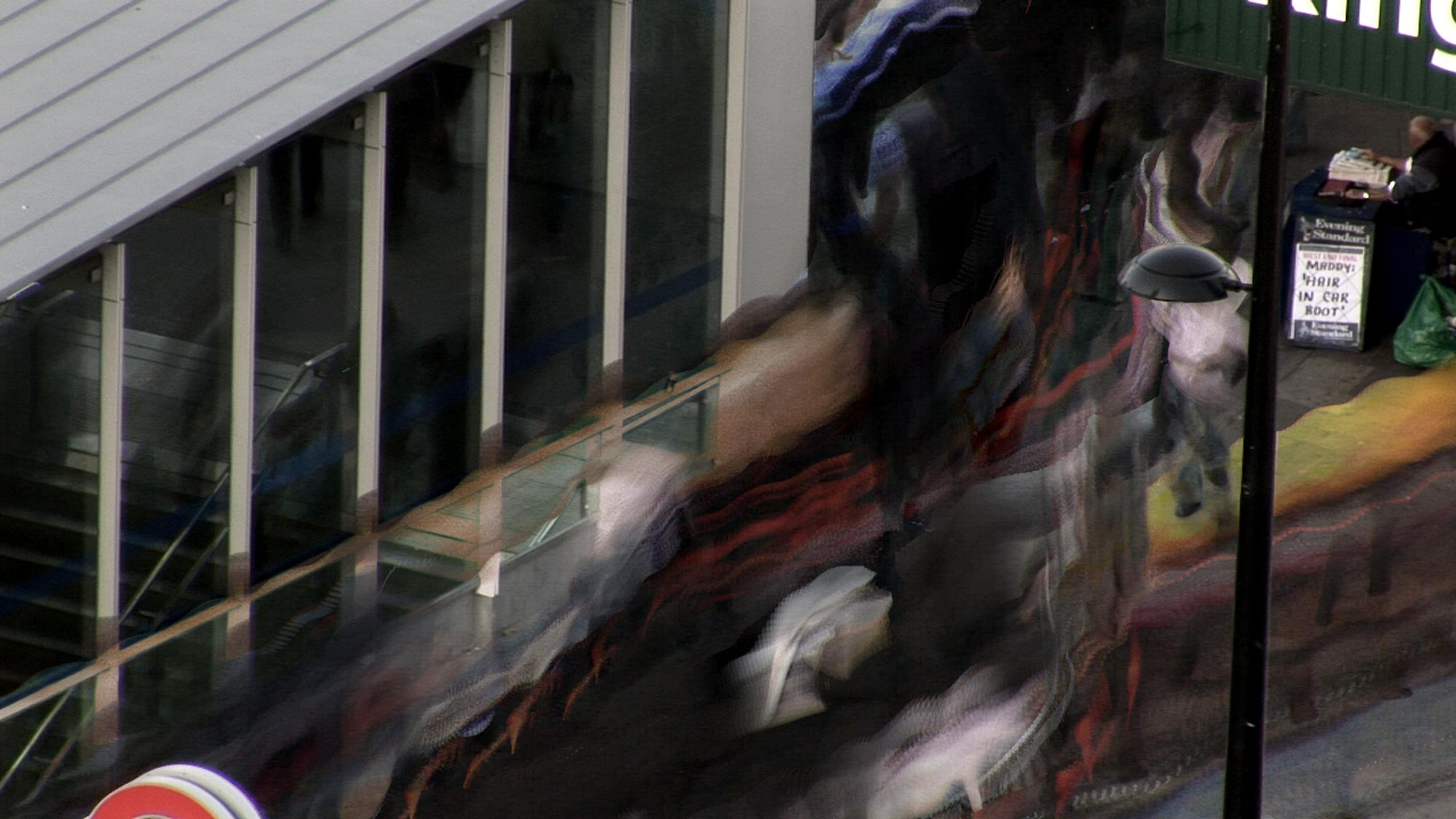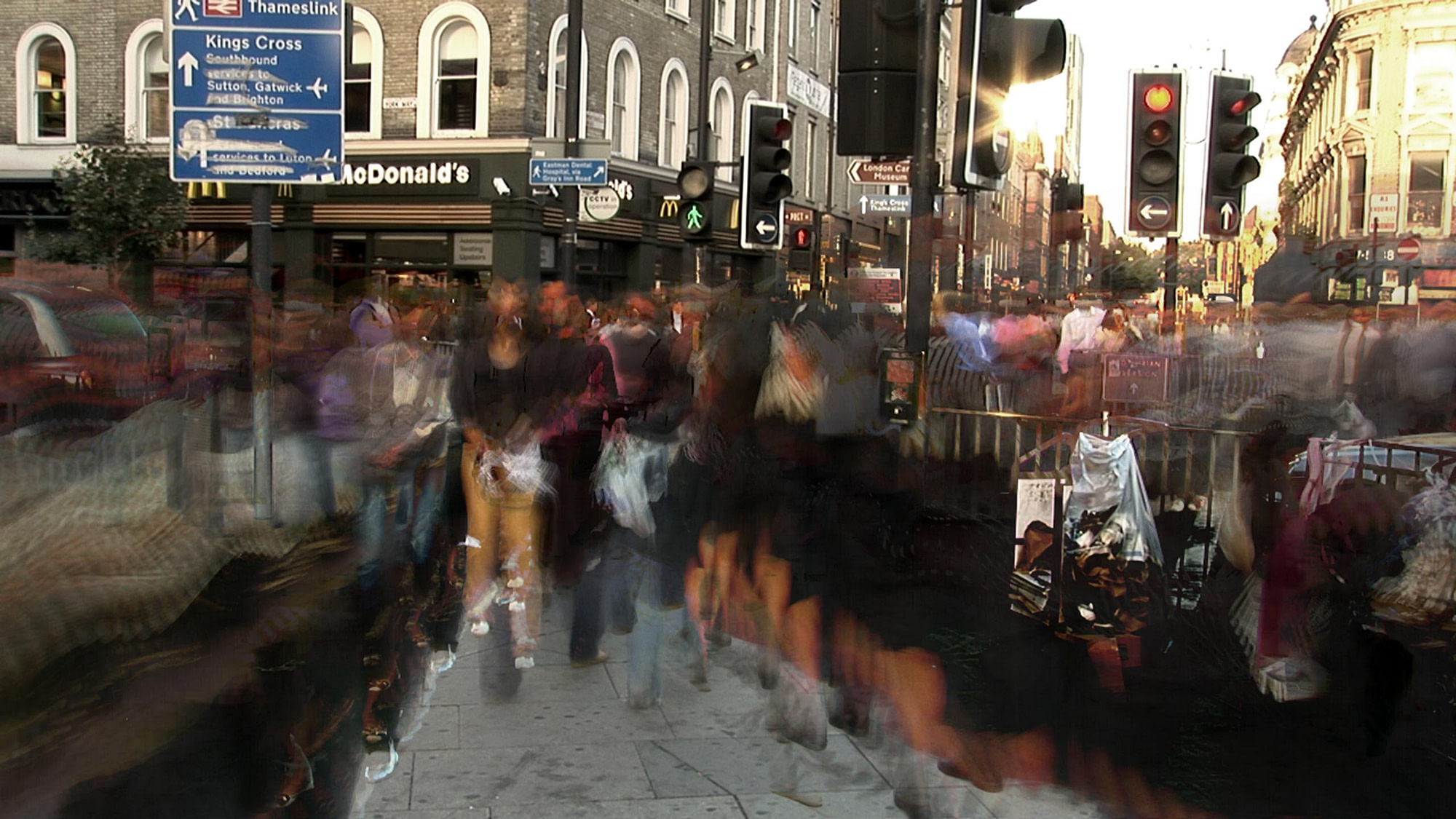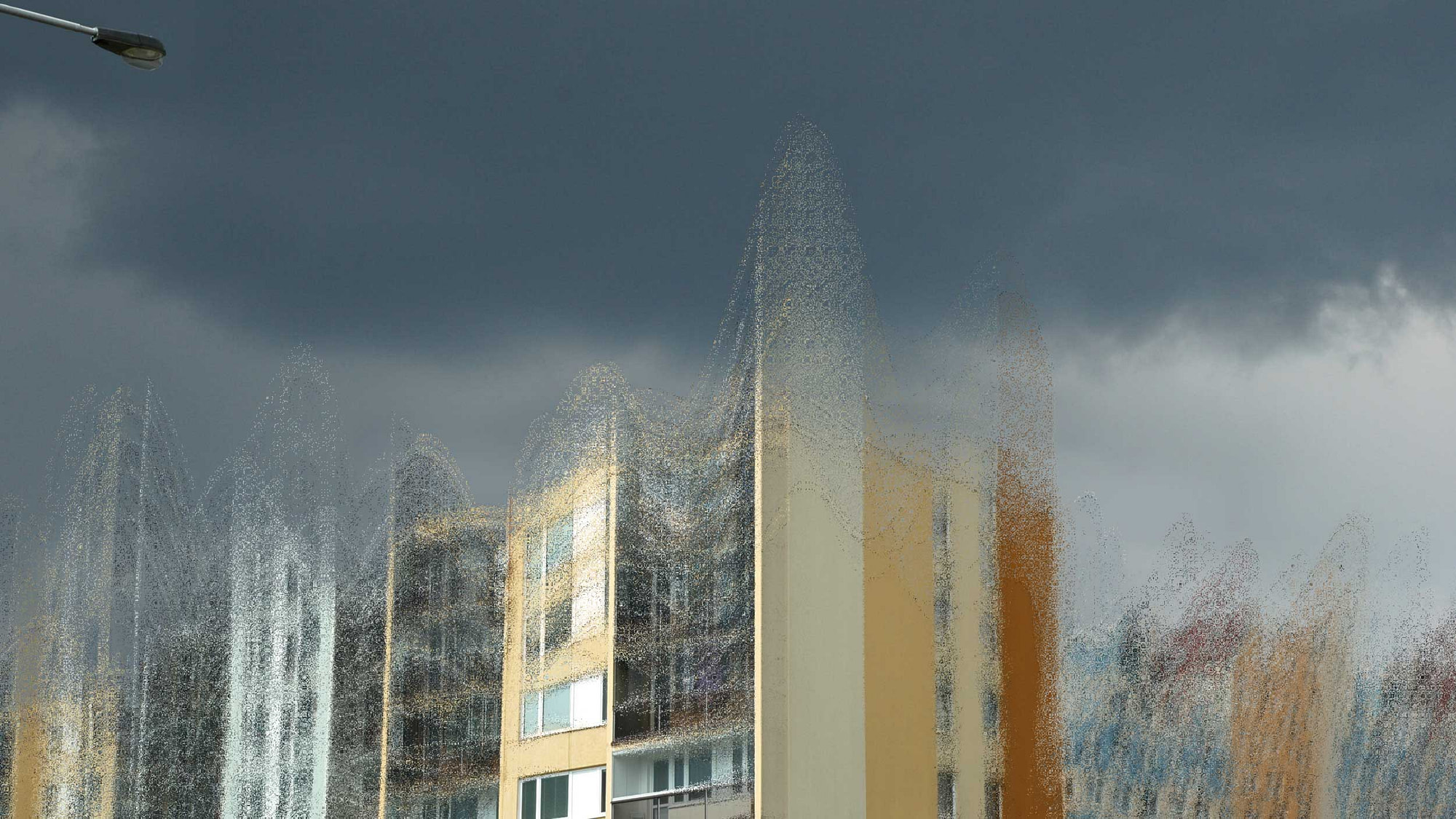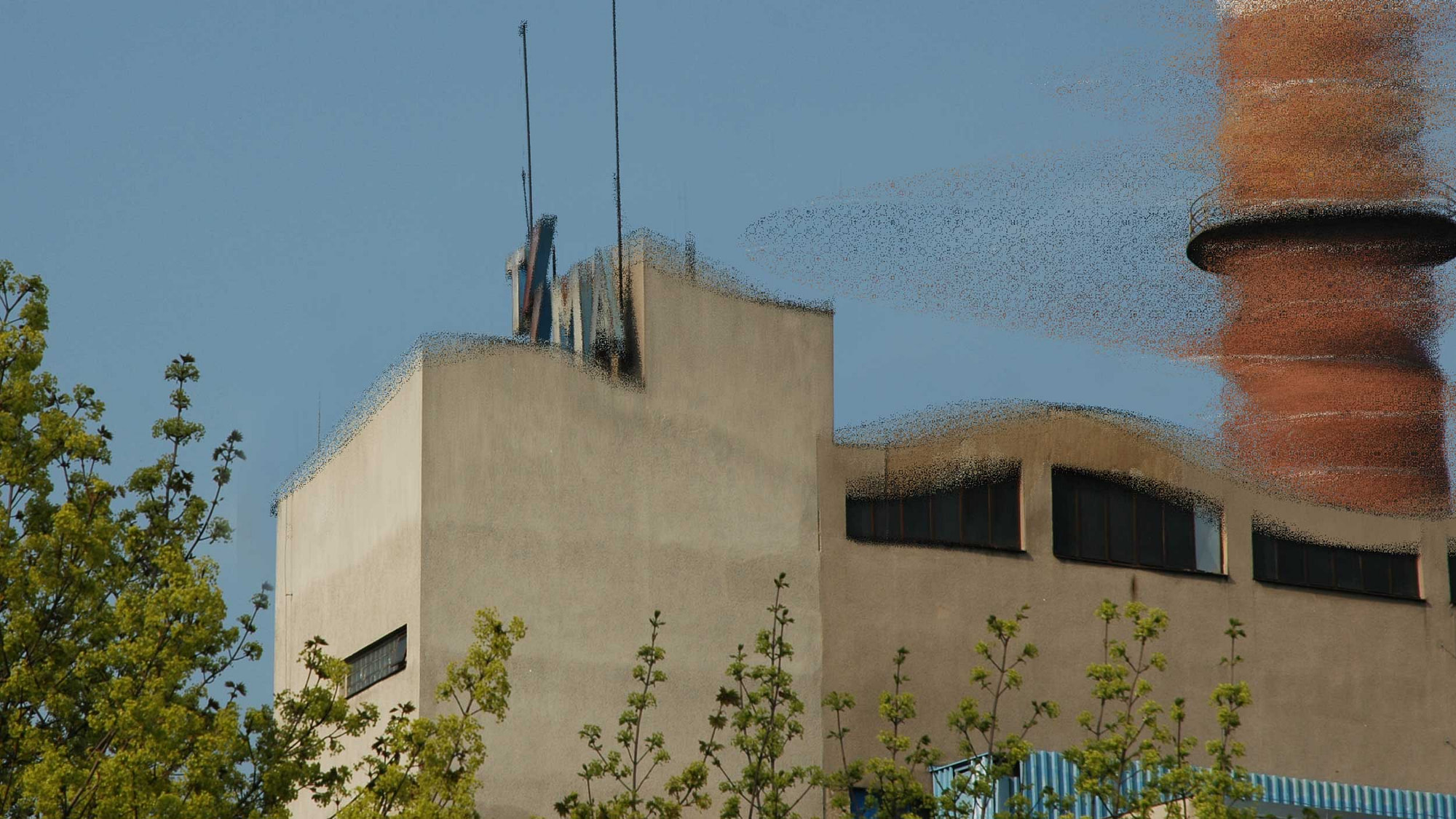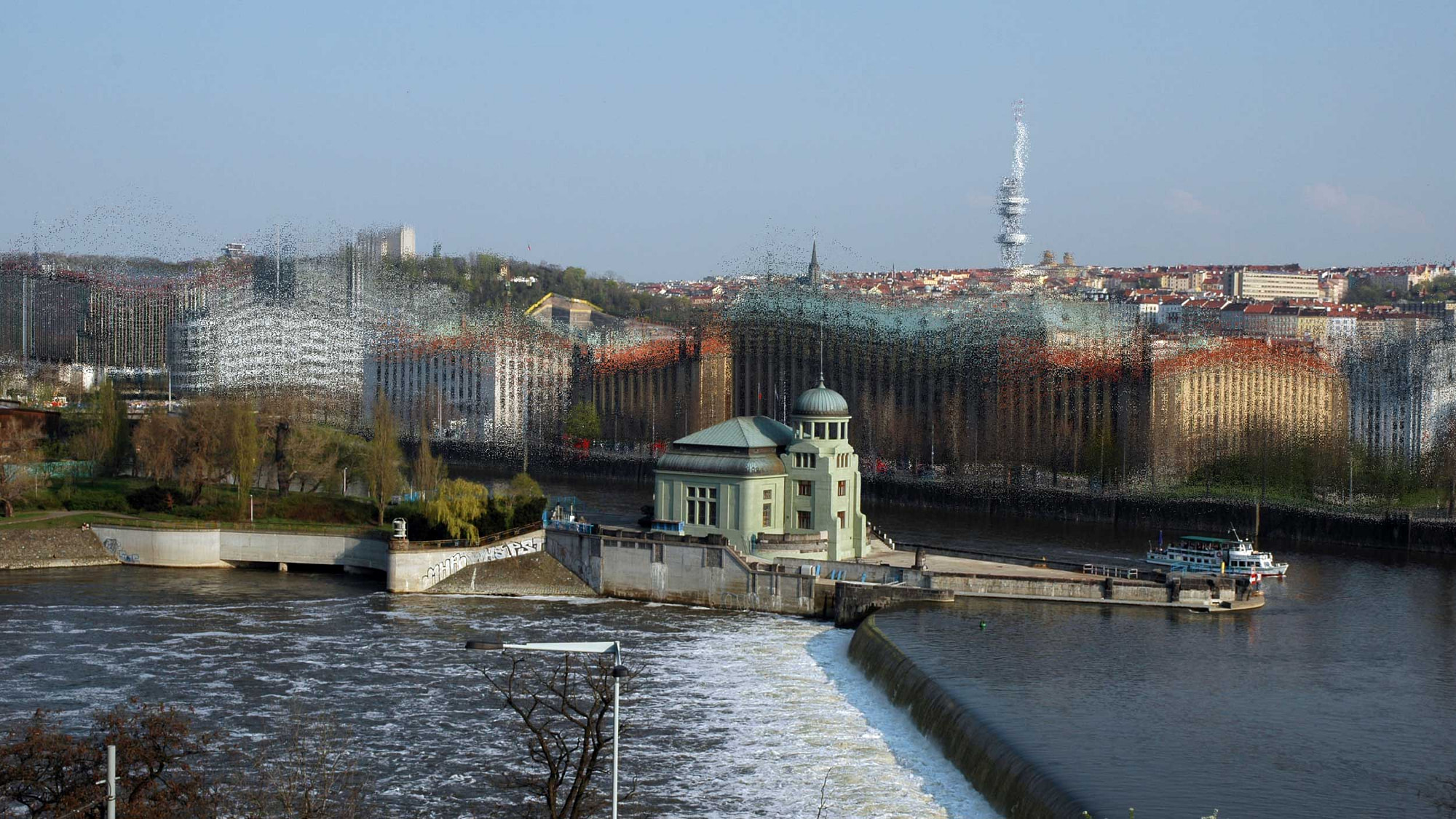20Hz has been awarded the Quantum Shorts prize.
Author: semiconductor
Semiwild Garden
Semiwild Garden, Kouvola Art Museum, Finland. Group show exhibiting Heliocentric.
Open Media Festival, Singapore
Singapore Open Media Art Festival. Exhibiting Black Rain.
Creative Applications Network
Post on Semiconductors Catching the Light, by Alexander Scholz, Creative Applications Network.
Multiplace Festival
Multiplace Festival, Bratislava, Czech. Screening 20Hz, Puffed Rice and A-Z of Noise.
Parallel Screen
Suburban PS, Rotterdam, Netherlands. Showing Heliocentric.
Ars Jury 2015
Semiconductor are on the Prix Ars Electronica 2015 Jury for Computer Animation / Film / VFX
Pump House Gallery
3 Branches of the Same Tree, Pump House Gallery, London. Group show with newly commissioned work.
Parallel Screen
Parallel Screen, on-line screening space of Suburban PS, Rotterdam, Netherlands. Showing Some Part of Us.
Quantum of Disorder
Quantum of Disorder, Museum Haus Konstruktiv, Zurich. Group show exhibiting Magnetic Movie.
FODST
Shortlisted for the Forest of Dean Sculpture Trail
MIRAJ now online
Now on-line, Moving Image Review & Art Journal, Volume 2 Number 2, Intellect Journals. Semiconductor article. Read the article: The meta-physics of data: Philosophical science in Semiconductor’s animated videos by Lilly Husbands.
Art and Science in Motion
Art and Science in Motion, Visual Voice Gallery, Montreal. Group show exhibiting Black Rain.
LAB 11
LAB 11, Arts Journal featuring Cosmos and 20Hz.
Catching the Light
2014
multi-channel HD moving image with 6 metre wide Alucore screens
A Semiconductor work by Ruth Jarman and Joe Gerhardt.
Catching the Light is a moving image installation which explores how science and technology frame our experiences of the natural world.
Created using visual data collected by space telescopes, the six metre wide projection is made up of thousands of images which have been assembled to create time-lapse sequences. By collaging these images of space together, Semiconductor have disrupted their original spatial relationships, to create new patterns and points of reference. They have, in effect, remapped the sky.
By collecting the data in its rawest form Semiconductor are able to present it as the telescope captured it. Ordinarily scientists would remove any noise, anomalies or signatures of the technology associated with the capturing process, but Semiconductor have embraced these artefacts, using them to remind us of how our perception of deep space is framed by the tools and processes of science.
The shape of the screens reflect the space observatories’ image capturing process: as they photograph chosen parts of the sky, the trail of images produce assorted shaped arrays, which are then used as points of reference in the data archives. Semiconductor have combined three of these arrays in their native format to make the screen composition. Used in this way they become portholes or windows into the universe, they also suggest that what we are seeing is only a part of a much larger picture.
The screens are installed away from the wall to create floating objects. The aluminium composite material used to fabricate them is commonly used in the production of scientific objects sent into space; as well as being light weight and strong it typically bears its honeycomb innards revealing its workings. The matt black surface of the screen resonates with how scientists and engineers use the mattest of blacks in the production of space optics to absorb unwanted light.
The four channel sound runs along the width of the screen, shifting as events appear and disappear. Using the luminescence of the image to create and control sound, the visual events carve a sonic space out of a field of noise, producing a singing universe of harmonic tones, reminiscent of radio telescope data translated into audible frequencies.
Semiconductor are interested in how technology, made to study nature, mediates our experiences and understanding of it. Here, by employing the products of science they have created an interpretation of deep space framed by the technology that is made to capture it, leading us to question what we are experiencing.
Catching the Light is commissioned by ArtScience Museum at Marina Bay Sands in Singapore for Da Vinci: Shaping the Future exhibition, 2014-2015.
Data obtained from the Mikulski Archive for Space Telescopes (MAST)
Programmer Julian Weaver
Currently fundraising for production of single channel version. If you’re interested in supporting this please get in in touch.
Guardian Guide – Cosmos
Guardian Guide – Cosmos – Jerwood Open Forest, UK
Sound and Image in Digital Media
Sound and Image in Digital Media, Oxford University Press, 2014. A Noisy Brush with the Infinite by Laura U. Marks.
Holo Magazine
Holo Magazine, Semiconductor, The (New) Age of Discovery.
Sound and Image in Digital Media
Sound and Image in Digital Media, Oxford University Press, 2014. A Noisy Brush with the Infinite by Laura U. Marks.
Technoetic Arts Journal – Semiconductor Essay by Inge Hinterwaldner
Technoetic Arts Journal – Semiconductor Essay by Inge Hinterwaldner
Cosmos
2014
sculpture
A Semiconductor work by Ruth Jarman and Joe Gerhardt.
Cosmos is a two metre spherical wooden sculpture that has been formed from scientific data made tangible. Interested in the divide between how science represents the physical world and how we experience it, Semiconductor have taken scientific data as being a representation of nature and are exploring how we can physically relate to it.
Located in the Forestry Commissions Alice Holt Forest, U.K., the sculpture is made from one year’s worth of measurements of the take up and loss of carbon dioxide from the forest trees, collected from the top of a 28m high flux tower located nearby in Alice Holt Research Forest.
To reveal the visual patterns and shapes inherent in the data Semiconductor developed custom digital techniques to translate the data from strings of numbers into three-dimensional forms. The result is complex interference patterns produced by the waveforms and patterns in the data.
Through this process of re-contextualising the data it has becomes abstract in form and meaning, taking on sculptural properties. These sculptural forms become unreadable within the context of science, yet become a physical form we can see, touch, experience and readable in a new way. Here, humanising the data offers a new perspective of the natural world it is documenting.
The definition of cosmos is a complete, orderly, harmonious system and here refers to the sources of the combined data which work in harmony to make the forest what it is.
Cosmos is commissioned through Jerwood Open Forest, a partnership between Jerwood Charitable Foundation and Forestry Commission England.
Semiconductor would like to thank:
Matt Wilkinson, Forest Research, Forestry Commission England for the data.
Julian Williams, Alice Holt Forest
Richard Barrass, Civil Engineer
Matt Risdale and Karn Sandilands, Millimetre, fabricators of Cosmos
Penny Harris, Parker Harris, Project managers
Hayley Skipper, Forestry Commission England
WUP Doodle, CNC machining
ArtScience Museum Singapore
Semiconductor have been commissioned by ArtScience Museum, Singapore to realise a new installation work Catching the Light, as part of the exhibition Da Vinci: Shaping the Future.
Quantum Entanglement
Quantum Entanglement, Laboratoria, Moscow. Group show exhibiting stereoscopic version of 20Hz.
Velocity
Velocity, The Australian National University Drill Hall Gallery, Canberra. Group show exhibiting Brilliant Noise and Black Rain.
Open Jerwood Forest launch
Semiconductor will launch their first public sculpture, commissioned by Jerwood Open Forest, October 2014.
Nuit Blanche Paris
Semiconductor will premiere Worlds in the Making, their new moving image performance at PariScience as part of Nuit Blanche, Paris 2014.
Carroll / Fletcher
Carroll / Fletcher On Screen in association with Animate Projects. Group show exhibiting Magnetic Movie.
Imagining Deep Time
Imagining Deep Time, National Academy of Sciences, Washington DC, USA. Group show exhibiting Subterranean (Seismic Blues).
Play of Light
2014
site specific two-channel moving image work
A Semiconductor work by Ruth Jarman and Joe Gerhardt.
Play of Light is a site specific, two channel moving image installation commissioned for the newly renovated brutalist Chichester Festival Theatre. Incidental in nature, this art work explores Moya and Powell’s architectural vision through animated sequences of projected light and shadows.
The shadow sequences move slowly but perceptibly as if cast by time-lapse animations of the sun or passing vehicles. As the light source moves, layers of the architecture interact and shift across each other, producing animated shadows. Caused by the phenomena of motion parallax they abstract the architecture, to create new forms and shifting patterns. The slow motion of the shadows allow for contemplation of these choreographies, as they morph and merge to reveal the natural rhythms of the architecture.
Working with a digital architectural model of Chichester Festival Theatre, Semiconductor created an artificial sun, which they animated to cast time-lapse shadows through the building. By physically deconstructing the model into many scenes, they have created multiple time-lapse sequences, which offer new and familiar viewpoints through the building, encouraging a reconsideration of the architectures formal aspects.
Motion introduces a new dimension to the architectural stage, literally bringing the building to life. By transforming the enclosed static condition of architecture to one which is open and dynamic, Semiconductor have made a kinetic sculpture on an architectural scale, which alters our experience of the building.
Optical nuances of light have been mimicked to create an authentic play of shadow and light; subtle phenomena such as blurring, bleeding and visual noise have been employed to play to the eyes sensitivities. Colours within the fabric of the building have been mirrored in the work and expanded on as a play on theatrical stage lighting: the building has become performer.
The digitally animated shadows are projected onto two interior rough concrete walls, which mirror each other. Each wall has its own distinct projection which explores each scene from a differing angle. The shadows appear as if they are being cast in situ: echoing elements of the surrounding environment, they fall incidentally on the walls.
Play of Light was commissioned by Chichester Festival Theatre, UK.
Technoetic Arts Inge essay
Technoetic Arts: A Journal of Speculative Research, Volume 12, 2014, Intellect Journals. Semiconductor Article: Semiconductor’s landscapes as sound-sculptured time- based visualizations by Inge Hinterwaldner.
InsideOut, Introspections, Hackney Picturehouse
The RCA presents Inside/Out: Introspections, Hackney Picturehouse, London. Screening Black Rain. Q+A with Tate Assembly Curator Andrew Vallance and Semiconductor.
Awarded Jerwood Open Forest Commission
Semiconductor have been awarded a Jerwood Open Forest Commission to realise their first public sculpture.
Chichester Festival Theatre Commission
Semiconductor have been awarded a commission for a site specific moving image art work at Chichester Festival Theatre, UK.
Conquest of Space
Conquest of Space, University of New South Wales Galleries, Australia. Group Show exhibiting 20Hz.
365 days of data
2013
Carbon Drawings
A Semiconductor work by Ruth Jarman and Joe Gerhardt.
365 Days of Data is a series of four carbon drawings made using data collected by four instruments installed on an experimental Flux Tower at the Alice Holt Research Forest, UK. Each drawing represents a year of data for each instrument; CO2, 3-d wind, temperature and water vapour. The drawings have been produced using custom techniques to translate the scientific data into tangible forms. The drawing process has been realised by scratching into carbon paper using a computational plotter. Semiconductor hand-made the carbon paper employing techniques used by volcanologists they met in Ecuador to record seismic events.
The hand-made quality of the carbon paper is employed to suggest the presence of the human observer trying to make sense of the world. Yet, there’s also a precision which comes with the data, bringing structure and rhythm and creating a sense of complexity to what we see. This conversation between analogue and digital plays with the divide between how science represents nature and how we experience it.
These carbon drawings form part of Semiconductors installation Data Projector.
Data Projector was made during a research and development period for Jerwood Open Forest and exhibited at Jerwood Space, London, January and February 2014.
Data courtesy of Matthew Wilkinson, Forest Research scientist.
Data Projector
2013
various lengths
multi-channel SD
A Semiconductor work by Ruth Jarman and Joe Gerhardt.
Data Projector is an installation which considers scientific data as a representation of nature. A wooden observation tower which once collected data in the heart of a forest, now projects it onto the gallery walls and into the space, serving as a symbol for human endeavour.
Through the course of capturing and processing the data, nature has taken on new forms now bearing the signature of human intervention; canopy and forest floor videos become snapshots of a forest’s yearly cycle through time-lapse capturing and appear as curious circular forms, we hear data which has been transformed into waveforms and brought into our audible range, and a series of sculptural drawings which image the same data. Through humanising the data in this way new perspectives are offered of the physical world.
There’s a sense of the hand made at work; the clunky tower and the hand-made carbon paper, suggesting the presence of the human observer trying to make sense of the world. Yet, there’s also a precision which comes with the data, bringing structure and rhythm and creating a sense of complexity to what we see and hear. This conversation between analogue and digital plays with the divide between how science represents nature and how we experience it.
Data courtesy of ‘Phenological Eyes Network’ (PEN), UK-Japan Collaborative Project. Many thanks to Matthew Wilkinson, Forestry Commission Scientist at Alice Holt Research Station.
Data Projector was made during a research and development period for Jerwood Open Forest and exhibited at Jerwood Space, London, January and February 2014.
Hamburg Jury
Semiconductor are on the Hamburg Short Film Festival jury.
Moving Image Review & Art Journal – Semiconductor Article by Lilly Husbands
Moving Image Review & Art Journal – Semiconductor Article by Lilly Husbands
Earth Sound Earth Signal: Energies and Earth Magnitude in the Arts
Earth Sound Earth Signal: Energies and Earth Magnitude in the Arts by Douglas Kahn.
Ars Jury
Semiconductor are on the Prix Ars Electronica Jury for Computer Animation / Film / VFX
Resonante Festival, Belgrade, Serbia.
Resonate Festival, Belgrade, Serbia. Semiconductor presentation on their work.
Vertigo Curitiba, Brazil
Vertigo, SIM Gallery, Curitiba, Brazil. Group show exhibiting 20Hz.
Borderline Festival 2014, Athens, Greece
Borderline Festival 2014, Athens Greece. Exhibiting 3 channel Worlds in the Making.
Assembly: A Survey of Recent Artists’ Film and Video in Britain 2008-2013
Assembly: A Survey of Recent Artists’ Film and Video in Britain 2008-2013. Tate Britain, Clore Auditorium and The Grand Saloon. Screening Black Rain and talking as part of a chaired discussion.
Basia interview for Jerwood Open Forest
An interview with Basia Lewandowska Cummings for Jerwood Open Forest.
Site Exploration, Phoenix, Leicester
Site Exploration, Phoenix Art Centre, Leicester, UK. Group show exhibiting a four channel version of our audio work Subterranean (Seismic Blues)
Jerwood Exhibition
Jerwood Open Forest, Jerwood Space, London. Group Show exhibiting new installation work: Data Projector.
HOLO Magazine
HOLO, a magazine exploring the convergence of art, science and technology. A feature on Semiconductor in their inaugural issue.
BBC Radio 4 / Hack My hearing
BBC Radio 4 programme Hack My Hearing by Frank Swain, featuring Semiconductors’ sound work.
http://visionquest.dinca.org/
DINCA Vision Quest 2013, Mana Contemporary, Chicago, USA. Screening Some Part of Us Will Have Become.
LIAF
London International Animation Festival, London, UK. Screening Magnetic Movie in ’10 best science fiction films’ programme.
Swarovski Digital Crystal, Beijing Design Week.
Swarovski Digital Crystal, Beijing Design Week.751 D-Park, Beijing, China. Exhibiting 4 channel installation, The Shaping Grows.
Access Festival, Pau France
Acces(s) Festival, Pau France. Group show exhibiting 3 channel Heliocentric installation and single channel Black Rain.
Crystallize, Group Exhibition
Crystallize, Old Billingsgate, London. Group show exhibiting 3 channel installation Worlds in the Making.
Semiconductor article in Moving Image Review & Art Journal
Moving Image Review & Art Journal, Volume 2 Number 2, Intellect Journals. Semiconductor article. Read the article here: The meta-physics of data: Philosophical science in Semiconductor’s animated videos by Lilly Husbands
Transmissions ’13: A Festival of Independent Cinema
Transmissions ’13: A Festival of Independent Cinema, New Delhi, India. Screening Magnetic Movie.
Winterhur Film Festival
Winterhur International Film Festival, Zurich, Switzerland. Screening Black Rain and Heliocentric.
Invideo Milan, Milan, Italy.
Invideo Milan, Milan, Italy.Screening 20Hz.
Maintenant Festival, Rennes, France.
Maintenant Festival, Rennes, France. Screening 20Hz.
Imagine Science Film Festival, New York, U.S.
The 6th Annual Imagine Science Film Festival, New York, U.S.A. Screening 20Hz and Some Part of Us Will Have Become in competition.
Polly Maggoo / 20Hz award
20Hz awarded the short film prize at The 7th Rencontres Internationales Sciences et Cinemas (RISC), Marseille, France.
Natlab
Art, Technology & Innovation. Natlab, Eindhoven, Netherlands. Exhibiting Heliocentric,20Hz and Black Rain.
Breath of Charybdis
The Breathe of Charybdis, Centre Culturel Regional Dudelange Opderschmelz, Luxembourg. Screening 20Hz. Curated by Amelia Ishmael.
Radical Fictions
Radical Fictions, 4th Exhibition of Digital Art, Instituto Tomie Ohtake, São Paulo, Brazil. Group show exhibiting Worlds in the Making.
7th Recontres Internationales Sciences et Cinemas (RISE)
7th Recontres Internationales Sciences et Cinemas, Marseille, France. Screening Heliocentric, Black Rain and 20Hz in competition.
Ikono On Air Festival
Ikono On Air Festival, Screening 20Hz. Programme curated by Omar Kholeif.
5th Cairo Video Festival
5th Cairo Video Festival, Cairo, Egypt. Screening 20Hz.
Ars Electronica Symposium ‘Expanded Digital Animation: Mapping an unlimited landscape’
Ars Electronica Festival 2013, Linz, Austria. Symposium: ‘Expanded Digital Animation: Mapping an unlimited landscape’. Semiconductor will present a short history of their work in animation.
The meta-physics of data by Lilly Husbands
The meta-physics of data: Philosophical science in Semiconductor’s animated videos, Lilly Husbands
Moving Image Review & Art Journal · Volume 2 · Number 2
© 2013 Intellect Ltd Article. English language. doi: 10.1386/miraj.2.2.198_1
Shortlisted for Jerwood Open Forest
Shortlisted for Jerwood Open Forest: Semiconductor are one of five artists selected for a six month period of r+d to expand on the concept of their proposal to Jerwood Open Forest and explore potential sites.
Worlds in the Making, House of Electronic Arts Basel, Switzerland. Solo show + artist talk, coinciding with Basel Art Fair .
Let There Be Light, House of Electronic Arts Basel, Switzerland. Solo show + artist talk, coinciding with Basel Art Fair.
Exploratorium Residency
Exploratorium Artists in Residence, San Francisco, USA.
Ceclies symposium
Keynote Speakers at Nw/Thn: Documenting, Publishing and Disseminating Objects and Experiences Symposium. University of Sussex, UK.
Galápagos, CAM, Lisbon. Group show exhibiting Worlds in the Making, Seismograph Drawings and Lava Paintings.
Galápagos, CAM, Lisbon. Group show exhibiting 3 channel Worlds in the Making, Seismograph Drawings and Flow Maps.
The Shaping Grows, Exploratorium, San Francisco, USA. The Shaping Grows installation.
The Shaping Grows, Exploratorium, San Francisco, USA. The Shaping Grows installation.
Gareth Evans Essay
Imagined Realities – Semiconductor – Essay by Gareth Evans
The New Natural
The New Natural, Symposium and Installation of 20Hz. Stroud Valleys Artspace, Stroud,UK.
Flow, Just Flow: Variations of a Theme
Flow, Just Flow: Variations on a Theme, Joel and Lila Harnett Museum of Art, University of Richmond Museum, Virginia, USA. Group Show exhibiting 20Hz.
Space Odyssey 2.0, Z33 House for Contemporary Art, Hasselt, Belgium. Group show exhibiting Black Rain.
Space Odyssey 2.0, Z33 House for Contemporary Art, Hasselt, Belgium. Group show exhibiting Black Rain.
The 51st Ann Arbor Film Festival. Screening Some Part of Us Will Have Become, in competition.
The 51st Ann Arbor Film Festival, Ann Arbor, USA. Screening Some Part of Us Will Have Become in competition.
Oslo Lux 2013, Oslo, Norway. One day event on LIGHT, SPACE and TECHNOLOGY. Semicondcutor presentation.
Oslo Lux 2013, Oslo, Norway. One day event on LIGHT, SPACE and TECHNOLOGY. Semicondcutor presentation.
The Dark Universe, Sonic Acts Festival, New Arts Space, Amsterdam. Group show exhibiting Black Rain.
The Dark Universe, Sonic Acts Festival, New Arts Space, Amsterdam. Group show exhibiting Black Rain.
Film Comment Magazine, New York – Article
Film Comment Magazine, New York – Article
Neural.it Magazine – 20Hz
Neural.it Magazine – 20Hz
Film Comment Magazine, New York – Article
Film Comment Magazine, New York. Article on Semiconductor.
Earth Sound Earth Signal Book by Douglas Kahn. UC Press.
Earth Sound Earth Signal Book by Douglas Kahn. UC Press.
Not for Human Consumption, Cafe Oto, London, UK. Exhibition Launch with Semiconductor & Valentina Vuksic. Premiere of new sound work that aggregates seismic data on a global scale.
Not for Human Consumption, Cafe Oto, London, UK. Exhibition Launch with Semiconductor & Valentina Vuksic. Premiere of new sound work that aggregates seismic data on a global scale.
Galápagos, The Fruitmarket Gallery, Edinburgh, UK. Group show exhibiting Worlds in the Making and Seismograph Drawings.
Galápagos, The Fruitmarket Gallery, Edinburgh, UK. Group show exhibiting Worlds in the Making and Seismograph Drawings.
Illuminated, Quad Gallery, Derby, UK. Group show exhibiting Brilliant Noise. Review
Illuminated, Quad Gallery, Derby, UK. Group show exhibiting Brilliant Noise. Review
Animpact Festival, Seoul, Korea. Screening 20Hz in competition.
Animpact Festival, Seoul, Korea. Screening 20Hz in competition.
Braunschweig International Film Festival, Germany. Screening 20Hz in competition.
Braunschweig International Film Festival, Germany. Screening 20Hz in competition.
Digital Art Festival Taipei, Taiwan. Screening 20Hz.
Digital Art Festival Taipei, Taiwan. Screening 20Hz.
New York Film Festival: Views from the Avant Garde, New York, USA. Screening 20Hz.
New York Film Festival: Views from the Avant Garde, New York, USA. Screening 20Hz.
Union Docs, Brookly, NY. Group screening presented by Video Data Bank. Screening 20Hz and Heliocentric.
Union Docs, Brookly, NY. Group screening presented by Video Data Bank. Screening 20Hz and Heliocentric.
Kontraste Festival, Krems, Austria. Semiconductor presentation / interview and screening.
Kontraste Festival, Krems, Austria. Semiconductor presentation / interview and screening.
Digital Crystal: Swarovski at the Design Museum, Design Museum, London. Group show premiering new commission, The Shaping Grows.
Digital Crystal: Swarovski at the Design Museum, Design Museum, London. Group show premiering new commission, The Shaping Grows.
Field Conditions, San Francisco Museum of Modern Art, San Francisco, USA. Group show exhibiting 20Hz.
Field Conditions, San Francisco Museum of Modern Art, San Francisco, USA. Group show exhibiting 20Hz.
Aurora Picture Show, Houston, USA. Semiconductor screening programme and q+a.
Aurora Picture Show, Houston, USA. Semiconductor screening programme and q+a.
18th Bristol Encounters Short Film and Animation Festival, Bristol, UK. Screening 20Hz in competition.
18th Bristol Encounters Short Film and Animation Festival, Bristol, UK. Screening 20Hz in competition.
London International Animation Festival, UK. Screening 20Hz in competition.
London International Animation Festival, UK. Screening 20Hz in competition.
Split Film Festival, Croatia. Screening 20Hz.
Split Film Festival, Croatia. Screening 20Hz.
Ottawa International Animation Festival
Ottawa International Animation Festival, Intersections: Experimental Animation in the Third Dimension programme. Screening 20Hz, Magnetic Movie and 200 Nanowebbers.
Imagine Science Film Festival, Dublin, Ireland. Semiconductor programme + Q+A.
Imagine Science Film Festival, Dublin, Ireland. Semiconductor programme + Q+A.
Womad Festival, 20Hz installation.
Womad Festival, 20Hz installation.
Curtas Vila Do Conde, Portugal. Screening 20Hz in competition.
Curtas Vila Do Conde, Portugal. Screening 20Hz in competition.
Fest Anca, International Animation Festival, Zilina, Slovakia. Screening 20Hz in competition.
Fest Anca, International Animation Festival, Zilina, Slovakia. Screening 20Hz in competition.
Mistaken Prescence, Lincoln Priory, UK. Group show exhibting Indefatigable.
Mistaken Prescence, Lincoln Priory, UK. Group show exhibting Indefatigable.
Melbourne International Animation Festival, Australia. Screening 20Hz in competition.
Melbourne International Animation Festival, Australia. Screening 20Hz in competition.
Vienna Independent Shorts, Austria. Screening 20Hz in competition.
Vienna Independent Shorts, Austria. Screening 20Hz in competition.
Worldwide Short Film Festival Festival, Toronto, Canada. Screening 20Hz.
Worldwide Short Film Festival Festival, Toronto, Canada. Screening 20Hz.
Hamburg International Short Film Festival, Germany. Screening 20Hz in competition.
Hamburg International Short Film Festival, Germany. Screening 20Hz in competition.
Stuttgart International Festival of Animated Film, Germany. Screening 20Hz.
Stuttgart International Festival of Animated Film, Germany. Screening 20Hz.
RML Cine Chamber at Mutek 2012, Montreal, Canada. 10 screen Brilliant Noise.
RML Cine Chamber at Mutek 2012, Montreal, Canada. 10 screen Brilliant Noise.
European Media Art Festival 2012, Osnabrueck, Germany. Screening 20Hz.
European Media Art Festival 2012, Osnabrueck, Germany. Screening 20Hz.
‘ 20 Hz’ has been awarded the ‘Golden Gate Award for New Visions’ at San Francisco International Film Festival.
‘ 20 Hz’ has been awarded the ‘Golden Gate Award for New Visions’ at San Francisco International Film Festival.
San Francisco International Film Festival, USA. Screening 20Hz.
San Francisco International Film Festival, USA. Screening 20Hz.
AniFest, Teplece, Czech Republic. Screening 20Hz.
AniFest, Teplece, Czech Republic. Screening 20Hz.
Galapagos, Bluecoat. Liverpool, UK. Group show exhibiting Seismograph drawings.
Galapagos, Bluecoat. Liverpool, UK. Group show exhibiting Seismograph drawings.
’20 Hz’ has been awarded the ‘Art and Science Award’ at Ann Arbor Film Festival.
’20 Hz’ has been awarded the ‘Art and Science Award’ at Ann Arbor Film Festival.
Semiconductor have been awarded the Samsung Art + Prize.
Semiconductor have been awarded the Samsung Art + Prize.
Samsung Art + Prize, BFI Southbank, London. Exhibiting Worlds in the Making and 20 Hz.
Samsung Art + Prize, BFI Southbank, London. Exhibiting Worlds in the Making and 20 Hz.
Frankenstein’s Moon, interview for BBC Radio 4. Adam Rutherford explores the influence of astronomical and other celestial phenomena on the work of writers and artists.
Frankenstein’s Moon, interview for BBC Radio 4. Adam Rutherford explores the influence of astronomical and other celestial phenomena on the work of writers and artists.
41st International Film Festival Rotterdam, Netherlands. Premiering 20 Hz.
41st International Film Festival Rotterdam, Netherlands. Premiering 20 Hz.
Visualizing Sound, Laboral, Gijon, Spain. Group show exhibiting 20 Hz.
Visualizing Sound, Laboral, Gijon, Spain. Group show exhibiting 20 Hz.
Ann Arbor Film Festival, Ann Arbor, USA. Screening 20Hz in competition.
Ann Arbor Film Festival, Ann Arbor, USA. Screening 20Hz in competition.
Lovebytes, Sheffield, UK. Screening 20Hz
Lovebytes, Sheffield, UK. Screening 20Hz
Flatpack Festival, Birmingham, UK. Screening 20Hz.
Flatpack Festival, Birmingham, UK. Screening 20Hz.
Japan Media Arts Festival, Prix Ars Electronica screening Black Rain.
Japan Media Arts Festival, Prix Ars Electronica screening Black Rain.
Ives Ensemble, Amsterdam. Performance of John Cages ‘Atlas Eclipticalis’ and ‘Music for Five’ with Brilliant Noise and Black Rain screened alongside.
Ives Ensemble, Amsterdam. Performance of John Cages ‘Atlas Eclipticalis’ and ‘Music for Five’ with Brilliant Noise and Black Rain screened alongside.
Is this Thing On?, Contemporary Art Centre, Cincinnati, Ohio, USA. Group show exhibting Black Rain.
Is this Thing On?, Contemporary Art Centre, Cincinnati, Ohio, USA. Group show exhibting Black Rain.
Taxonomies, Pavillon d’exposition – Ecole d’art de Blois-Agglopolys, France
Taxonomies, Pavillon d’exposition – Ecole d’art de Blois-Agglopolys, France. Group show exhibiting Black Rain and Out of the Light installations. Including: Shaun Gladwell, Douglas Gordon, Pierre Huyghe, Mark Lewis, David Kidman, Tracy Moffat/Gary Hillberg, Peter Tscherkassky.
Changing Landscapes, Alaska Design Forum, Anchorage, Fairbanks and Juneau, Alaska. A series of Semiconductor lectures.
Changing Landscapes, Alaska Design Forum, Anchorage, Fairbanks and Juneau, Alaska. A series of Semiconductor lectures.
‘Invisible Fields’ Arts Santa Monica, Barcelona, Spain
‘Invisible Fields’ Arts Santa Monica, Barcelona, Spain. Produced by Arts Santa Monica in association with Lighthouse. Group show exhibiting Magnetic Movie and a new work, ‘20Hz‘. Co-commissioned by Arts Santa Monica and Lighthouse. Supported by British Council.
‘Solar Systems’ Phoenix Brighton, Brighton, UK. Curated by Lighthouse, Brighton. Semiconductor solo show.
‘Solar Systems’ Phoenix Brighton, Brighton, UK. Curated by Lighthouse, Brighton. Semiconductor solo show.
Nuit Blanche, Paris, France. Group Show exhibiting Heliocentric and Black Rain installations.
Nuit Blanche, Paris, France. Group Show exhibiting Heliocentric and Black Rain installations.
‘Worlds in the Making’ FACT, Liverpool, UK. Semiconductor solo show.
‘Worlds in the Making’ FACT, Liverpool, UK. Semiconductor solo show.
‘Star Voyager: Exploring Space on Screen’ ACMI, Australian Centre for the Moving Image, Melbourne, Australia. Group show exhibting Black Rain.
‘Star Voyager: Exploring Space on Screen’ ACMI, Australian Centre for the Moving Image, Melbourne, Australia. Group show exhibting Black Rain.
Festival De Basis, Soesterberg, The Netherlands. Heliocentric, three screen installation in a nuclear bunker.
Festival De Basis, Soesterberg, The Netherlands. Heliocentric, three screen installation in a nuclear bunker.
TAP, Southend, UK. Group show exhibiting Black Rain.
TAP, Southend, UK. Group show exhibiting Black Rain.
Meet the Artist, Phoenix Brighton, Brighton , UK. Semiconductor presentation during Solar Systems solo show.
Meet the Artist, Phoenix Brighton, Brighton , UK. Semiconductor presentation during Solar Systems solo show.
NOVA, Sao Paulo, Brazil. Semiconductor screening programme.
NOVA, Sao Paulo, Brazil. Semiconductor screening programme.
‘Our Origins’, Museum of Contemporary Photography, Columbia College Chicago, USA. Group show exhibiting Black Rain.
‘Our Origins’, Museum of Contemporary Photography, Columbia College Chicago, USA. Group show exhibiting Black Rain.
11th Seoul International New Media Festival (NeMaf 2011), South Korea. Heliocentric Installation.
11th Seoul International New Media Festival (NeMaf 2011), South Korea. Heliocentric Installation.
‘Watch me Move’, Barbican, London. Group show exhibiting Matter in Motion.
‘Watch me Move’, Barbican, London. Group show exhibiting Matter in Motion.
‘Worlds’, Williamson Gallery, Pasadena, USA. Group show exhibiting Black Rain.
‘Worlds’, Williamson Gallery, Pasadena, USA. Group show exhibiting Black Rain.
‘Halikonlahti’, Salo Veturitalli Art Musem, Finland. Group show exhibiting Heliocentric.
‘Halikonlahti’, Salo Veturitalli Art Musem, Finland. Group show exhibiting Heliocentric.
‘L’Objet Photographique, une Invention Permanente’, Maison Europeenne de la Photographie, Paris. Group show exhibiting Earth Moves and All the Time in the World.
‘L’Objet Photographique, une Invention Permanente’, Maison Europeenne de la Photographie, Paris. Group show exhibiting Earth Moves and All the Time in the World.
‘WANI’, FONDATION D’ENTREPRISE RICARD, Paris, France. Group show exhibting Black Rain.
‘WANI’, FONDATION D’ENTREPRISE RICARD, Paris, France. Group show exhibting Black Rain.
EMAF, Osnabrueck, Germany. Screening Heliocentric.
EMAF, Osnabrueck, Germany. Screening Heliocentric.
Vienna Independent Shorts, International Short Film Festival, Austria. Semiconductor are the ‘International Tribute Guests’ and will screen and present their work.
Vienna Independent Shorts, International Short Film Festival, Austria. Semiconductor are the ‘International Tribute Guests’ and will screen and present their work.
‘Wild Sky’, Edith Russ Haus Fur Media Kunst, Germany. Group show exhibiting Out of the Light. Catalogue here.
‘Wild Sky’, Edith Russ Haus Fur Media Kunst, Germany. Group show exhibiting Out of the Light. Catalogue here.
‘GATE(WAY)S’, KUMU Art Musem, Tallinn, Estonia. Group show exhibiting Magnetic Movie.
‘GATE(WAY)S’, KUMU Art Musem, Tallinn, Estonia. Group show exhibiting Magnetic Movie.
‘Space Odyssey’, Art Arsenal, Kiev, Ukraine. Group show exhibiting Black Rain.
‘Space Odyssey’, Art Arsenal, Kiev, Ukraine. Group show exhibiting Black Rain.
10th International Documentary Film Festival ‘Encuentros del Otro Cine’ EDOC10, Guayaquil, Ecuador. Screening Indefatigable.
10th International Documentary Film Festival ‘Encuentros del Otro Cine’ EDOC10, Guayaquil, Ecuador. Screening Indefatigable.
14th Media Art Biennale WRO 2011 Alternative Now, Wroclaw, Poland. Screening Black Rain.
14th Media Art Biennale WRO 2011 Alternative Now, Wroclaw, Poland. Screening Black Rain.
X_Science Cinema Between Science and Science Fiction, Genova, Italy. Screening Indefatigable in competition.
X_Science Cinema Between Science and Science Fiction, Genova, Italy. Screening Indefatigable in competition.
Environmental Film Festival, Hirshhorn Museum, Washington DC, USA. Semiconductor talk and screening.
Environmental Film Festival, Hirshhorn Museum, Washington DC, USA. Semiconductor talk and screening.
Art as a Way of Knowing Conference, Exploratorium, San Francisco, USA. Semiconductor participation and performance.
Art as a Way of Knowing Conference, Exploratorium, San Francisco, USA. Semiconductor participation and performance.
Dynamics of Collaboration and Forms of Creativity, British Council + Centre de Santa Monica, Barcelona, Spain. Semiconductor screening, performance and discussion.
Dynamics of Collaboration and Forms of Creativity, British Council + Centre de Santa Monica, Barcelona, Spain. Semiconductor screening, performance and discussion.
Fresh Moving Image Festival, Cardiff. Semiconductor are keynote speakers.
Fresh Moving Image Festival, Cardiff. Semiconductor are keynote speakers.
Smithsonian Artists Residency Fellowship
Smithsonian Artists Residency Fellowship, Semiconductor spent three months based in the Mineral Sciences Department at the Smithsonan
Natural History Museum, Washington DC, USA.
SESC Sao Paulo, Brazil
SESC Sao Paulo, Brazil. Three screen installation of Brilliant Noise and live soundtrack performance to Brilliant Noise, Black Rain and Heliocentric.
Semiconductor presentation at Royal College of Art, London.
Semiconductor presentation at Royal College of Art, London.
27th Kassel Documentary Film and Video Festival, Germany. Screening Heliocentric.
27th Kassel Documentary Film and Video Festival, Germany. Screening Heliocentric.
14th Jihlava International Documentary Film Festival, Czech. Screening Heliocentric.
14th Jihlava International Documentary Film Festival, Czech. Screening Heliocentric.
Indefatigable is now distributed by the British Council.
Indefatigable is now distributed by the British Council.
Arbor Film Festival, USA. Black Rain featured on DVD collection.
48th Arbor Film Festival, USA. Black Rain featured on DVD collection.
Mostra de ciencia e cinema, A Coruna, Spain. Screening a Semiconductor HD programme.
Mostra de ciencia e cinema, A Coruna, Spain. Screening a Semiconductor HD programme.
National Academy of Sciences, Washington DC. Semiconductor presentation.
National Academy of Sciences, Washington DC. Semiconductor presentation.
4th Cairo Video Festival, screening Matter in Motion and Time out of Place.
4th Cairo Video Festival, screening Matter in Motion and Time out of Place.
Some Part of Us Will Have Become
2012
03.00 minute TV edit + 05:45 minutes
HD single channel
A Semiconductor work by Ruth Jarman and Joe Gerhardt.
Some Part of Us Will Have Become is the lament of a lone robot bearing witness to a human-made disaster. Made using internet streams captured during the Deepwater Horizon disaster Semiconductor have created a science fiction, narrated by the voice of a remotely operated vehicle. Whilst declaring hopelessness and despair it attempts in vain to quell the disaster, systematically arranging human-made debris. Overwhelming in enormity, the endeavour ends……without success…
Some Part of Us Will Have Become is commissioned by Channel 4 and Arts Council England. Curated by Jacqui Davies and Mike Stubbs for Random Acts.
Text by Rowena Easton
Music by Hildur Gudnadottir. Published by Touch Music (MCPS).
Subterranean (Seismic Blues)
2012
40.00 minutes
sound work / multi channel
A Semiconductor work by Ruth Jarman and Joe Gerhardt.
performance / installation
Subterranean (Seismic Blues) is a sound work of seismic data made audible. It is composed of several types of seismic data; earthquake, volcanic and glacial, each which forms one of three sections of the work. Each section has distinct characteristics which can be associated with processes involved in the seismic propagation; the earthquake data evokes images of rocks crunching and splintering under huge amounts of pressure, the volcanic data gives the impression of lava resonating underground whilst the glacial data crackles and snaps bringing to mind melting ice.
By translating the seismic data into audible sound we are able to perceive subterranean movements which normally lie beyond our realm of experience. What we hear gives a sense of the Earth in motion; what ordinarily appears static is in a constant state of flux, encouraging us to imagine the mechanisms producing these epic sounds.
Through appropriating scientific data in this way, we are playing with the role science plays in our experiences of the natural world and questioning how it mediates them.
Premiered at Not For Human Consumption, Cafe Oto, November 2012.
Thanks to Julian Weaver and CRiSAP
On-line exhibition by Julian Weaver Not for Human Consumption.
Seismic data courtesy of the Iris (Incorporated Research Institutions for Seismology) Consortium
The Shaping Grows
2012
03.00 minute loop
4 channel HD + 4 channel audio
A Semiconductor work by Ruth Jarman and Joe Gerhardt.
The Shaping Grows is a computer generated animation of a subterranean cavern, brought to life through seismic data. Fantastical mineral crystals chaotically emerge and evolve according to the natural resonance of our shifting planet. These manifestations reveal atomic structures in their rawest form providing a window into the make-up of the physical world, where simple shapes come together to create intricate and complex formations. Here, Semiconductor draw a parallel between these basic molecular structures and the building blocks of the digital world, a world which has become the prism through which we increasingly experience reality.
The animation spans multiple time frames condensing geological events and processes through time-lapse techniques, allowing us to bear witness to mineral crystal growth patterns and the traces they leave behind. Mineral crystals can become consumed by larger formations or play host to wildly different structures, as physical conditions change over time and favour certain elemental and chemical reactions. Matter can also become trapped inside formations as they grow, creating ‘inclusions’. The resulting objects store the memory of their making and can be read to learn the story of their evolution and the conditions in which they grew.
Semiconductor have collected seismic data of recent earthquake activity from around the world and converted it into sound. This directly animates and controls the formations and provides a sound-scape of the Earth in a state of flux.
Commissioned by Swarovski for the exhibition Digital Crystal at the Design Museum, London.
Artists Statement
Artists Statement
20Hz
2011
05.00 minutes
HD + HD 3D single channel
A Semiconductor work by Ruth Jarman and Joe Gerhardt.
20 Hz is a moving image work by Semiconductor created using data of the Earth’s magnetic field as a geo-magnetic storm occurs in the Earth’s upper atmosphere; we hear tweeting and rumbles caused by incoming solar wind, captured at the frequency of 20 Hertz.
The data used was obtained from CARISMA (Canadian Array for Real-time Investigations of Magnetic Activity), a vast magnetometer network, which covers a large region of North America, from the Canadian Arctic down to Michigan. The devices collect the data from the Earth’s magnetosphere, where interactions occur between particles, magnetic fields and the solar wind. Some of the sounds recorded can be attributed to specific interactions occurring in the Earth’s upper atmosphere; the tweeting noises are a form of magnetic pulsation generated by various instabilities, the deep rumbles are from the high-speed solar wind flowing over the Earth’s magnetic field boundary and causing ripples to form.
To create 20 Hz Semiconductor developed custom programming and 3-D manipulation techniques to simultaneously realise audio and sculptural forms that are born directly from, and animated by, the data. As different frequencies interact both visually and aurally, complex interference patterns emerge, revealing the data as three-dimensional and tangible, like some kind of natural phenomena is playing out before our eyes.
With this work Semiconductor have chosen to reference imagery often employed in scientific visualisations – such as a black & white palette, a shallow depth of field – framing the data by the very tools of knowledge acquisition, drawing attention to a process of observation of natural phenomena itself. With this framing they seek to question how the anthropocentric view of events beyond human reach conditions our everyday experience of the natural world, highlighting the subjective nature of science.
Through this work Semiconductor continue to explore their interest in that which is outside of what is humanly perceivable, confronting the viewer with information which is ordinarily outside of a human scale, both of time and space. Detached from its scientific framework, data becomes a material in its own form, creating a space for reflection upon our relationship to phenomena at the extremities of our perception and positioning the human subject as part of the wider ecosystem of our universe.
Audio Data courtesy of CARISMA, operated by the University of Alberta, funded by the Canadian Space Agency. Special thanks to Andy Kale.
20Hz is co-commissioned by Arts Santa Monica + Lighthouse. Supported by the British Council. Commissioned for the Invisible Fields Exhibition at Arts Santa Monica, Barcelona. 2011-2012.
Awarded the ‘Golden Gate Award for New Visions’ at San Francisco International Film Festival, 2012.
Awarded the ‘Art and Science Award’ at Ann Arbor Film Festival, 2012.
Awarded first prize at Quantum Shorts 2014, Centre for Quantum Technologies, University of Singapore.
Worlds in the Making
2011
23.00 minutes
3 channel HD
A Semiconductor work by Ruth Jarman and Joe Gerhardt.
Worlds in the Making is an epic three channel moving image work that explores how we observe, experience and create an understanding of the physical origins of the world around us. By appropriating the tools and processes of volcanology to re-interpret the primordial landscapes of our volcanic planet, Semiconductor create a world slightly removed from the one we think we know, disrupting our every day assumptions of reality and questioning how science affects our experience of the natural world.
In the work the use of audio investigates our relationship with the physical, scientific and ephemeral nature of sound. Seismic data collected from beneath volcanoes and translated into audio evokes images of rocks crunching and grinding below the Earth and is used as a sculptural tool to generate elaborate CG animations of matter forming as mineral crystals. A scientist’s dialogue appears to guide us through extraordinary landscapes while Oren Ambarchi’s composition overwhelms as it brings an emotional connection to place.
The viewer is transported through dystopian landscapes, strangely exquisite animations, fantastical vistas, and natural phenomena to a world between science fiction and science fact.
Commissioned by Jacqui Davies and FACT, Foundation for Art and Creative Technology.Supported by Arts Council England. Gulbenkian Galapagos Artists Fellowship. Smithsonian Artists Research Fellowship.
Credits:
Music by Oren Ambarchi – Published by Touch Music (MCPS)
Richard S. Fiske – Smithsonian National Museum of Natural History, Mineral Sciences Department: for his oratory skills, field notes and methodical tephra sorting.
Ellen Thurneau – Smithsonian National Museum of Natural History, Mineral Sciences Department.
William G. Melson – Smithsonian National Museum of Natural History, Mineral Sciences Department: for his audio recordings of Arenal Volcano, Costa Rica erupting.
Jonathan M. Lees, Professor of Geological Sciences, University of North Carolina at Chapel Hill, USA. For his seismic data collected at Tungurahua volcano, Ecuador which features in the work..
Gregory P. Waite, Assistant Professor of Geophysics, Michigan Technological University, USA. For his seismic data from Fuego Volcano, Guatemala and Mount St. Helens, Washington, USA.
Jorge Ordonez at Instituto Geofisico, Quito Ecuador
Adam and Miriam at Instituto Geofisico, Quito Ecuador
Global Volcanism Program, Smithsonian National Museum of Natural History
Dennis Geist, Professor of Geology at the University of Idaho, USA
Gorki Ruiz at Instituto Geofisico, Quito Ecuador
Instituto Geofisico Volcano Observatory, Tungurahua, Ecuador
Scientific paper: Liquid Sulfur at Volcan Azufre, Galapagos Islands by W.E. Colony and Bert E. Nordle, 1973. Charles Darwin Research Station Library, Santa Cruz, Galapagos, Ecuador.
Produced by Jacqui Davies.
Wire Magazine Review – Solo Show FACT, UK.
Wire Magazine Review – Solo Show, FACT, UK.
Inferno Observatory
2011
various lengths
multi-channel SD
A Semiconductor work by Ruth Jarman and Joe Gerhardt.
Inferno Observatory is a multi-channel moving image work that explores humankind’s complex relationship with natural phenomena. During a fellowship at the Mineral Sciences Laboratory in the Smithsonian National Museum of Natural History, Washington DC, Semiconductor unearthed a 16mm volcano film archive shot by volcanologists in the field, it reveals spectacular occurrences and curious, obsessive and sometimes absurd processes of observing and studying volcanoes.
In the work, these films have been re-contextualised to emphasise and examine three distinct relationships; the erupting volcano as all-powerful and humbling, the spectacle as people gather to watch in collective amazement, photograph and be photographed and the taming of the volcano through scientific probing, measurement and human endeavour.
Archive footage courtesy of Mineral Sciences Department, Smithsonian National Museum of Natural History, Washington DC. Commissioned by Jacqui Davies and FACT, Foundation for Art and Creative Technology. Supported by Arts Council England. Smithsonian Artists Research Fellowship.
Credits
Global Volcanism Program, Smithsonian National Museum of Natural History, Scientists films, film archive.
Music by Peeesseye.
Andreas Bick, sound recording of Mt. Yassur Volcano, Tanna Island, Vanuatu.
Professor Willy Aspinall, Earth Sciences, Bristol University, UK. For his audio recording ‘St Vincent 1979’.
Jonathan M. Lees, Professor of Geological Sciences, University of North Carolina at Chapel Hill, USA. For his seismic data collected at Tungurahua volcano.
Gregory P. Waite, Assistant Professor of Geophysics, Michigan Technological University, USA. For his seismic data from Fuego Volcano, Guatemala and Mount St. Helens, Washington, USA.
Produced by Jacqui Davies.
Aesthetica Magazine Review – Solo Show,FACT, UK.
Aesthetica Magazine Review – Solo Show, FACT, UK.
Guardian Guide Review – Solo Show FACT, UK.
Guardian Guide – Solo Show – FACT, UK.
FACT, UK. Semiconductor Q+A.
FACT, UK. Semiconductor Q+A.
Crystallised
2011
various lengths
HD
A Semiconductor work by Ruth Jarman and Joe Gerhardt.
Crystallised is a series of digital mineral crystal animations generated and animated by sound recordings of ice crystals. Each structure takes on a different form, growing and evolving in exquisite detail. Mineral crystals reveal atomic structures in their rawest form and provide a window into the make-up of the physical world, where simple shapes come together to create intricate and complex formations. With this series of works, Semiconductor draw a parallel between these basic molecular structures and the building blocks of the digital world, which has become the prism through which we increasingly experience reality. The animations suggest pre-ordained patterns and order that appear to underlie everything and lead us to question our experiences of the very fabric of our world.
Guardian Guide Review – Solo Show, Northern Gallery for Contemporary Art.
Guardian Guide Review – Solo Show – Northern Gallery for Contemporary Art.
Indefatigable
2010
07.08 minutes
HD single channel
A Semiconductor work by Ruth Jarman and Joe Gerhardt.
A team is at work dissecting what appears to be a simple bush. The examination is carried out with such conviction and reverence, towards something which is seemingly so mundane, that the whole process appears quite absurd.
The focus becomes the actions and techniques employed; through observation and simple measuring devices they document their findings, communicating with subtle gestures, with only a few numbers and mumbles exchanged.
Sitting somewhere between science documentary and fiction, this work reflects on how we as humans construct methods to learn about the physical world around us.
Filmed during a Gulbenkian Galapagos Artists Residency. Thanks to Charles Darwin Foundation, Jorges Luis Renteria, Claudio Crespo, Eliana Boontti and Veronica Toval.
Premiered at Venice Film Festival 1-11 September 2010
Institute of Modern Art, Brisbane. Exhibition text by Douglas Khan.
Solo Show, Institute of Modern Art, Brisbane. Catalogue Essay by Douglas Khan.
Dazed and Confused Review. Solo Show, Northern Gallery for Contemporary Art, UK.
Dazed and Confused Review. Solo Show, Northern Gallery for Contemporary Art, UK.
Heliocentric
2010
15:00 minutes
HD single + multi-channel versions
A Semiconductor work by Ruth Jarman and Joe Gerhardt.
Heliocentric uses time-lapse photography and astronomical tracking to plot the sun’s trajectory across a series of landscapes. The entire environment is seen panning past the camera whilst the sun stays in the centre of each frame, enabling us to gauge the earth’s rotation and orbit around the sun. As the Suns light becomes disrupted by passing weather conditions and the environment through which we encounter it, it audibly plays them as if it were a stylus.
It is usually all but impossible to visualize how the earth moves around the sun, even though we know it to be true. Instead we ‘see’ the sun move around us. The ‘heliocentric’ view of the universe was debated from the third century BC onwards and remained contentious into modern times.
Shooting into the sun creates many intriguing artifacts; lens flares and glare spill over the landscape, white outs burn the image, and colours bleed into one, creating aureoles. The power of the sun still exceeds what both the human eye and the artificial eye of the camera can bear. And whilst our knowledge of the universe is ever-growing, we can only encounter and know it from our own humble vantage point.
Heliocentric is co-commissioned by AV Festival + Northern Lights Film Festival, UK.
Wonderland Magazine Article
Wonderland Magazine Article
Black Rain
2009
03:00 minutes / 17:00 minute loop
Single channel + installation
A Semiconductor work by Ruth Jarman and Joe Gerhardt.
Black Rain is sourced from images collected by the twin satellite, solar mission, STEREO. Here we see the HI (Heliospheric Imager) visual data as it tracks interplanetary space for solar wind and CME’s (coronal mass ejections) heading towards Earth.
Working with STEREO scientists, Semiconductor collected all the HI image data to date, revealing the journey of the satellites from their initial orientation, to their current tracing of the Earth’s orbit around the Sun. Solar wind, CME’s, passing planets and comets orbiting the sun can be seen as background stars and the milky way pass by.
As in Semiconductor’s previous work ‘Brilliant Noise’ which looked into the sun, they work with raw scientific satellite data which has not yet been cleaned and processed for public consumption. By embracing the artefacts calibration and phenomena of the capturing process we are reminded of the presence of the human observer who endeavours to extend our perceptions and knowledge through technological innovation.
Many thanks to: Chris Davis and Steve Crothers at the STFC Rutherford Appleton Laboratory, UK + Stuart Bale and Steven Christe at Space Sciences Lab UC Berkeley, USA
Out of the Light
2008
10:00 minutes
HD single channel floor projection + expanded version
A Semiconductor work by Ruth Jarman and Joe Gerhardt.
Over time, celestial patterns can reveal themselves through the play of light and shadow on the world around us. Out of the Light is a CGI time based sculpture, which recreates these shadow phenomena to explore how we can make sense of the world through observation; we experience a solar eclipse as observed through the branches of a tree, the rhythm of a city as its shadows phase from days to months to years and the transit of Venus observed through the construction of simple human made tools. Viewing these events with the unaided eye allows for anomalies in the quality and nature of light which are played upon here, to explore our perceptual sensitivities.
Commissioned by Arcadi, Paris
Solar audio courtesy of Alexander G.Kosovichev at Stanford University.
Installation photograph; Wild Sky at Edith Russ House For Media Art, Germany. Courtesy Franz Wamhof
Matter in Motion
2008
05:36 minutes
HD single channel
A Semiconductor work by Ruth Jarman and Joe Gerhardt.
The Universe is at once in a constant state of integration and disintegration. In searching for an understanding of the material world around us, Semiconductor have restructured the city of Milan. Displaying attributes more familiar to the molecular world its cityscapes have started to take on natural properties that reveal a city in pieces and generative forms that are in perpetual transformation.
Matter in Motion is a series of vignettes which originated as photographic panoramas taken around Milan. In each setting field recordings have been made and used to directly reconstruct the fabric of the city, introducing a temporal and spatial allusion. Give me matter and motion and I will construct the universe – Rene Descartes (1596-1650)
Commissioned by Careof Gallery Milan for Incontemporanea at La Triennale, Milan, Italy 2008.
Brilliant Noise Exhibition Text by Jack Sargeant.
Brilliant Noise Touring Exhibition Text by Jack Sargeant.
Magnetic Movie
2007
04:47 minutes
HD single channel
A Semiconductor work by Ruth Jarman and Joe Gerhardt.
The secret lives of invisible magnetic fields are revealed as chaotic ever-changing geometries . All action takes place around NASA’s Space Sciences Laboratories, UC Berkeley, to recordings of space scientists describing their discoveries. Actual VLF audio recordings control the evolution of the fields as they delve into our inaudible surroundings, revealing recurrent ‘whistlers’ produced by fleeting electrons . Are we observing a series of scientific experiments, the universe in flux, or a documentary of a fictional world?
An Animate Projects commission for Channel 4 in association with Arts Council England.
Shot at the NASA Space Sciences Laboratory, UC Berkeley, California, USA.
Many thanks to the following people:
Bill Abbett, David Brain, Bob Lin, Janet Luhmann, Stephen Mende, Forrest Mozer, Ilan Roth and Paul Thompson.
Also big thanks to the CSE team at the Silver Space Sciences Lab. UC Berkeley, USA.
VLF Recordings: Stephen P.McGreevy
Awarded the Nature ‘Scientific Merit Award’ by Imagine Science Film Festival, New York, 2009.
Purchased by the Hirshhorn Museum, Washington for the permanent collection, 2008.
Awarded ‘Best Film at Cutting Edge’ at the British Animation Awards, 2008.
Special Mention, ‘Best International Experimental Short’ at Leeds International Film Festival, 2008. Awarded ‘Best Experimental Film’ at Tirana International Film Festival, 2007.
Sceen Magazine – Worlds in Flux DVD Review
Sceen Magazine – Worlds in Flux DVD Review
Time Out of Place
2007
9:30 minutes
HD single channel
A Semiconductor work by Ruth Jarman and Joe Gerhardt.
The linear nature of time means we have a very fixed experience of it; constantly stuck in the present. To break free from these constraints Semiconductor have devised a process whereby we see the past present and future simultaneously. This act of seeing time reveals a different visual landscape than we are custom to, as multiple patterns of motion emerge to reveal a new rhythm to the city. Bearing witness to these events we perceive expanded moments within human history that lie beyond our everyday experiences.
Commissioned by The Big Chill with curator Alice Sharp to celebrate the opening of the Eurostar in the Arrivals programme, 2007: including a specially composed soundtrack by Red Snapper for the opening exhibition at the Big Chill House.
Magnetic Movie Text by Douglas Khan
Magnetic Movie Text by Douglas Khan
Double Acts Group Exhibition. Interview with Laura Sillars.
Double Acts Group Exhibition. Interview with Laura Sillars.
Acousticity
2006
02:40
HD single channel / surround sound
A Semiconductor work by Ruth Jarman and Joe Gerhardt.
Acousticity is a site specific animation commissioned by Prague Contemporary Art Festival, June 2006 as part of the show In a Silent Way: Susan Philipsz, Mark Bain, Carl Michael Von Hausswolff, Semiconductor, Martin Janicek, Yuji Oshima and Paolo Piscitelli. Curated By Daniele Balit.
During many excursions around the Czech capital, Semiconductor photographed and recorded the sights and sounds of the city; reaching from the suburbs and its factories to the city’s famous medieval centre. Each section of the film is controlled and animated by the sound that was recorded in situ at time of the photography, creating a physical connection between the images and the audio. The animated photos bring to life the fabric of the city using resonance to open a window onto the physicality of the structures themselves. The buildings appear to be exploding with energetic particles leaving it unclear whether we are looking at time speeded up, or an unseen moment in time.
Earthmoves
2006
05:02 minutes
HD single channel + 3 channel
A Semiconductor work by Ruth Jarman and Joe Gerhardt.
Earth Moves is an exploration into how unseen forces affect the fabric of our world. By collecting field recordings and using them to directly animate photographs of the landscapes from which they came, the limits of human perception are exposed, revealing a world which is unstable and in a constant state of animation. As the forces of acoustic waves come into play on our surroundings, we bear witness to vast undulating terrains, which challenge our everyday experiences of the world around us.
The South-East of England is explored through a series of five audio controlled photographic panoramas.
Earth Moves is an Arts Council England commission and is permanently installed at the South East offices, Brighton.
Earth Moves was developed from an idea initiated during participation in Greg Daville’s City Running, Brighton March 2006.
Three screen version of Earthmoves commissioned by Lovebytes.
Do You Think Science…
2006
12:15 minutes + 06:16 minutes
SD single channel
A Semiconductor work by Ruth Jarman and Joe Gerhardt.
By asking a group of space physicists the unanswerable Semiconductor reveal the hidden motivations driving scientists to the outer limits of human knowledge. In an attempt to find meaning within the question, they open a Pandora’s Box of limitations within science itself, revealing their own philosophical confines. Issues of faith, medicine and the laws of matter are raised to illustrate the infinitely complex universe we live in.
Made during an Arts Council England International Artists Fellowship Programme: Art and Space Science at the UC Berkeley Space Sciences Lab., University of California, U.S.A. In partnership with the Leonardo network and NASA.
Thanks to the following scientists at The Space Sciences Laboratory, UC Berkeley, California, USA:
Stuart Bale, David Brain, John Bonnell, Nahide Craig, Janet Luhmann, Bryan Mendez, Forrest Mozer, Stephen Mende, Ilan Roth, Chris Snead, Charles Townes and Andrew Westphal.
